An insight into the workings of a premier course from the professionals themselves.
A monthly account of the good and the bad, of green keeping. All of the team will have an input into their diary and should keep members and visitors up to date on the course and the future plans.
Greenkeeper's Diary
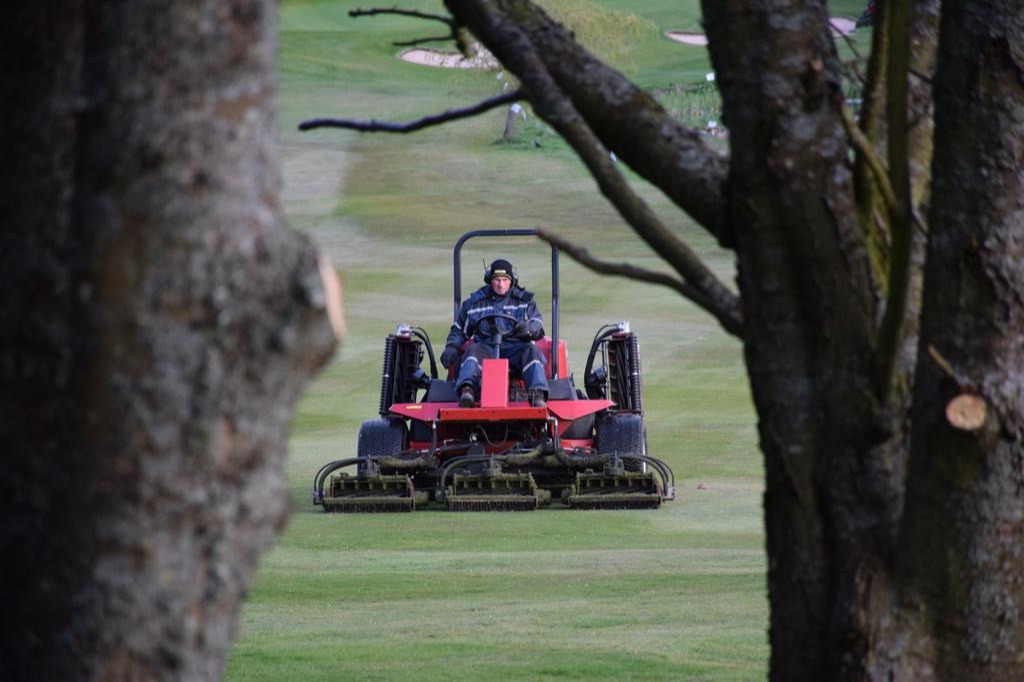
scroll down for more
October 2023 Report
After a Summer where we have seen high rain fall and the greens and the course in fine condition, away from the deluge in July, we are now in the lead up to our Winter season. The Autumn treatment has been successfully completed and the climatic conditions should allow the greens to recover quickly.
The treatment has been with the VGR followed by the application of over 70 tones of top dressing on all areas and an over seeding with bent grasses. There has also been an application of Winter feed which will help with the recovery. Although bent grass seed is very expensive the seed size is very small, so the application rate is small compared with other species.
A typical bent grass has 10,000 seeds per gram compared to 1,000 for a typical fescue. Although temperatures of 10 degrees or above and a period of 2 weeks are desirable for the germination this has been shortened to a week due to the higher temperatures we are currently experiencing, for the time of year.
The aim is still to have predominantly bent greens as this will provide the most consistent and disease resistant greens and the gradual replacement of Poa Annua should minimize the effect of flowering in the early season, or as we have suffered this year early middle and late season!
We have recently seen an attack of the fungal disease Anthracnose on our greens. Anthracnose occurs when the greens are under stress and normally during the late summer months when the temperatures are still high. It attacks Poa Annua grasses and while this leads to bare patches on the greens it does give us the opportunity to promote the spread of bent grasses.
The outbreaks have been treated but the effectiveness of synthetic fungicides has been short lived, often as low as 2 weeks. As this is an expensive treatment and several applications are necessary it may not be the most cost-effective treatment, so the continued change in the profiles of our greens will set them in good sted for the future.
As we move into the Winter period we will also be faced with the potential for attack from fusarium, which thrives under cooler damp conditions. The inclusion in maintenance program of cultural practices such as lightweight rolling, top dressing and mowing practices which incorporate optimum heights of cut will lessen disease pressure. However, these alone will not remove the potential for attack and other treatments will be necessary.
Many courses have turned to the use of organic fungicides to prevent and control disease and they have had good success with the treatments. Organic fungicides have the advantage of being environmentally friendly and perhaps more importantly they are cheaper and longer lasting.
We have started treatment with organic fungicides so we will be able to judge their effectiveness over the coming months. Potentially this will start to give us benefit in the tricky start to the season next year.
As soon as the mild growing conditions have subsided the Winter program will be underway and most of the work will be concentrating on trees. The area between the 4th and the 5th, will continue with the removal of the trees set out in the maintenance plan and look to limb all the trees that come into the playing area or for HS reasons.
The aim is not only to improve the appearance but also to reestablish the drainage that has become ineffective, in certain areas due to the changes in the waterflow around certain areas of the course. It is clear that the work done last Winter has improved the course and greens drainage, also in many other areas of the course. The area to the right of the 10th fairway is also to be cleared. Trees will be trimmed, and the top right-hand bunker smoothed a fraction more.
The wetland area to the left of hole 12 will also be cleared, to make it more beneficial in assisting the green in its drainage.
The fairways are again being brushed dressed and in places again seeded and it is clear that the program that was started three years ago is working and the reduction in wormcasts and generally untidy fairways is coming to fruition this in turn is improving the texture of the fairways.
The Winter season will inevitably see wet fairways and consequently deep divots and it is even more important during this period that we repair our divots using the divot mixtures, mats will be optional again and the temps have been cut a little bigger this year for when and if they are needed, thses also have been dusted and seeded.
We are seeing a large number of unrepaired pitch marks on the greens so please repair not only yours but also others that you find. Posts and ropes are now being put in place to direct traffic so please observe these to protect the course.
The team.
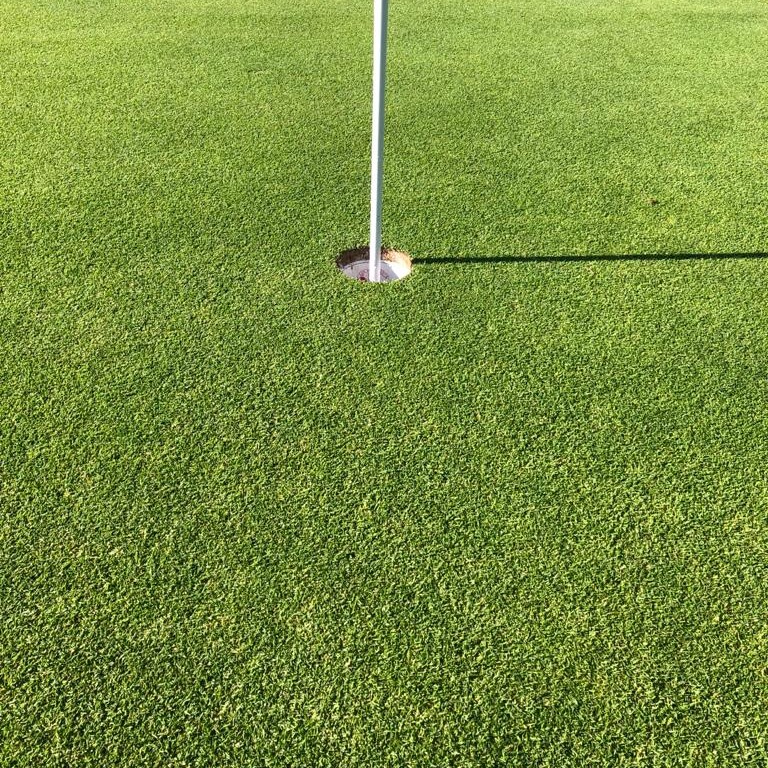
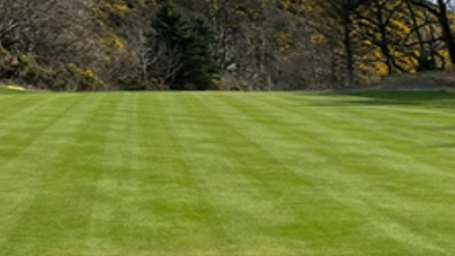
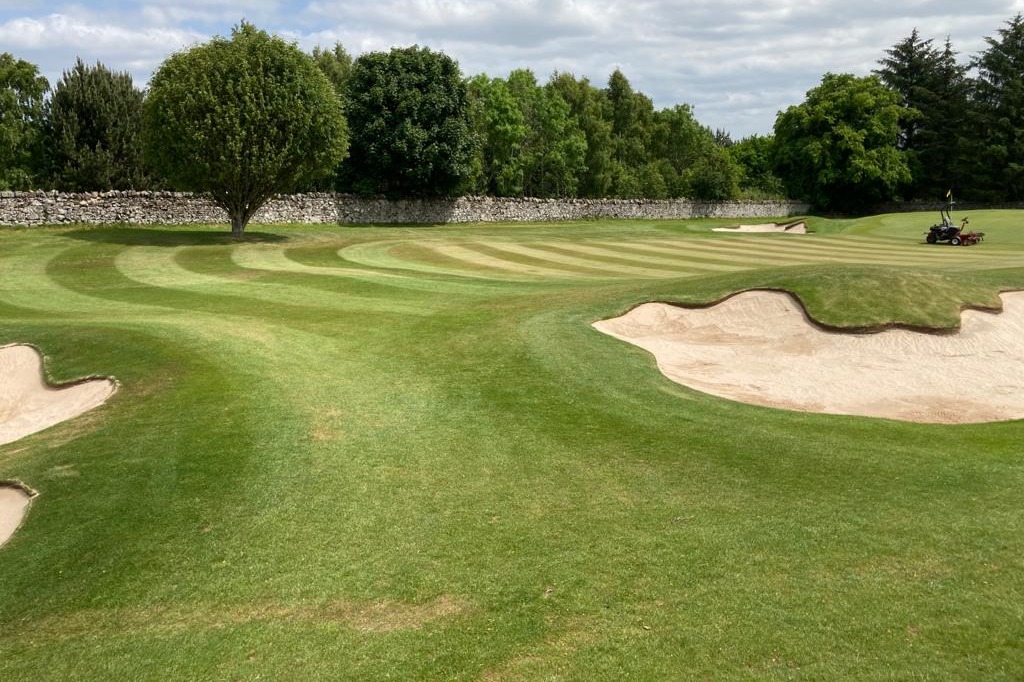
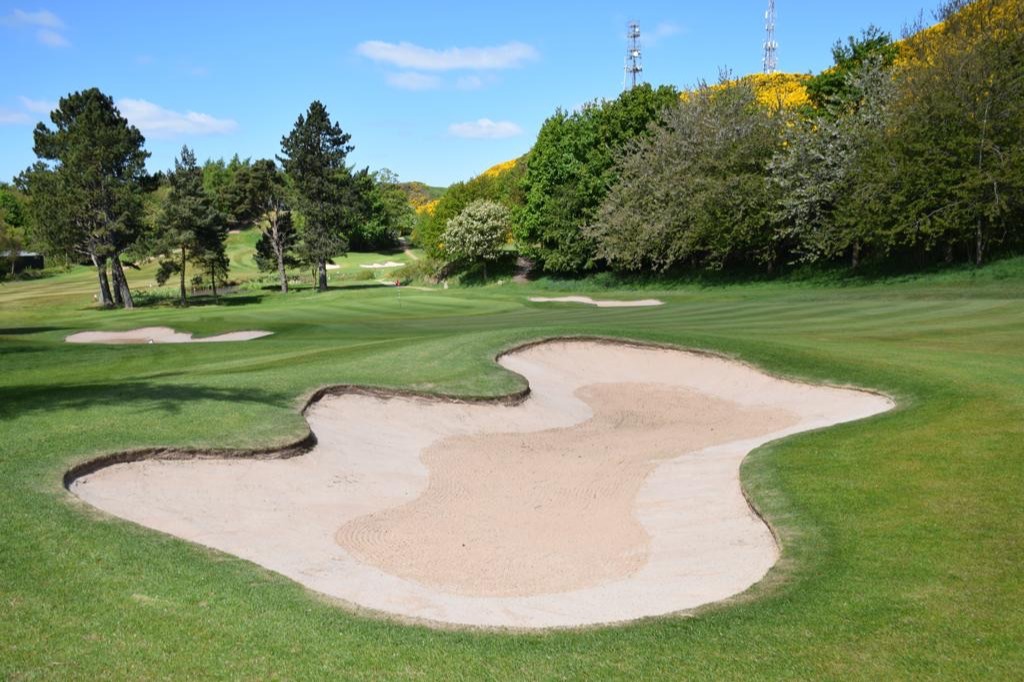
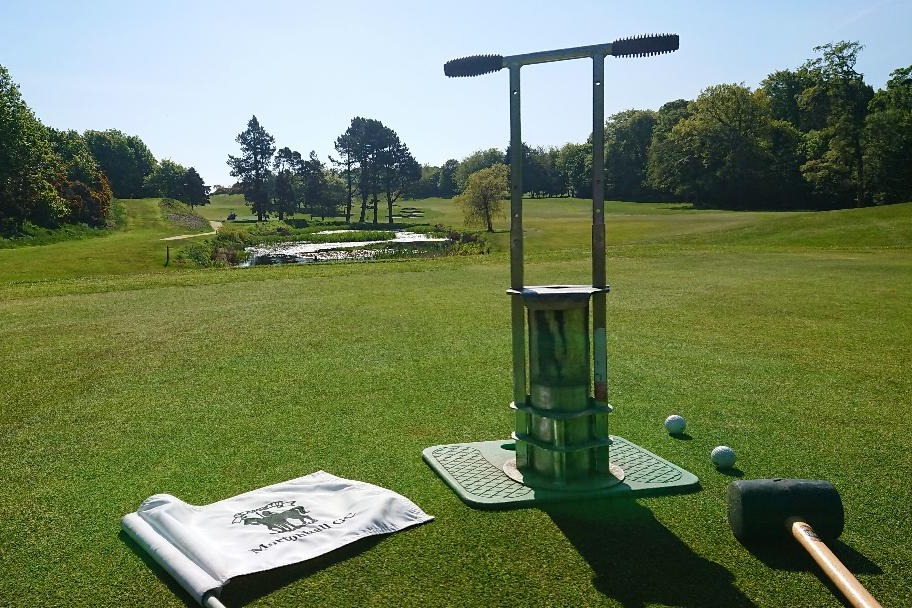
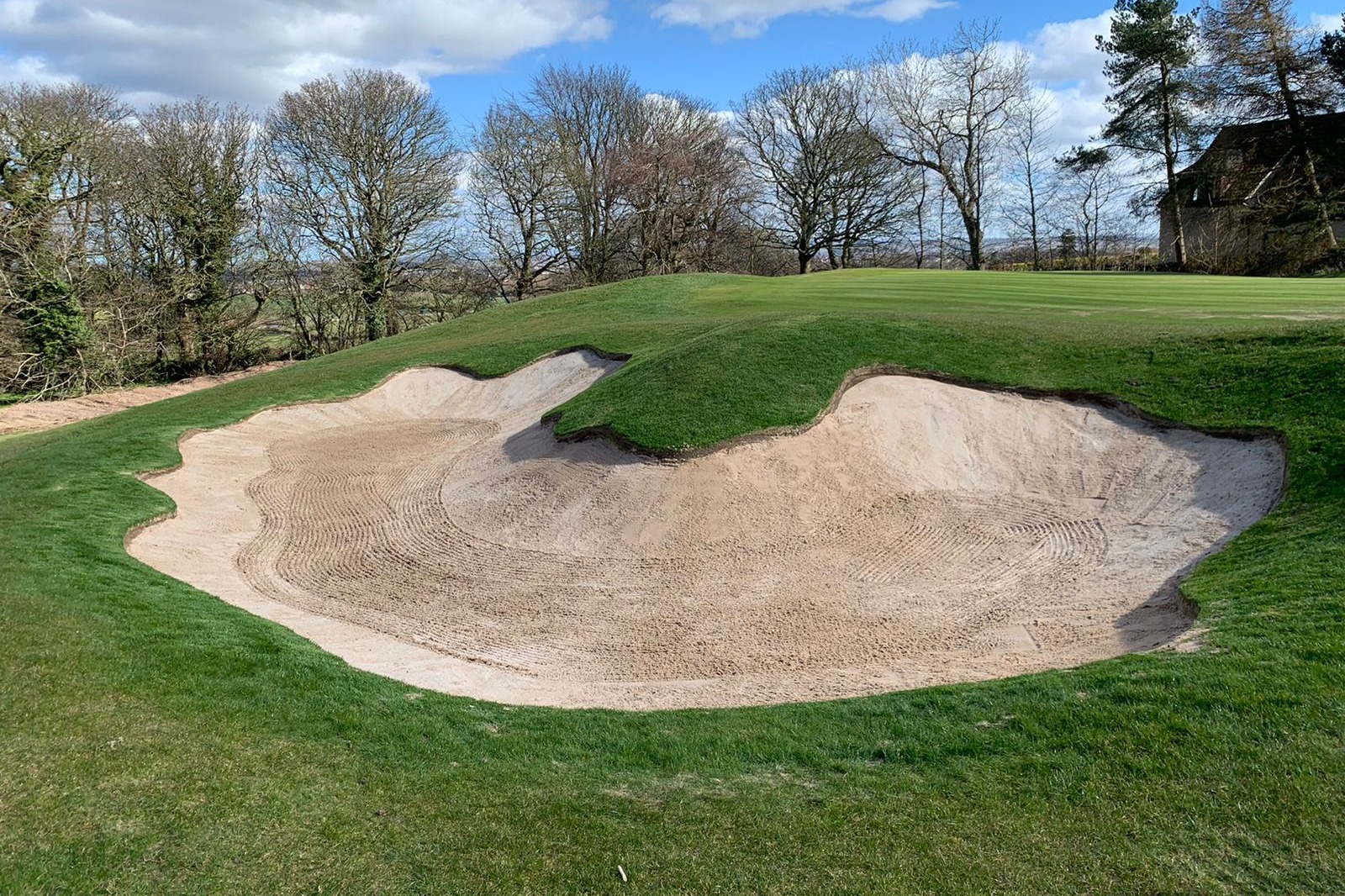
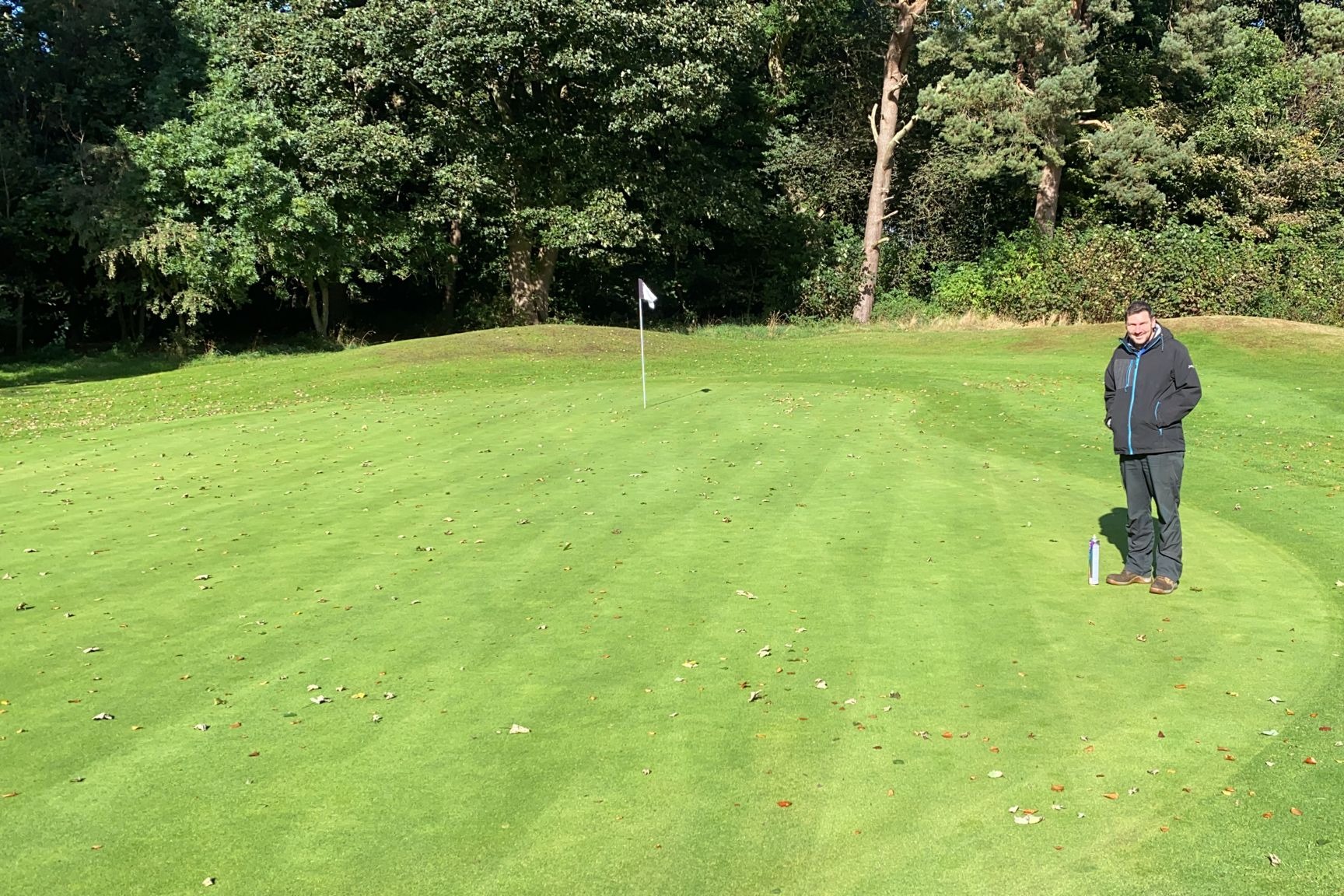
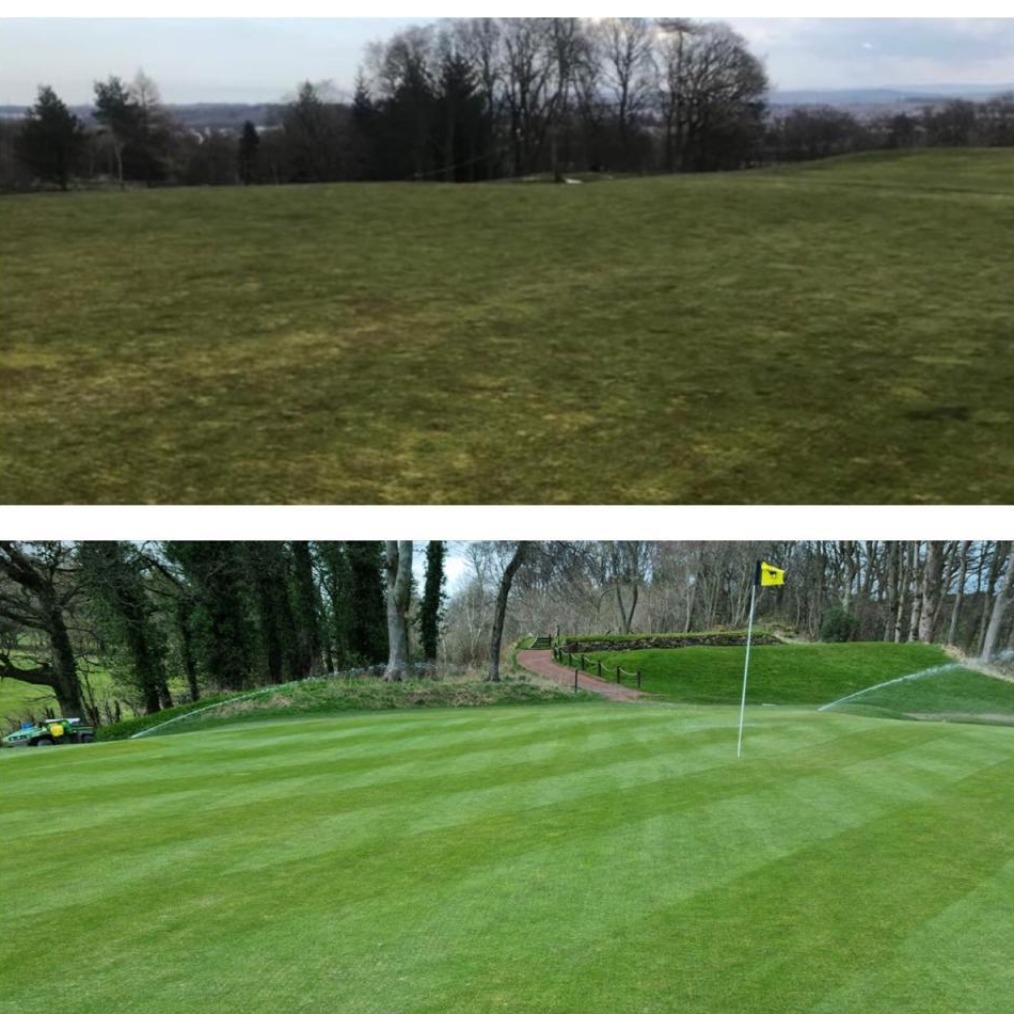
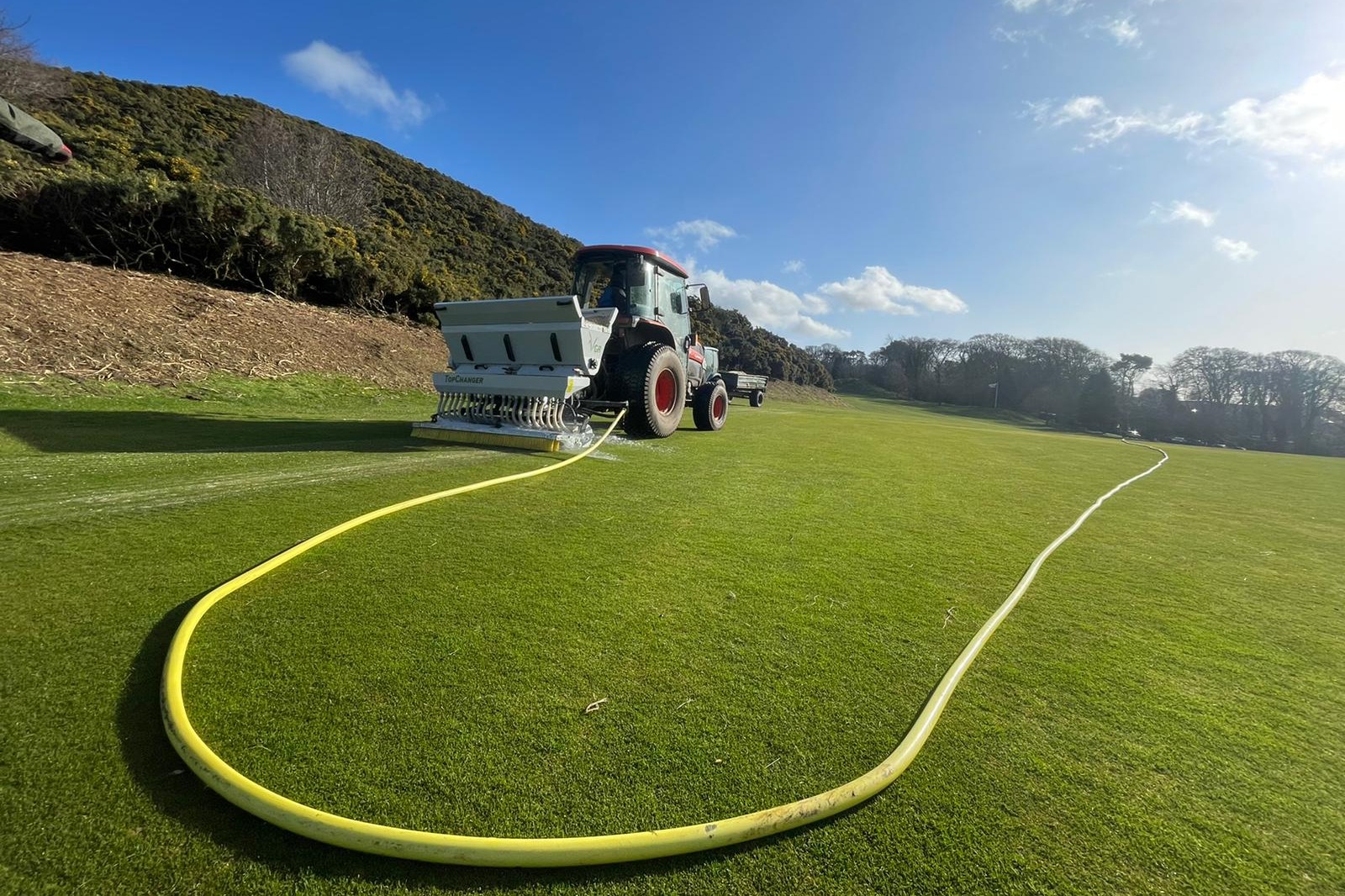
The season thus far and September
his year we have starting to reap the rewards for the work we have done over the last few seasons, when we started this process our organic matter was sitting at 12 % , spongy surfaces hungry for feed and very prone to disease this wasn’t cost affective at all on a yearly basis we were spending between 6-7 thousand pounds on fungicide and putting over 240N onto our greens costing 4-5 thousand pounds ,our organic matter now sits at 5-6 % .
With the investment into the vgr top changer we have already seen the benefits of less disruption to the membership and getting the sand to where we want it in the profile without stress on the plant with continuously brushing, I’m sure you will all agree that the greens have been better earlier this season and this was very much the goal to extend the playing season but still doing the work needed .
With reducing the organic matter to a manageable percentage we have reduced the inputs and of course the cost this year we will be £3000 on fungicide and look to keep reducing that number, on Nitrogen I forecast to end the year on 150 and again we will reduce that year on year that’s also a saving £2000 .
We all know when poa seeds every spring but this year with the dry summer it seems to have continued to seed for much longer basically the plant defensive mechanism kicking in our goal is to reduce how much poa we have in our greens and increase finer grasses such as bent , we will be going through a drying period on our greens this is the soil profile where we want to see numbers in the 20s when we test for moisture again higher promotes disease. Finer grasses thrive on less inputs of water, fertiliser and fungicides.
The frustration for the team this past summer is the slight blemishes on the greens which is called superficial this is caused by too much water being applied I’m sure you can understand through the dry spells this level of water being added to the plant must be right and our moisture levels were on the higher side of perfect for this to form, with a little oxygen from aeration this will not be a problem.
Going forward for the rest of the season and into our winter projects which we will post in October, we will be doing another vgr but with good recovery our members will enjoy good greens throughout the winter that can cope better from Mother Nature, that will be our starting point for next season when we will start to get to the point that our greens require less renovation work and more controlling with light dressing that our members won’t know we have even done this.
This is when we extend this process out onto our aprons and surrounds in the 2023/4 seasons.
The Spring Renovations March and April.
After our autumn renovations with the dryject machine, there were many positives going into the winter months, being able to get the sand directly into the profile without the disruption of coring and stressing the plant with vigorous brushing to get the sand into the core holes.
The increased firmness was evident to see and how they coped with heavy rain, especially on one specific day of 35mm when other courses around were closed we were still on main greens.
The downside of the dryject was it couldn’t cope with any slight slopes being a pedestrian machine so this was when we started to look at alternatives, the vgr top changer is a tractor mounted machine so slopes wouldn’t be a problem and with this machine having a built-in computer it allows us to control depth, amount of sand going in and size of holes. So far this spring we have completed the greens twice and injected 70 tonnes of sand into our greens, previously with the coring method that would have been 40 tonnes but I’m sure you will all agree the surfaces are so much cleaner and no need for vigorous brushing.
The vgr is run off our irrigation system and using high pressured water creates the hole and instantly fills with sand, for the next 7 days the moisture levels increase due to the water injected but this settles down to give firmer greens, previously our greens during the summer months have been 40% moisture and 50% in the winter now our greens are 40% through the winter after our double vgr we are numbers in the 30s.
The reason I am talking about moisture is simple finer grasses don’t like wet soils and annual meadow grass does so for us to be changing the habitat for finer grasses will create firmer faster greens that are more tolerant and more sustainable with less water, fungicide and fertiliser needed which in the end is more cost-effective for Mortonhall.
What does this mean for the season ahead? Less maintenance which means less disruption to golfers, extending the playing season our maintenance will be smoothing of the surfaces with light dressings which will increase speeds on our greens.
All these cultural practices are being taken out to our tees and aprons to improve these areas we will be treating these areas the same and already seeing benefits from the spring feed. Improving our aprons so that they are an extension of the green, most invasions come from aprons such as disease and annual meadow grass so improving these and creating a barrier for fine grasses will only improve our finely mown areas.
Over the last two years, we have gone through an extensive overseeding programme on fairways reason for this is adding fescue will enable them to be drought tolerant when we do get those dry spells in Scotland this also helps with a fuller sward of grass and gives you that quality of turf which improves your lie we will also be applying wetting agent on fairways this year for the very first time this will help water repellent surfaces, imagine a dry leaf and water running off so this programme will help stop hydrophobic dry patch and summer stress.
Bunkers seem to take up a lot of our time every week, you will have noticed different sand going into the bunkers for two reasons firstly Hugh and king were bought over and will not be making this spec of sand, we have changed to whiter sand but more importantly more of angular sand to help keep the sand on the faces of the bunkers.
The bunker edges will be sprayed this year with a growth regulator to keep our edges looking sharp.
Over the last two weeks, the new first green complex has been receiving its first spring feed and cuts, the green has been getting double cut at 6mm so you understand where we are the rest of the greens are at 4.5mm, this will be getting reduced in height over the next couple weeks, weekly topdressing by hand will help smooth out and rolling, our aim is for the first medal if mother nature gives us a helping hand.
Over the previous years, some have not looked at the benefits now and long term for the club.
It is no different from a drug addict coming off their drugs, we have to ween the greens off the artificial substances and do the basics correct, such as getting drainage that works properly.
Seeing the surfaces so firm after the jelly surfaces, we inherited a few years back is a testament to the hard work that has been put in by the team. Especially after the double than average rainfall in February.
February
We hired in a machine called a robo cut , this helped us in our gorse management throughout the course including our practice area.
The greens will be receiving there second vgr treatment this week ,80 tonnes of sand will be injected into our greens ,sure your all happy to hear that coring is a thing of the past for us ,this will be taken out to improve our aprons and tees over the next few weeks ,but the biggest thing is less maintenance during the season and in season dressing will be down from 2 tonnes to 1 tonne what that means is we are concentrating on smoothing the surface and less disruption for the golfers .
Winter Works
Recent works, that has been carried out on the course are the repairing of the damage due to the 1200 tonnes of material moved to create the 1st green complex, as you can see from the photos that the back of the 16th green has been completed, we have been taking turf from the old 14th practice area which will in future be our turf nursery, this will enable us not only to save money but these areas will be in play far quicker, we have now moved onto repairing the 17th.
Bunkers will be getting a full going over in the coming weeks, making sure all levels of sand are correct for the season ahead.
Levelling of tees will be ongoing over the next few winters to improve them, not only through the winter but a new program through the summer months to enhance them .
The last three months Winter projects, the first green and tees.
With everything that has happened over the last several months it is probably best summed up in a video.
https://youtu.be/_Gt8Yokb3iY
October preparations.
Recovery from our autumn renovations have been very positive over the last couple of weeks, the Dry jet machine with less disruption will provide a better surface through the winter months but still improving the soil profile. We will be repeating this procedure in spring and autumn next year, to get us off to the best start possible.
We followed up the renovations with an autumn feed on the greens with a 4.0.8 invigorator, this has helped with recovery and a high iron source to help combat disease.
A preventative fungicide was applied with a product named Ryder, this is a pigment that protects the plant from UV rays and helps the longevity of the fungicide. The greens cut height has been raised too 5mm for the winter months to protect them, and still, we are holding a consistent 8.5 on the stimp, which is terrific for this time of year.
The eleventh fairway which has a problem with its drains and the apron up to the green will be receiving treatment next week to help it through the winter months,
Tees have been receiving extensive work to improve them, with our overseeding programme to improve the quality of turf, they also have received an autumn feed, going into next year they will be hand cut to smooth out the surfaces and better presentation.
Aprons have just been cored with a 6 Mm tine this is to maintain our greens and aprons the same and improve quality and ball roll for next season.
Any questions you would like us to cover on the greens please email in to Info@mortonhallgc.co.uk and we will try to cover them either at the upcoming members information evening or in later posts.
September
The greens surfaces have held up extremely well during the August rainfall. September will see us continue with the top dressing to enhance the surface and on the 20th, we will have Dry jet here to focus on the bottom 40mm as well.
The recovery should be very quick, enabling us to have the course prepared for the winter months ahead.
The team are seeing the light start to inch in at night and later in the morning, some wonderful sun rises.
The tee's are having the same treatment as the greens, with seed and sand being applied as well as aeration. This process will continue through the winter, to improve what is a poor area on our course.
August.
The greens have received their autumn feed. The greens overseeding programme has been a weekly programme throughout the season when we top-dress a fescue, bent mix, when you look closely at the greens the finer grasses are thriving but the poa is struggling but the percentage of finer grasses has increased, which is great to see, but feeding the poa to keep the uniformed growth is normal and a must . This is what we want to see over the next few seasons to increase finer grasses and decrease annual meadow grass, which requires more water, fertiliser and fungicide.
New technology
New Pogo Pro System
Performance measuring and data collection form part of any good golf course management strategy. This aspect of course management has been developed and extended significantly over the past two seasons. Although we have very good methods and basic equipment which enable us to do this the processing of information and data is still carried out manually which is time consuming and limiting.
The new Pogo Pro System being introduced will expand the type of data we are currently able to gather and enable us to extend the care and attention to detail we practice on Greens to include all Tees and Approaches.
The data analysis available to us with the new system will also enable us to be better prepared for the possibility of deteriorating conditions which might result from environmental regulation or climate change.
The system itself consists of a collection device, which looks like a short walking stick with spikes on the end, this is the device that members may spot a greenkeeper with, appearing to randomly test areas on greens or tees. This device is connected to the associated cloud software and can be synchronised with any number of other devices on the network.
The device simultaneously measures all the most influential factors that govern turf performance. Soil moisture, canopy and soil temperature, salinity, and EC. The cloud software instantly records and analyses the data. The formatting and presentation capabilities will improve the way we currently use data to inform the work we do on the golf course, and it should also allow for some sharing of this data with club members.
With GPS capability it is now possible to accurately map any aspect of the golf course. This may be used for correct measurement of surface areas or to map drainage or irrigation etc.
An obvious use might be to adjust irrigation inputs during dry spells to better manage watering on the golf course, however, uses extend far beyond this with better information to optimise disease control, fertiliser use, aeration, and over seeding work.
Possibly what is of more immediate interest to our members, it is likely the system will be used to visually show pin placements in a format that can be easily downloaded directly to your mobile phone or tablet.
August Rain
Wet, Wet, Wet. Could be a song coming!
The team have been busy repairing bunkers and general tidy up after the heavy rains.
The pleasing thing for all of them was that the hard work that went in to saving the greens drainage wise, paid off with all the greens coping with the water well.
The seeding programme will continue, and the fairways are now being block cut to make it easier to get the seed down without crossing the lines etc.
The walk on/off areas need special treatment after the amount of traffic this year and some of the tight areas around some of the runoff areas.
The greens were given another two ton today of brushed in sand as we build them up towards Saturdays Silloth competition.
The data that David has collated is showing the team that the trueness and firmness is very good, with that we then can get increased sensible speeds. Some have commented recently that they are a little too quick but apart from the Lothians final we have not let them go above 9.5 on the stimp.
We do try to get them at an even pace at 8.5 during the week and lift them slightly at the weekend.
Hole fourteen
The team have checked this hole as it is a giveaway for the lower handicaps, but we feel after checking closely, that the rough on the left is not doing what we wanted the hole and rough to do. The idea was to tighten it up to stop the bigger hitter putting it on the anti or green. It seems that more of the higher handicap players are getting in trouble going for the corner.
What we intend to do is to clear all the rough from the tree line plant more trees and keep the rough down by spraying around the trees and planting to allow the machines to maintain the height at the 50mm as per our secondary rough. leaving the trees as the hazard. This does not affect the new regulations of supporting the natural areas.
All the rough will get mowed down over the next few weeks, to encourage the long fesc to come through next year.
Once the senior open greensomes is finished, a member of the green staff will be doing a late shift and start to verti drain the greens with 10mm tines, this process we have done several times this year to keep improving our soils hydrology with creating pores for water to move
The work we have been doing to improve our soil profile and changing this from clay to more sand based if we all remember the floods of last August and the greens struggled to cope and the recent floods the greens have coped but also kept their firmness.
This process is quick to recover and we will looking to do again prior to our spring renovations , this year this will be different and no coring you will be happy to hear, the machine is called Dryject were it drives the sand into the profile with high pressure water so with creating air spaces with our verti drain we can inject more sand, the biggest benefit of this machine is little disturbance and giving our membership good surfaces for autumn and winter months . https://www.dryject.com/
August
August
Finally, we were able to open the first green, it has been a year thus far that none of ours or any other greens team would wish to replicate.
The non-event that was spring, has affected most inland courses, thankfully the work from last year and the persistence from this has paid off.
The greens have been playing as well as could be expected and the moisture that we rely on for the firmness and therefore trueness has been constant at around 32%.
These daily checks conducted covering moisture speed and trueness/firmness have been valuable to the team setting the HOC and the timings to take the green another level.
We are still cutting at 3.6 which is considerably higher than in the past, however we are obtaining the same speeds and the greens have been consistent at an average of 8.5 this last month, only being affected by 0.4 when we dust and maintain.
The goal is still to move the HOC to 4.0 and keep the current speed. If we were to lower to the old heights of 2.3/2.6, we would have greens that would be far too quick and undulating for most members. This was proven in the Lothians final and the interclub finals where we dropped to 3.2 and put a further foot of pace on to them.
It is all well and good having fast greens, but most of the work done outside of the drainage over the winter is to create true and firm ones that free roll.
When the individual competition requires us to toughen it up with faster greens, the championship for example then this becomes very straight forward.
The cut lines on fairways and surrounds are coming on well but not at the level that the team desires, it takes time! From the fairways to the breeds and anti-greens all are taking shape for the future while still performing now. Seeding is continuing and that again will improve next “seasons results” we only have to remember the fairway on the 18th from last year which completely browned off at the two thirds mark whereas this year has held far better. A programme of reseeding will take us three to four years and then “topped up” every other year to achieve and keep the playing area that the team are looking to create.
The long rough is again being thinned out to encourage the wispier long fesc to come through and as we said last year this will be a work in progress over the next couple of years.
Many of you have visited the top clubs will have noticed that they are starting to let the long rough grow, this is down to three reasons. Firstly, the legislation is due to be changed covering Golf courses and the amount of natural habitat that surrounds courses and the of large rough cutters burning diesel etc. For this is something that our STRI pointed out to the greens committee on their visit last week.
Secondly to keep our slope rating and therefore your handicaps many hours are spent with David and Grant looking at ways of pinching in, thinning out in places and where we have it correct and incorrect.
Hole five for instance is easy to overcook if you chose the wrong club, you will run out of room. However, we feel hole fourteen left is still too tight and we will be looking to pull that more to the top and try to use the trees as the penalty not both.
Finally for definition, many have complimented the team on the trees and wildflower areas that are starting to take shape.
The main area that the team feel lets the course down is the tees, work has already started on coring shaping and aeration along with dressing to treat the tees the same way as we do the greens and antis. This will make a huge difference to next season with most of the winter works aimed at cleaning areas, finishing the path network and tees. The only major work that must be taken on is the first, where we know that the drainage has collapsed on the right-hand side, this works we will look to do early and give it the maximum time for recovery over the winter.
The focus on cleaning is mainly around the walk on and walk off areas that take and have taken a real battering due to more traffic than usual in this last year due to all that has happened.
June into July
At the End of June.
We are exactly five weeks behind last year and six behind 2019 in growth. The greens are starting to patch together and the seeding over the major drainage on five of them is filling in nicely.
They have with the tee’s been given a boost this week with a little feed and with the forecasted temperature’s we are hoping that they will move on another level.
Again, the fairways are being reseeded and the noticeable difference after the dry spell on the 18th and the 6th & 7th holes to name a few. Last year before we started the seed programme, they were all burnt off after the spring dry spell, this again will take us forward in the quality of the playing surfaces.
Talking to other teams Turnhouse GC made changes a few years ago, to the way they treat their greens and are now reaping the benefit, like all things change is difficult.
Especially in a modern world that demands instant results unfortunately mother nature isn’t like this, and we have to wait for the benefits that are clear to see on the rest of the greens.
Like you, we sometimes get to attracted to the patch that looks bad and miss the other 80% that has a knit so well that will give us top quality greens going forward.
The tees and the approaches are being treated the same as the greens in the way, we brush, dust, and apply feed. They will within the next 12 months be cut to almost, the same as the greens. This will allow us to stripe and improve the definition and playability of the approaches and tees.
The test came over the weekend with over 45mm of rain in a very short space of time. To see the greens draining so well and the to be playable the day after is a massive credit to the work that has been undertaken. Even the worst greens held up very well, we had puddles and that is now logged to address this next winter, and to address the areas where the drainage just cannot cope. (See the pictures attached)
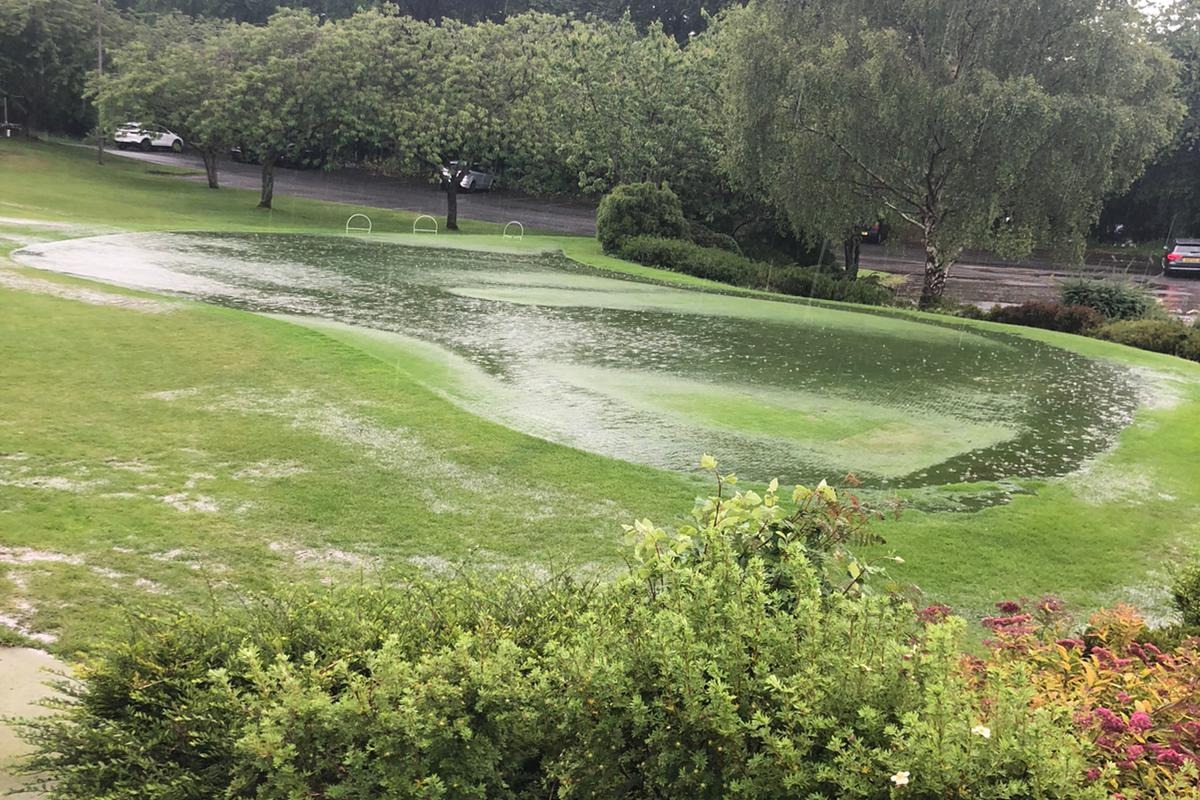
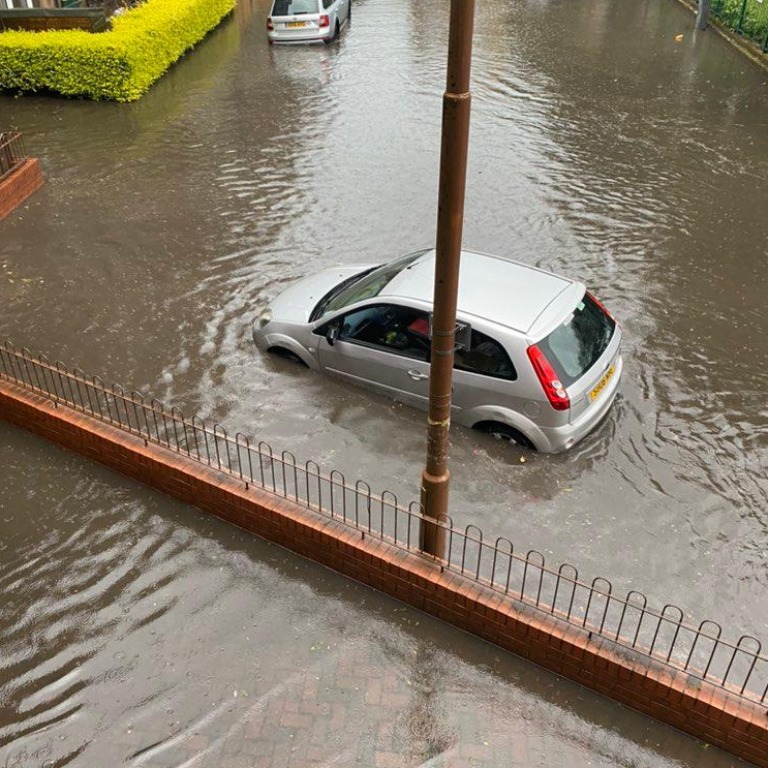

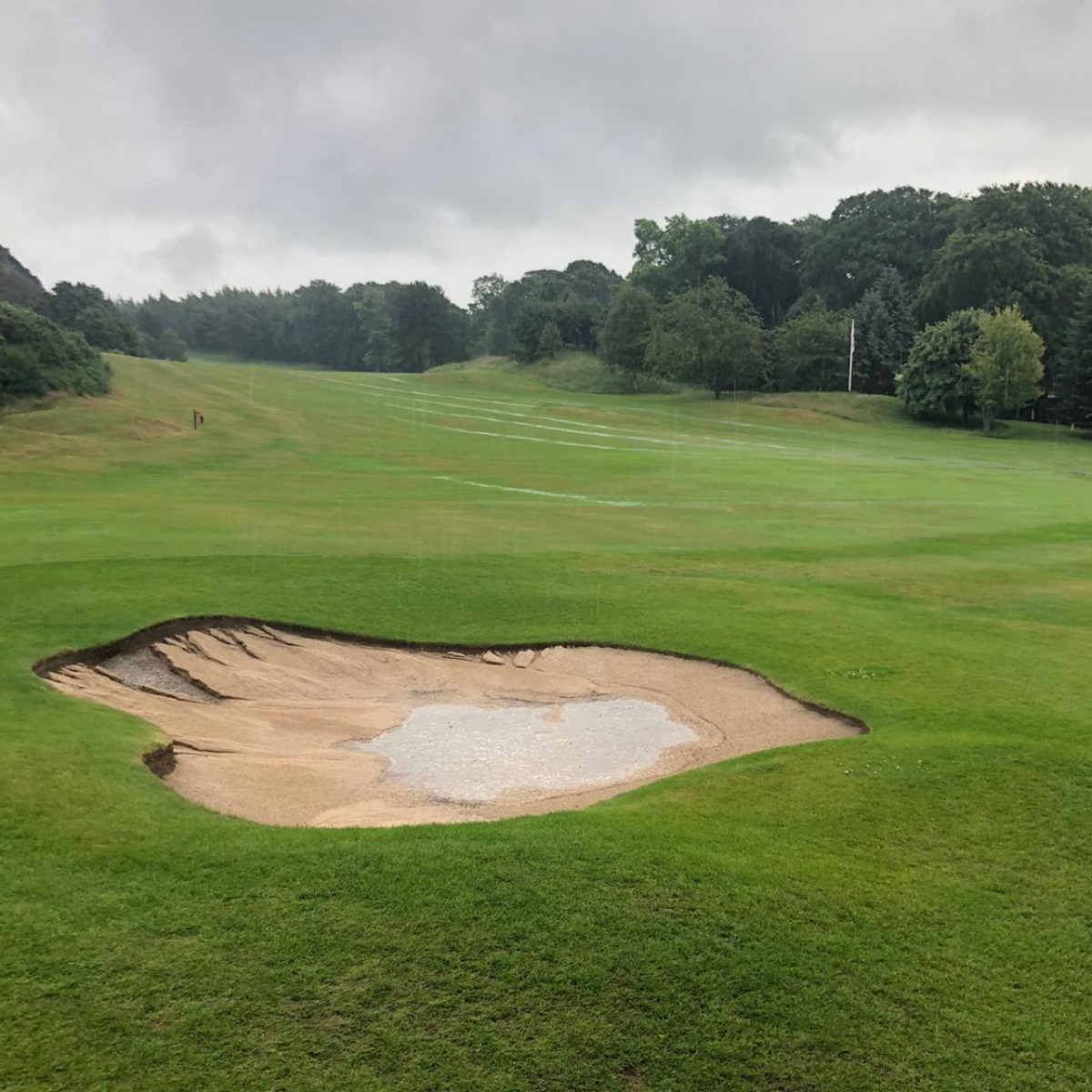
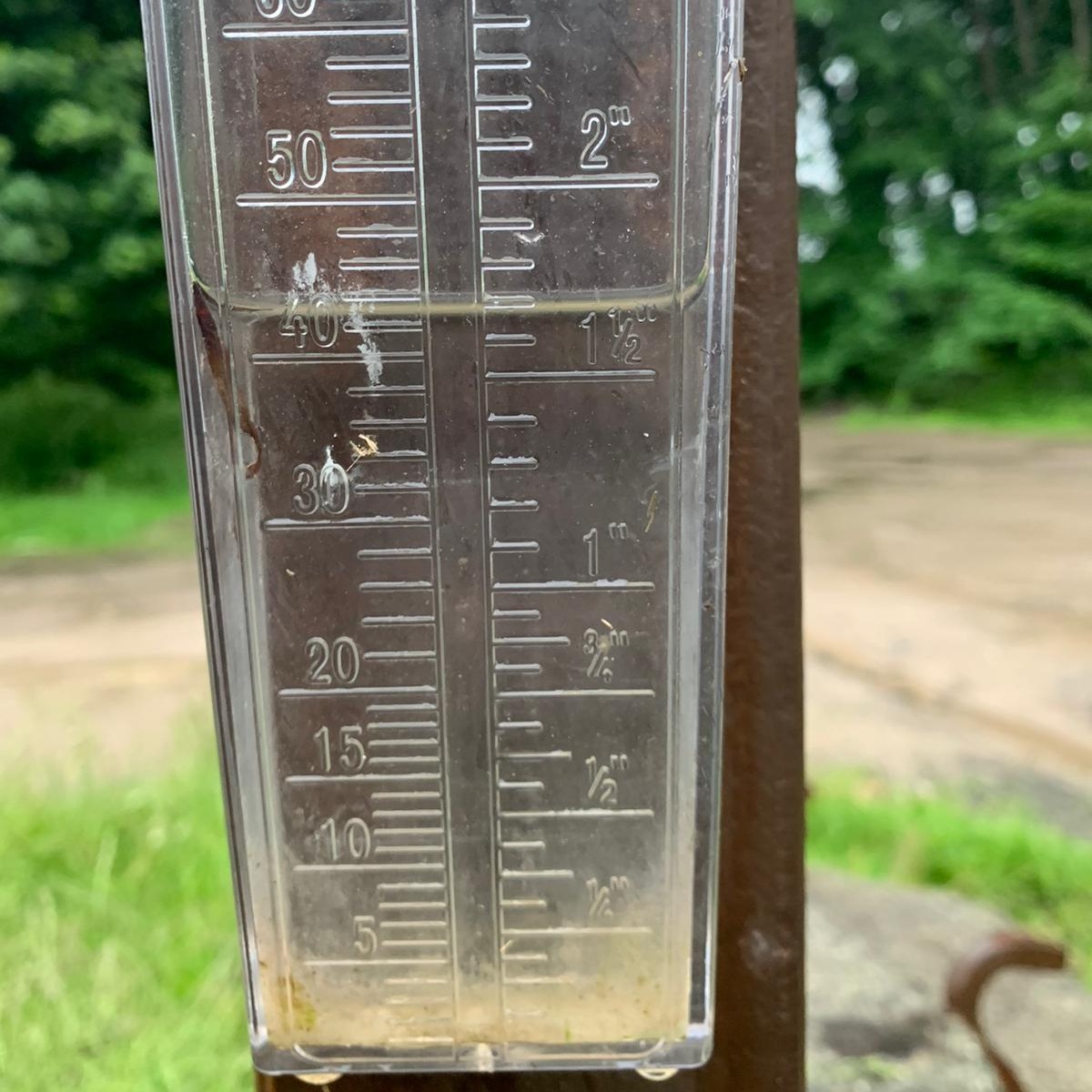
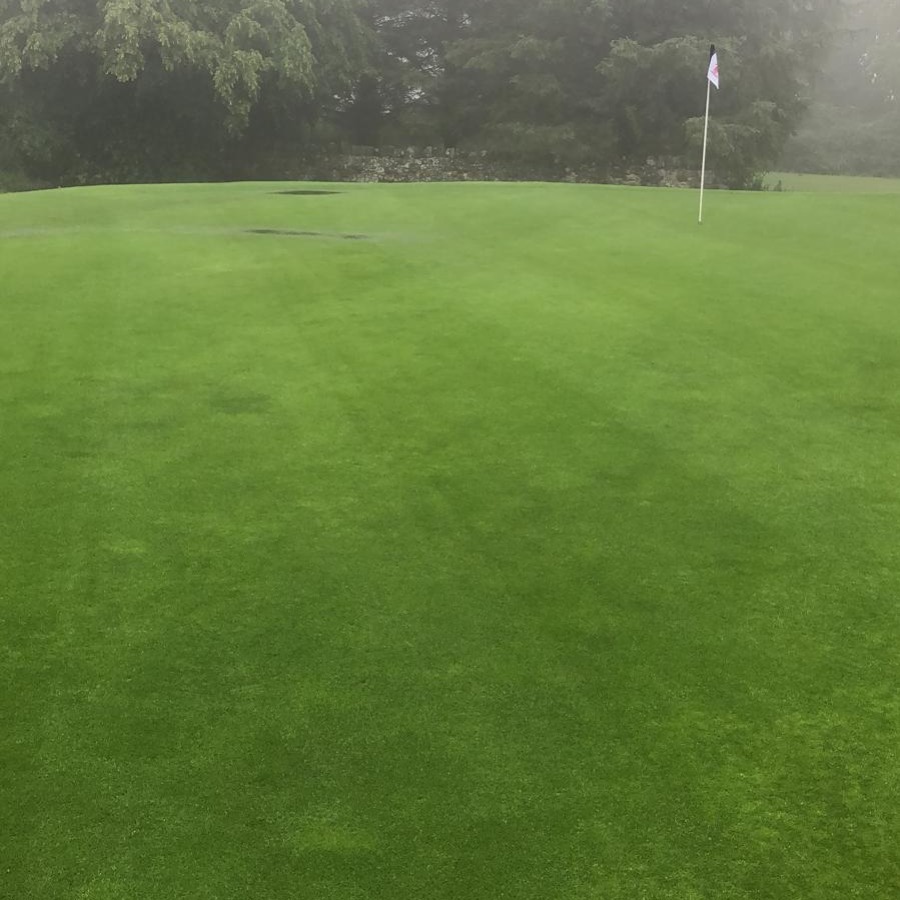
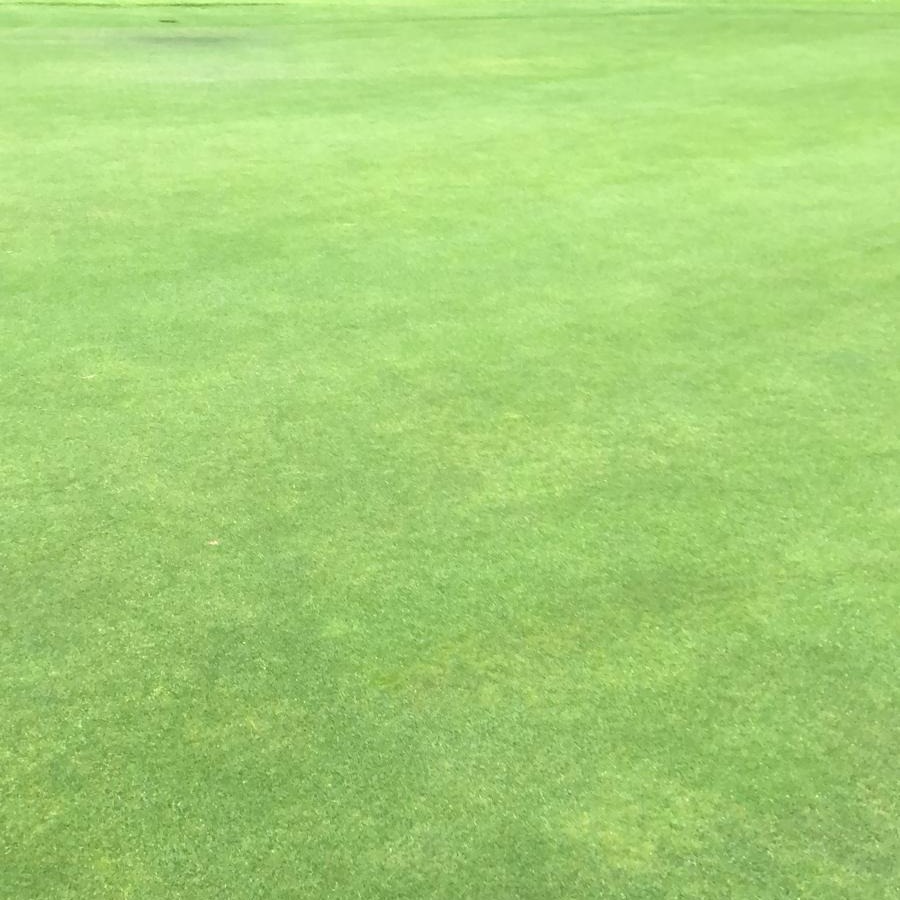
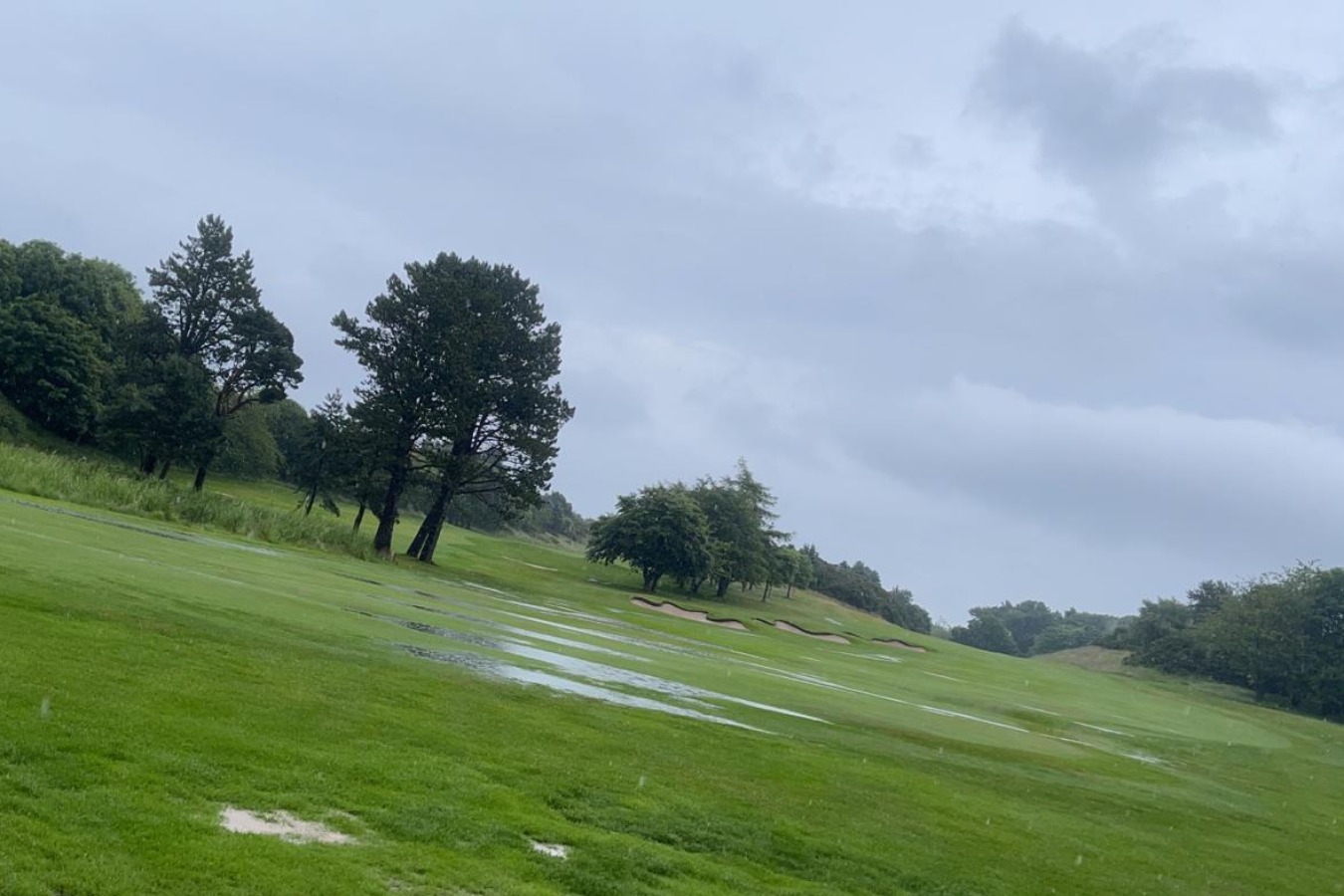
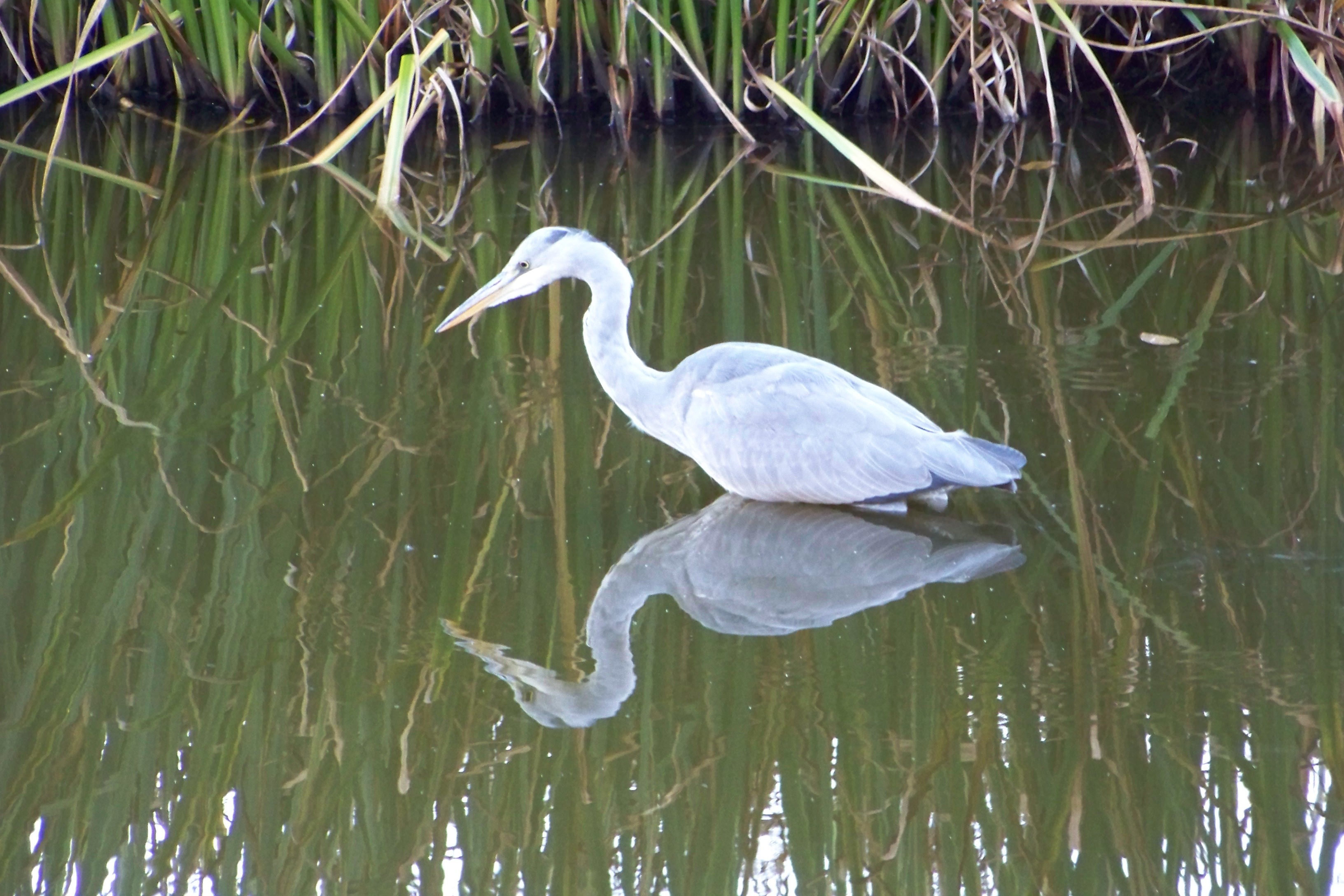
Rakes and pins, our position following the guidelines.
There have been many that have asked why some clubs have introduced rakes etc.
We have throughout followed the guidelines set out by SG and Government and do not intend to put the club in a Position of liability.
Following the latest COVID Update from the First Minister, Scottish Golf wishes to inform all clubs that our current COVID-19 Guidance remains unchanged. We do not anticipate any further changes in the Protection Level system until 19 July 2021.
There has been an increase in enquiries regarding on-course furniture, i.e Rakes and Pins and we would take this opportunity to advise that our guidance (along with that of the other Home Nations) also remains unchanged at this time. These should remain out of use to limit the potential spread of COVID-19 and we do not foresee this position changing until we move to Level 0.
Any club who has chosen to re-introduce rakes or permit the removal of pins, should ensure they have undertaken a full risk assessment and have checked with their local authority, health and safety advisors or insurance provider to be sure that they are in no way negating any public health liability cover they might have in place.
The latest indication we have from the Scottish Government is that all local authority areas will move to Level 0 from 19 July 2021. We will continue to monitor the situation and keep all clubs updated should anything change.
bunkers 17th June
Our bunkers are getting a tidy up, the sand which we can no longer purchase is having a layer of china clay placed underneath to help in the strong winds and dry conditions.
If this is successful we will adapt to all bunkers to give the consistency that we are searching for.
Moving On
We are pleased to inform you that Robert and Shaun will be moving to Prestonfield Golf club as head and first assistant, both have worked here for some years and are a credit to MGC.
They will still be seen around MGC as the teams work together going forward, but an opportunity that could not be ignored for either of them.
After working down the road for several weeks to help a fellow club in its time of need, they both successfully went through an interview process with some talented candidates, and I am pleased to say they were clearly successful.
Greenkeepers the same as professionals need the change of clubs after a certain number of years to rekindle their appetite and take on new challenges and problems unique to that particular course.
Shaun, in particular has been looking for several months for the opportunity to move to a heads position and has got to the last couple of candidates at some good clubs. This move will be an excellent steppingstone to a big club that he will undoubtably manage in the near future.
All the team wish both guys the very best and they know that we will have many more brainstorming sessions and mutual help going forward.
starting to take shape.
With a couple of weeks of growth the course is getting to look like we would expect at the middle of May pity its June!!
The hard work is paying of and the roots in the greens is good for the future.
Seeding has started and we will be hitting the hot spots over the course over the next two weeks.
Putting Green
The top putting green is now turfed, this was due to be done three weeks ago! The turf nurseries have suffered the same as us.
With so many clubs having to turf areas of their courses, the nurseries cannot cope with demand and they too are struggling to grow the new turf.
The turf that was due to us was simply not good enough as the attached picture shows, it was recovering from fusarium, the genus of filamentous fungi.
Although black and clearly treated the team did not fancy bringing any form of disease, especially having got rid of so much last year.
The new turf as you can see is extremely healthy and will knit very quickly.
Trolley Policy
This can be found in the Documents page in the members hub.
TROLLEY POLICY
For the use of golf trolleys at Mortonhall Golf Club
Introduction
The purpose of this document is to set up a standard for the safe operation of golf trolleys and to limit unnecessary damage to playing surfaces likely to result from the use of the different types of golf trolleys available.
GENERAL USE
Members and Visitors alike are welcome to use trolleys, motorised or otherwise, when the conditions of the course are suitable, and it has been considered proper by the Course Supervisor or Head Green keeper.
When doing so, users are requested not to take their trolley:
• Onto the tees and greens
• Between a green-side bunker and the green
• Onto the fringes & aprons of the greens
RESTRICTED USE ('EXEMPTED TROLLEYS ONLY')
There are occasions when it will be necessary for the safety users, and staff, to restrict the use of trolleys due to the course and weather conditions. This will be declared by the Course Supervisor or Head Green keeper when it is thought conditions warrant:
• Present a risk to Health and Safety, or
• Will lead to excess damage to the course
Where there is Restricted Trolley use, only the following will be able to use trolleys:
Members and visitors with a medical exemption certificate, where in the opinion of their doctor they are unable to play or have undue difficulty in playing golf without the use of a trolley because:
• They are suffering from a disability within the meaning of Section 6 of the Equality Act 2010 or any statutory modification thereof, OR
• Their medical or physical condition precludes the physical carrying of golf clubs for a full eighteen hole round either permanently or long term, OR
• Their medical or physical condition precludes the physical carrying of golf clubs for a full 18-hole round for a period specified by their doctor
RESTRICTED TROLLEY USE (EXEMPTED TROLLEYS ONLY) – VISITORS:
Visitors wishing to use a trolley when use is restricted to ‘exempted trolleys only’ must produce a copy of a valid medical certificate to the Golf Shop staff before playing the course.
PLEASE NOTE:
The Club will keep a level of discretion and common sense with regard to the above requirements for 'EXEMPTED TROLLEYS USE' as we are aware some players will require a trolley but may not have a medical exemption certificate or for privacy reasons may not wish to present one.
WINTER USE
We would encourage all players, who are able to do so, to use carry bags and carry their clubs if they are playing in the winter months even if it means a reduced number of clubs in the bag.
We will endeavour not to impose course closures or trolley bans unless they are necessary. To aid in this, and at the same time making continued trolley use available to as many members that need them or wish to use them, there will be a compulsory ‘Winter Wheels Rule’.
WINTER WHEELS RULE
Where in the view of the Club Management and in consultation with the Course Supervisor conditions reach a point that the continued use of Electric trolleys with standard summer/general use wheels or push/pull trolleys with narrow wheels will be detrimental to the course the following will be implemented:
ELECTRIC TROLLEYS:
Use allowed only if they are fitted with ‘Aqua’ wheels. Members are also encouraged to change to lithium batteries, which are much lighter when battery renewal is due.
PUSH/PULL TROLLEYS:
Trolleys with narrow wheels (less than 3 inches or 75mm) are not allowed. Suitable push/pull trolleys are available for hire from the Pro shop.
During the period that the ‘Winter Wheel Rule’ applies all Members and Visitors alike and without exception who wish to use a trolley on Mortonhall golf course will have to follow the points referenced above.
For clarity, the ‘Winter Wheels Rule’ dispenses with the ‘Exempted Trolleys Only’ rule – therefore those who were exempted by that provision are needed to adhere to the ‘Winter Wheel Rule’ if they wish to use a trolley.
TOTAL TROLLEY BAN
In circumstances where, in the opinion of the Course Supervisor or Head Green Keeper in consultation with Management of the club the prevailing conditions, including amongst other factors, the course or parts of the course, the environment or the weather:
• are unfit and/or unsafe for trolley use, or
• present Health and Safety issues for the users of trolleys, or other users of the course including our staff
A total trolley ban will be applied.
In these circumstances no members or visitors will be allowed to use trolleys, motorised or otherwise, irrespective of the person's possession of a medical exemption certificate.
TRAFFIC MANAGEMENT ROUTES
Traffic management routes may also be introduced on a temporary basis. We would ask that all players respect and follow these routes, whether carrying or using a trolley.
COMMUNICATION
The status for trolley use on the golf course will therefore be 1 of 4 options:
• General Use
• Restricted Use
• Winter Use
• Total Trolley Ban
The status for trolleys on any given day will be shown under Course Conditions on the web site and communicated to the starter.
Any information relating to traffic management routes will be posted on the notice board and in the Pro shop. Any signage or temporary fences relating to traffic management routes will be coloured red and installed ahead of play.
FREQUENTLY ASKED QUESTIONS
Q. I want to use a trolley when use is restricted to ‘Exempted trolleys only’ – what do I need to do?
A. Those members who are disabled or who have medical or physical conditions which precludes their physical carrying of golf clubs for a full 18-hole round should see their Medical Doctor and ask them to sign a Medical Exemption Certificate with the proper endorsement.
Once signed the certificate should be submitted to the CEO of Mortonhall Golf Club, who will take a copy of the certificate. Those members with a permanent or long-term certificate will be noted within the clubs booking systems.
Visitors who are disabled as defined under section 6 of the Equality Act 2010 or who have medical or physical conditions which precludes their physical carrying of golf clubs for a full 18-hole round will be required to produce a copy of their Medical Exemption Certificate signed by a Medical Doctor, if they wish to use a trolley where the use is restricted to 'exempted trolleys only'.
HOW DOES THIS AFFECT ME?
In the case where use of a trolley is restricted to ‘Exempted Trolleys only’ those members or visitors who are disabled or who have medical or physical conditions which prevent their physical carrying of golf clubs for a full 18-hole round will be able to continue to play golf with the use of a trolley when use by the general membership or visitors is not allowed.
The determining factor will be a signed Doctors Medical Exemption Certificate because either:
A) The player is suffering from a disability as defined under section 6 of the Equality Act 2010 i.e. A person has a disability if (a) they have a physical or mental impairment, and (b) the impairment has a substantial and long-term adverse effect on their ability to carry out normal day-to-day activities, OR
B) A player’s capability to carry a set of golf clubs for a full 18-hole round is precluded by their specific medical or physical condition. Age alone will no longer be the sole determiner.
However, when conditions call for the imposition of a ‘Total’ trolley ban, no member or visitor will be allowed to use a trolley.
Monday 7th June
A 10mm tine at 200mm depth to give the greens time to breath. This will be followed by a light dusting of sand to start to polish up the surfaces.
All work will be completed by the end of the shift.
On Tuesday the top putting green will be relayed with new turf.
June update
As the temperatures start to finally rise and recovery throughout the course, it has certainly been the longest winter I can remember, looking back to the monsoons in August and October, 56 days of snow and frost after frost in April. It has tested every Greenkeeper's resilience and looking at our team and the everyday efforts they have put in it is testament to the team we have at Mortonhall.
There are so many jobs in Greenkeeping just now showing so many are changing their career path but to us at Mortonhall it’s a passion and the work we have put in over the last 15 months will show, with the best stri results in 20 years.
For me it’s always a learning process to what Mother Nature throws at us and preparation is key to make sure we can extend the playing season when other courses will struggle, we will be doing more deep aeration with our terra spike and the use of Dryject machine in September for minimal disturbance on the surface but maximum effect underneath.
Also buying blankets and removal of any snow from our greens is a lesson we have learned.
Finally, after temps have climbed the first green is recovering well and with the forecast good for the next few weeks we are hopeful this will be back on as soon as possible.
Poa has arrived a little later this year this is due to slow temperatures from spring and normally poa seeding arrives on 150 growth degree days which was a month later than normal, but with regular poa busters and brushing we can contain until this seeding slows and the surfaces can return .
The process of changing the grass species is a slow process but firstly you must create the right habitat and as we have the organic matter below 5% allows us to start this process with weekly dressings with seed and full overseed with our Weideman seeder and start to reduce poa and increase bent and fescue to create longevity in our playing surfaces. There are many pros for these changes but the main ones are quality of surfaces and reduction in chemicals and fertilisers.
These processes will also be pushed out to aprons and tees and improve these surfaces. Treating every surface the same will improve every aspect of Mortonhall with our full overseed programme this year and the positive results from last year.
JUNE
June and a course that believes it is the start of May!
Finally, the right temperatures have arrived but the downside of that is poa seeding, normally this would have started at the start of May and would have been and gone by now but does show that we are a month behind.
The changes in the course in the last 7 days has been tremendous and the recovery throughout the course and what we call the spring grass factory, fairways aprons and first cut have been sprayed with a growth regulator this helps in the recovery with thickening and energy into the root system.
David and Grant were checking the growing days and last week we hit two hundred, we hit the same number on the 27th of April last year putting us a good 4/5 weeks behind.
We have started on the tees which were penciled in to be done in April, without growth it would have been a waste time.
The definition is starting to come and POA is at its peak this weekend, the scarring has started to close in.
The only problem we have is on hole eleven where to be fair it was not the weather but operator error. The team take the praise and the criticism together, so we are all at fault for that one.
The pictures we have attached show the difference that a bit of spring can do, the recovery is good albeit five weeks behind.
David, Grant and Richard or Gary our two agronomists for the past 20 years are more than willing to do a walk around with any member that wants to understand what has happened or indeed what we will be doing this winter to stop it happening again.
Please email the office if you wish to attend one of the walks. (Dates to be sent in the next newsletter)
The surfaces after POA busting and hand cutting are really taking shape, fairways are knitting in, and Colin is doing a great job on the surrounds, antis, and borders.
The benefit we will have is our course will outlast the others that have not done the work over the winter period. Already a course very close to us is starting to suffer with the greens when only a few weeks ago they were compared to ours and members asked questions why they are in better condition and, we said then they were not and now it is showing.
As you can see from the picture below there is a vast improvement in the first green and soon it will be back in play, the first picture was the 25th April and the second was the 5 may, if only we had a normal spring we would not have endured this painful process.
Winter Kill STRI
NEWS / 6TH MAY 2021
Low temperature grass plant damage is becoming a more common and destructive type of abiotic stress in parts of the UK.
Winterkill, as it is called, is a general description for any visible injurious outcome to turfgrass plants that occurs during any winter period. This can result in deleterious injury due to frozen grass plants or frozen turf rootzones, low temperature leaf desiccation injury or low temperature pathogenic (disease) attacks. Winterkill injury is reported with increasing regularity within the UK and, this year the north east of Scotland has been ravaged with lengthy periods of ice cover, more akin to conditions experienced in the Nordic region or north America.
Winterkill can be caused by individual or a combination of factors, including crown hydration, low temperature leaf desiccation, ice sheets and pathogenic (disease) attack. Due to the unpredictability of localised environmental conditions, potential damage outcomes can vary greatly among golf courses. Variable regional and site conditions can influence the extent of damage seen. Agronomic characteristics such as surface drainage, surface compaction, grass plant type and available sunlight can both positively and negatively affect the swards under pressure from low temperature conditions.
Ice damage, particularly ice that has frozen encasing the grass plants, is a devastating type of abiotic stress. Damage usually occurs during freeze and thaw cycles of fluctuating temperature, from slightly warmer daytime through to the colder night-time temperatures. Ice cover or an ice blanket forming in a regular thaw and freeze cycle will result in turf damage due to crown hydration and will be more damaging in shade or lower lying sections of turf holding higher water volumes. Course managers throughout the north of the UK have been left with the dilemma should they attack the problem or take a more considered approach and allow nature to take its course.
Introducing the practice of “cracking” the ice, using a solid tine, commonly used in Scandinavian countries, may increase the potential for plant tissue damage and thus probably best discounted unless mechanical damage can be totally avoided. Pressures due to financial concerns over lost revenue should not influence these decisions to prematurely return the course to normal play conditions. Regardless of the choices we make to revitalise these pressured grass plants once the thaw has established, a period off rest will be required, meaning no play and very little maintenance, with light aeration to oxygenate the surface, the only exception. After many weeks of ice encasement usually in anoxic (lack of oxygen) conditions, these stressed grass plants will have to build up some much-needed energy (carbohydrate) reserves to underpin their return to normal functions of tillering and rooting.
Nutritional input will be lower initially with seaweed-based products the preferred option to gently support the plants through this early re-establishment phase. Once temperatures rise, nutritional inputs can increase as necessary to foster sward density and allow the plants a return to their normal maintenance regime. Recovering stressed and damaged grass plants after a period of blanket ice cover, can be excruciatingly slow especially if conditions remain cool and cloudy. Sown seed will require seed to soil contact (not always easy without disturbance to already stressed plants ) and likely will stubbornly refuse to germinate until rootzone temperatures are sufficient to do so.
Spot plugging can be beneficial in small sections but is not the answer to larger areas of fine turf damage which may be beyond repair. Re-turfing larger sections is an option, however in real terms, even with kind weather the re-turfing will not guarantee a return to normal maintenance regimes. The usual play standards are likely not to be met until the new turf is able to withstand the early establishment stresses and benefit from the many sward refinement inputs required to return that surface to a condition consistent with the other surfaces on the course. That could take many weeks, if not months, and it will be very difficult to keep the golfing clients off the damaged surfaces during the recovery period. Discipline, perseverance and patience will be required to get through this all-important recovery period, as will the inescapable thought to the future, and the high likelihood of similar repeating episodes of these extreme weather episodes.
To Summarise -The severe conditions experienced in the north of the UK this year are very likely to become a more regular set of phenomena and all forms of winterkill are challenging to grass plant health outcomes. With the demands for winter sport participation growing, it is probably the right time we all as sportsturf managers look to develop a longer-term winterkill defence strategy.
May update
General
With the warmer temperatures starting to arrive and the recovery throughout the course from the winter slowly starting, we took the opportunity on Sunday night to do some work on the greens. Starting with a dry cut and a sarrel roll which allows the greens to breathe into the top 20mm this was followed by a top dress which we mixed with seed to smooth out the winter scarring.
A spring fertiliser was applied to help push things along in the right way, the main reason this was done on a Sunday was the busy schedule and less disruption for our members, again it shows the dedication of the team to do their morning shift at 5am then return at 5pm to get these vital jobs completed before night fell (almost last 2 greens in the dark). This week hand spiking and seeding will help to return our greens to how we expect them to be.
The majority of members understand, especially the early morning ones, as they too are still dressed for winter while playing. Later in the day it starts to warm up but the conditions and work that we are doing now was actually planned for the second week in April.
Fairways
Now that the fairway team have completed the shaping of the fairways for this season, you may have noticed that a few fairways have been made tighter.
The reason for this is to increase the playing area with the addition of more breed cuts (semi rough), this also helps to brake systems for the wild offline shots.
By doing this it also adds character to the hole, which also keeps the golfer thinking about where to place his tee shot rather than just blasting driver everywhere and anywhere.
Tees and Aprons
Going forward with Tees and Apron surfaces, we have now started the work planned for 5 weeks ago.
These surfaces will be treated the same as greens, we have already started this by scarifying tees along with aprons too. Both the aprons and tees have been fed already but cold weather is holding them back massively. We can already see the benefits of this work, but maintenance needs stepped up a notch. We have had complaints in the past about tees being uneven and patchy growth but implementing a maintenance plan going forward will reduce those complaints drastically.
Over the next few months, the aim is to have both surfaces at the same cutting heights this helps both green staff and members because having a dedicated machine for both, saves so much time and energy, but for the golfer who gets to stand on a tee with definition and a surface you could putt on works for me and the team.
Heights on these areas as we speak are Aprons 7 mm and tees 10 mm.
Maintenance plan.
Scarify
Procore 13 mm tines
Top dress
Brush
Overseed
Fertilise
Tree Planting
On playing the course recently you will have hopefully noticed a few new trees planted on holes 6, 9 and 16. On these holes we planted 25 mature trees, made up of differing varieties of apple and maple trees. In an earlier update, we talked about the reasoning behind our recent tree planting on the course and how they can define how a golf hole is played and provide visual interest along with supplying hole separation, definition, and focal points. This time around is no different, but this time we positioned an area of trees to help improve a health and safety issue on the course. All trees have been staked, which will stay in place until they are considered no longer necessary, so please can you follow the rules of golf and take appropriate measures when they affect you during your round.
Hole 6
The reasoning behind this planting was mostly to fill the dead and characterless area to the left of the green. Apple trees were planted throughout this area, supplying a mini orchard to add a banking of colour, smell, and interest in the coming years. It will hopefully also take away some confusion and direct visiting golfers towards the 7th tee, instead of them heading down the 16th fairway (which has happened much more times than you would think).
We have incorporated some of the tree planting with the wildflower area that has already been created in the area and marked as a no play zone. Please be aware that the no play zone is only within the blue stakes in place and not the entire area to the left of the green.
Hole 9
A mixture of maple and apple trees has been positioned down the left side of the hole to direct golfers away from out of play rough and scrub land and towards the way the hole is designed to be played. Directing golfer’s point of view more towards the centre of the fairway, will hopefully shorten the length of the hole and give golfers a better chance of reaching the green in relation to their handicap.
The area of rough between these newly planted trees will be left unmown to begin with, but like the introduced tiger rough last season, we will check member feedback and scoring stats on the hole, changing mowing lines and removing tiger rough if needed.
Hole 16
The trees planted on the brow of the hill separating the 2nd and 16th holes was solely down to improving health and safety issues with tee shots finding their way onto the 2nd fairway from the 16th tee (which has been an ever-increasing problem recently). After putting together, a detailed risk assessment for this problem, it was felt that the ideal way to limit the hazard was to position mature trees in the gap between the two holes to stop wayward shots from 16th tee. The biggest advantage of planting mature trees is that you get instant effect, so hopefully these new additions will reduce the hazard and deliver a safer environment for golfers making their way up the 2nd fairway.
We will constantly check the situation going forward and add more trees to the area, if necessary, along with further safety signage and measures to create a safe environment.
The latest from STRI after the visit on Tuesday last week. Some fantastic results for David, Grant and the whole team to be proud of.
April update
Course update.
There have been some comments on our top-dressing programme over the past 15 months, so here is an explanation of why we have this top-dressing programme in place.
We have 80% poa (annual meadow grass) greens which proves difficult to maintain through the season, from when they seed in spring to maintain quick green speeds, smoothness and trueness.
Annual meadow grass preferred habitat is high moisture that requires labour intensive and costly practice to obtain good playing surfaces.
Through the last 14 months we have changed this habitat to where we want the soil profile and organic matter to be to grow finer grasses. This will give us better playing surfaces and a longer playing season.
The way the industry is going in recent years with the ban of chemicals in years to come, golf courses will not be able to rely on chemicals and cultural practices as we are doing will be the norm. with doing these changes now it will put Mortonhall ahead of its competition.
With this all been said and with the expected heavy rain this week, we have taken the opportunity to do some light maintenance to our greens.
We started out first thing this morning with a sarrel roll, which is a small aeration hole that only goes down 20mm that helps with water and air penetration.
We then done a Spanish dress (sand & seed), which in total was just under 3 tonnes of sand put down over all greens. With the seed in amongst the sand this helps us keep on top of our overseeding programme and will also help with the recovery to our winter scars on the greens.
This was followed up by a light brush to work the sand and seed into the small Sarrel holes and improve the greens smoothness.
Today we also hand spiked, overseeded and hand dressed the winter scar marks on the 6th green. This will help reduce these marks down and improve the playing surfaces.
The pictures show the improvement in just 12 months that will future proof the course, the middle picture is an example of where the thatch was to the core which was taken on the 4th April!!
Fairways Report
Fairway report 2021
Since I first started at Mortonhall Golf Club back in August 2020 as a volunteer while I was on furlough from Gullane. Instantly impressed with how the green staff team went about their day to day set up and high standards on and off the course.
One of the first things I noticed was the way the team treated not only the greens but the attention to detail and maintenance to their Fairways and breeds (semi rough).
At the back end of the playing season of 2020 the team executed a full overseeding programme on all our fairways with a hard fescue seed mix to try and toughen up the fairways to hold off drought and disease.
We found this worked very well and with the 180 tonnes of top-dressing sand we put down on the fairways over the year, it made a fantastic playing surface not just in the summer but also throughout the winter months too.
Greenkeeping isn’t like gardening the processes we go through now are not only for this year but safeguarding the club for the future and the next Generation of greenkeepers and members.
This year the fairway team (Karl & I, Craig D) have been out shaping the fairways and burning in the summer crosscut lines, which are really starting to shine already.
With the new 7-day cutting regime we are now able to get two guys out three times a week which means each fairway will get cut six times due to our cross-cutting programme, which I have never done before in my 22 years of greenkeeping.
Now that the Fairways are shaped and we also finally, have temperatures rising, we will be hitting all fairways and hot spotting, the walk off / Walk on, bare areas from tees to fairways with a spring overseed in the next week or so, this will also be the start of our top-dressing programme.
We are aiming to be doing two over seeds this year (start & end of season) and aiming to put two hundred tonnes of sand over all our fairways to better the high standard we set last year.
While dressing we will also be adding seed to the top-dressing sand (Spanish dressing) which means that we will always be on top of the seeding programme and keep improving the quality of the playing surface.
Craig
Update April
With the slow start to temperatures this spring the growth degree days are at 98.2 compared to 179.4 of last year, by now we would be fully into the annual meadow grass seeding which normally happens around 150 growth degree days, as much as the seeding is difficult to control, the scaring would be starting to disappear after such a harsh winter. The surfaces over the weekend were showing great signs of the summer to come and speeds which we have always found difficult to obtain , with the work that has gone on in the last 14 months to have the soil profile where we want it we can get these speeds without pushing the plant and low heights .
Above is a picture of Craig measuring speeds on the 25th April with the 9th green running at 12.9 this PGA tour standard of speeds but the height of cut is 4mm this protects the plant from stress, disease and will start to give us longevity in our aim to extend the playing season at Mortonhall golf club.
We all know the difficulties we have been having on the 1st and 3rd greens, we have managed to pull in a favour from seegrow which work all over the world and at present have one of their machines in one of Jack Nicklaus courses , after only a couple days the signs are great .
This machine can create temperatures of 25 degrees with the combination of LED lights heat, H20 and CO2 this gives the essentials for photosynthesis. As you can see from the picture this was only after a couple days. As we have never experienced this before it’s difficult to give a time frame but rest assure we are trying everything to bring these two greens surfaces back as quickly as we can.
Grant
Questions asked of the Team
Questions asked by Members.
Will we still get poa?
Yes, that is what will clear a lot of the ice/snow burns away, more difficulties for the team as at present we are 98 days behind growth entonces we will be that much later for the poa to arrive.
To combat the speed that normally comes along with the seed heads we will drop from 4mm to 3mm and put out the poa busters 4/5 times a week. This time last year the poa busters were out four times week which should show all how far behind with the temperatures we are!
When will the patches heal?
Simply when we get growth 98 days behind what the team is used to here.
Those with gardens will know that they have not had to cut them with the same regularity that they would normally do, it is the same just on larger scale, that also get 200 plus people trampling over it every day!
The greens are quicker than normal?
Hope so, in past years they would be covered with thirty tons of sand from the spring top dressing! The work the team did last year changing the profile of the undersoil and the pain that they went through to improve the pace last year paid off, only to be hit with the wettest autumn and then the perfect storm that has spoiled the look of some of them, it will all grow back but not without the temperature’s lifting, we still had to wait for spring to really start.
Why do you cut at weekends?
Under normal circumstances the grass grows, it does not distinguish between days of the week!
By keeping on top of the cutting and early starts to ensure we are out of the way of any competition golf we hope to give the playing membership the best course possible.
Third Green
Repairs to the 3rd Green.
The decision has been made to re-lay the front of the 3rd green. To achieve the best match the turf used will be lifted from the upper practice putting green.
The greens team have developed an efficient and quick method for carrying out this work and will be doing this with immediate effect. The method used will allow the new turf to be brought back into play very quickly.
The work will be completed by the weekend of the 1st May and the green will be brought back into play for the Spring Meetings the following weekend. If conditions are suitable the green will be brought back into play prior to this.
The team have been very frustrated but not surprised by the slow pace of recovery on this green. Average April temperatures should have seen a good degree of recovery and germination from all the over seeding which has been carried out over the past 4 weeks, unfortunately the extremely unseasonal and persistent sub zero temperatures overnight have continually knocked back any chance of fast recovery.
The practice putting green will be re seeded immediately unless a suitable match for the greens turf can be sourced.
A complete repair of the 3rd green will allow us to fully focus on accelerating the recovery time on the 1st green.
David
A word from the deputies
Regarding the year commencing 2020-2021 and the winter season concerns raised by members.
Myself, Colin McArthur have been employed at Mortonhall Golf Club since 2005 (16 years). In my time at the club, there has never been an instance of the conditions we have endured this past winter being to such a detrimental magnitude. For example, in April 2020 soil temperatures were 3 degrees warmer than April 2021. Although that may seem a very minimal change, that is the difference in the quality between grass growing and not growing to sufficient levels to provide a higher quality of course. Aside from the factor of the grass growth that is behind because of the weather, the trees are even budding later than usual. In my opinion although we are somewhat behind of where we would want to be by end of April, we are still on track to make the 2021 season at Mortonhall, best year yet.
Overview of last 12 months:
We have reduced the level of organic matter, increased grass root depth
Improved profiles in the soil
Healthier surfaces on greens, not to mention aprons and fairways have come on leaps and bounds
Definition has never been better than it has been in the last 12 months
Slowest April for growth in many years since started but course is still in great condition apart from obvious areas due to iceburn
Working patterns have improved immensely i.e cutting regime and team communication
In line with my new role as Deputy Head Greenkeeper I am insuring jobs are being completed in respect to Mortonhall's high standards. (Personally I thoroughly enjoy coming to work with the new regime we have in place)
Work place moral is at an all time high, personally I put this down to the change in the way we do tasks now.
Such as cutting 7 days a week for example, grass does not stop growing at the weekend. Staff felt negatively towards a Monday shift to play catch up with all the growth over 2 days untouched surfaces. That is now a non issue.
Introduction of the halfway house has been a massive success for the club. Also for us as a team to venture into building the viewing platform to such a high standard was a credit to the team
Installation of new AstroTurf paths has transformed the look of the clubhouse and improved the walk to the 1st tee which is still ongoing.
Tees are a concern for a lot of members, as Deputy I personally have taken control of this situation to rectify it.
We are grateful for the patience of the members so far in allowing us to recover the issues created during this difficult time.
Colin
Someone mention Spring!
Playing catch up! Did someone mention Spring?
The team are working extremely hard to catch up on the 56 course maintenance days lost over the last couple of months, the STRI experts have called it the ‘PERFECT STORM’ for the golf industry with the central belt of Scotland being hit the worst.
We are still looking at temperatures that are more relevant to the start of march than April but better news for us all with the increase to the low teens forecast for the second week of the month.
The tees that will be moved back to the measured course length and the holes on the two temps will be cut into the normal size to allow general play rounds to use for handicap purposes.
We are confident that the 1st and 3rd will be back to normal the top 50mm of the soil profile is very good but with the snow and ice burn, we have to wait for the temperatures to rise and spring to really arrive. In the first week of the month, we saw a spurt only to drop back to freezing conditions again this week.
The one thing we could have and should have done better, was to cover all greens never has it been needed in the past, but we haven’t had these particular conditions for many years. Sheets and warm blankets have been purchased and will be used should we face the same conditions again this winter.
Many courses are in similar situation and some unfortunately have lost 18 greens and have a very difficult few months ahead. This is not helped by the restrictions that we all live with and work under, where we find more than ever the car park full of members that probably would not being playing at the particular time of year.
With the improving forecast we will drop into the same pattern has last year with a few tweaks. David and Grant will run two teams both will continue to be responsible for the greens. The reason for the split is quite simple we get the best cuts with dry grass and to cut first thing every morning is silly when it’s the wettest and also the busiest on the course.
With the two heads splitting it gives the morning team a chance to cut greens three times min a week and roll the other days, change the holes a minimum of three times on non-competition weeks, empty the bins place the markers for the tees correctly and move regularly to cope with the ware and tare of play.
The afternoon shift will focus on the main cuts for the fairways and breeds and again deal with problems that arise. The data shows us that we are down to 25% occupancy in the afternoon, therefore less traffic for the team to cut through. This of course this will dependent on the weather if the cuts have to be done in the morning because the forecast is for a wet afternoon then so be it, more flexible is what we are searching for.
The deputies that support Grant and David will focus on the rotas and have a close eye on the weather for the change up of shift patterns, should this be necessary. Colin has taken the responsibility of the antis and with Gary’s help the tees. Craig H to work with Shaun and concentrate on the rough long rough and natural areas, whilst Craig D and Robert on the breeds and bunker maintenance with the rest on cuts.
Robert has been working hard to improve the practice areas this will be ongoing, also he will be looking after the turf nursery that we will use to replace the turf or worn out areas in the future with like for like.
Shaun will continue with the estate and general duties, which will include the perimeter roadway and the pathways throughout the course, tree work and focusing on improving the esthetical look of the track with the wildflower areas and gardens.
Both Shaun and Karl will act as bouncing boards as well as be used for cutting when required for the heads and deputies, what worked and is working well is the management and deputy’s collective deciding what is the best practice always sticking close to what is recommended by the external agronomists for the future proofing of the course. This is giving us years of experience to call upon, whilst all still being responsible for their sections.
The office and to ensure that all stay within the budget and although the nice to have latest technology, may be beneficial and time saving, only when we can afford it will it be purchased.
We all as golfers have short memories normally the last good round! the pictures attached show you the 9th and the putting green to the date 12 months ago, clearly the improvements can be seen, but all are eyes including the team get dragged to the negative points and we sometimes overlook the huge positives.
The temporary greens on 1/3 are being trimmed to the greens height and will be kept in decent condition all year to allow us to move onto them again after the main season to raise both of the greens to a height that the drainage can work be effective and create run offs around the fringes.
One strong positive is that the drainage and removal of the lips on 5 other greens performed over the close season has been effective and has saved us from a similar fate on these that has happened to one and three. growth is there but slow without the temperature raising we are very much in the hands of nature.

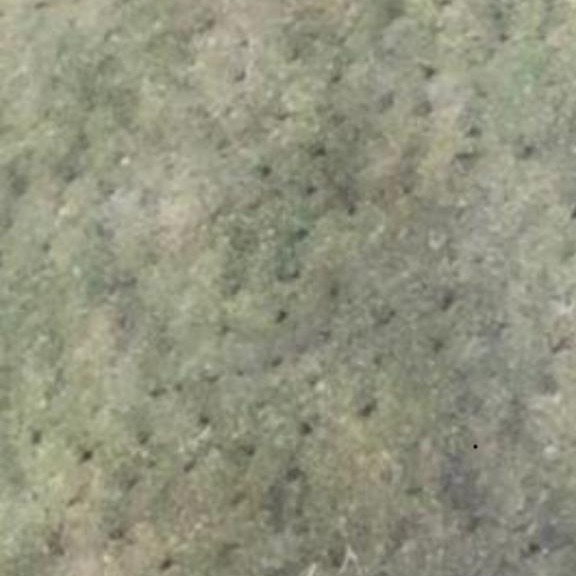
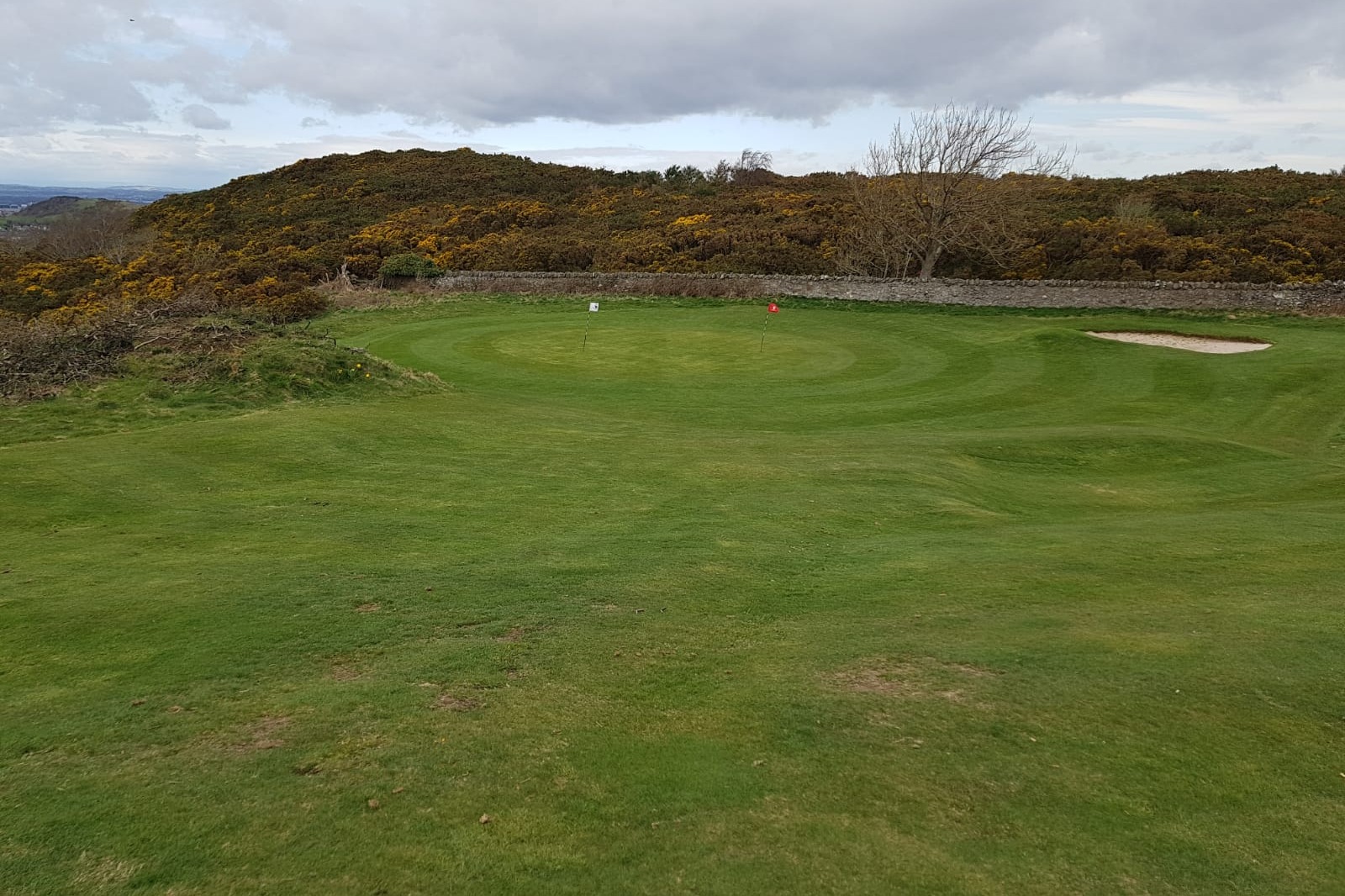

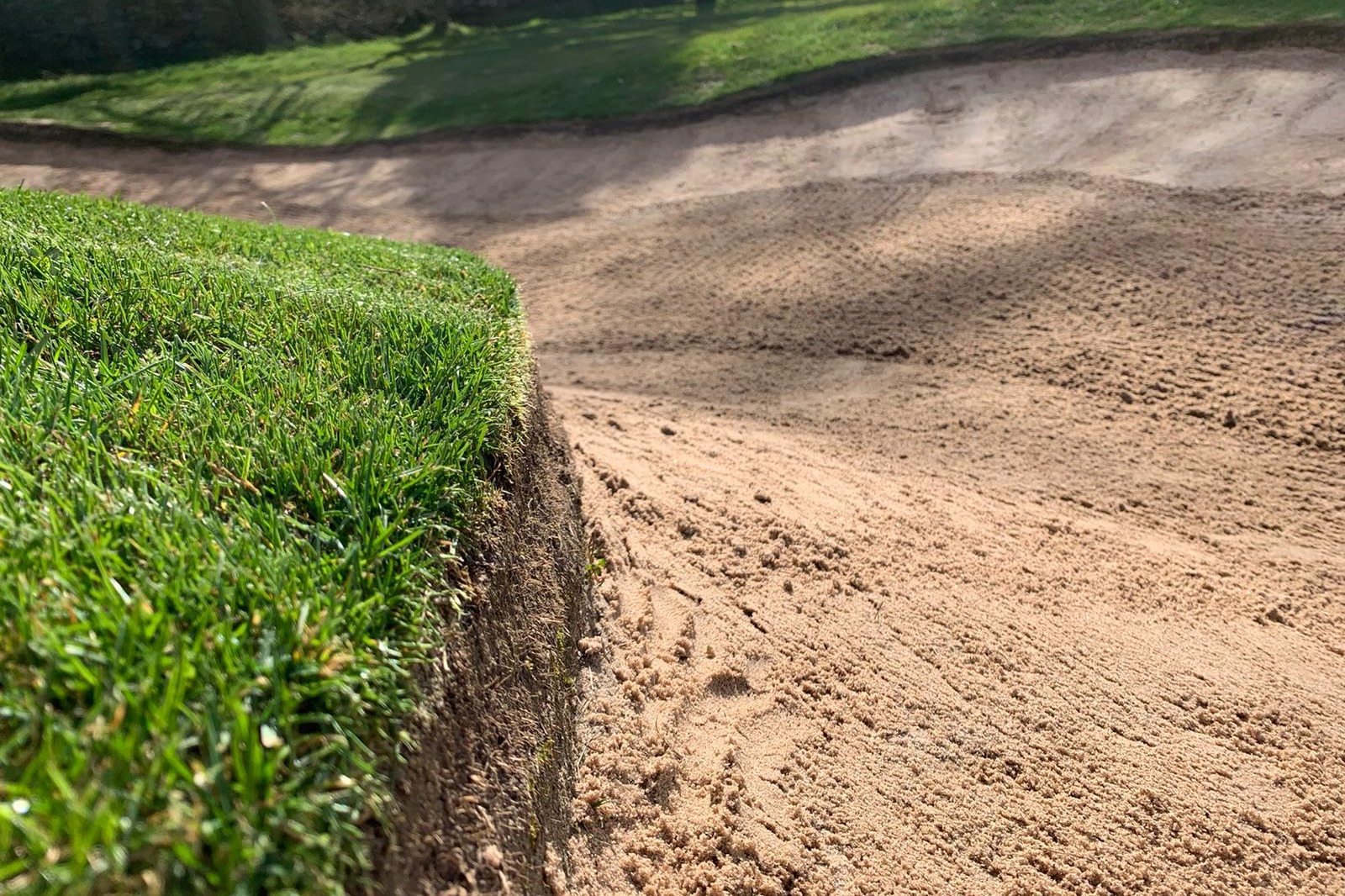

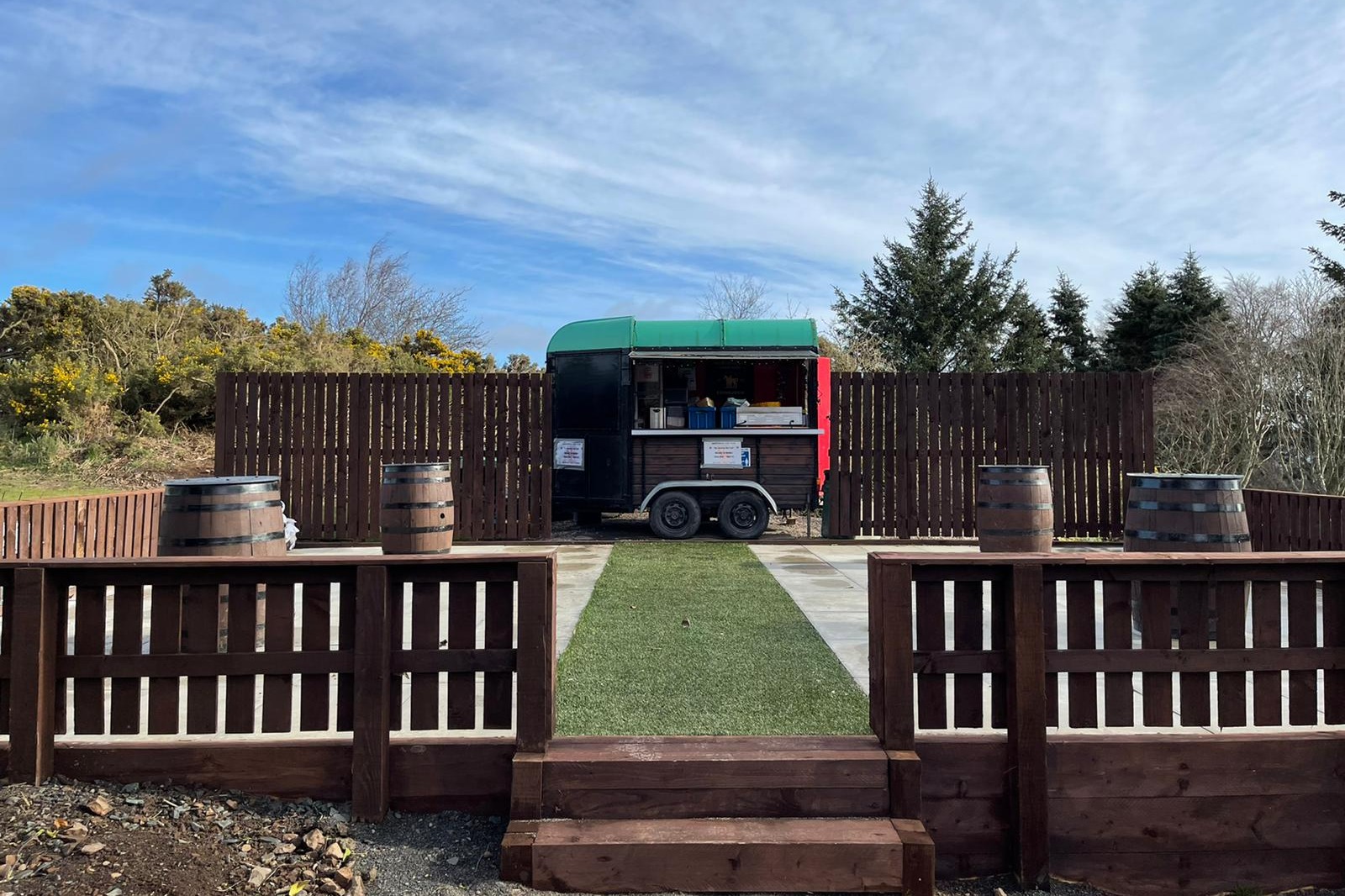


1st Green problem and the solution.
The first green has been a worry for the last few months with the constant rainfall and then the snow. The team have tined and aeriated more than any other green, the lights could only work at half power until parts arrived from Holland yesterday but still the green remained damp and wet in places.
After the storm on Saturday and a further 10mm Sunday evening, puddles were forming which gave us no option but to act.
The picture below shows you the drainage run that was put in some years ago with the main outlet pipe showing at the front. As you can see from the pictures there is no water insight, therefore the water was sitting above the drain and topping up from every storm, we would have not noticed it if it had not been for the incredible amount of rainfall then the snow.
Collectively we agreed that the only choice was to drain the front and open the rest of the drainage to get the green decent for this season, thereafter we will lift the whole green and relay the drainage.
You will see a big difference over the next few days in the way the green will react, fertiliser and seed have been spread.
It was a superb effort by ALL the team yesterday and we finished it ready for turfing last night.
These problems that arise we cannot plan for and to react in the way the team did was first class.
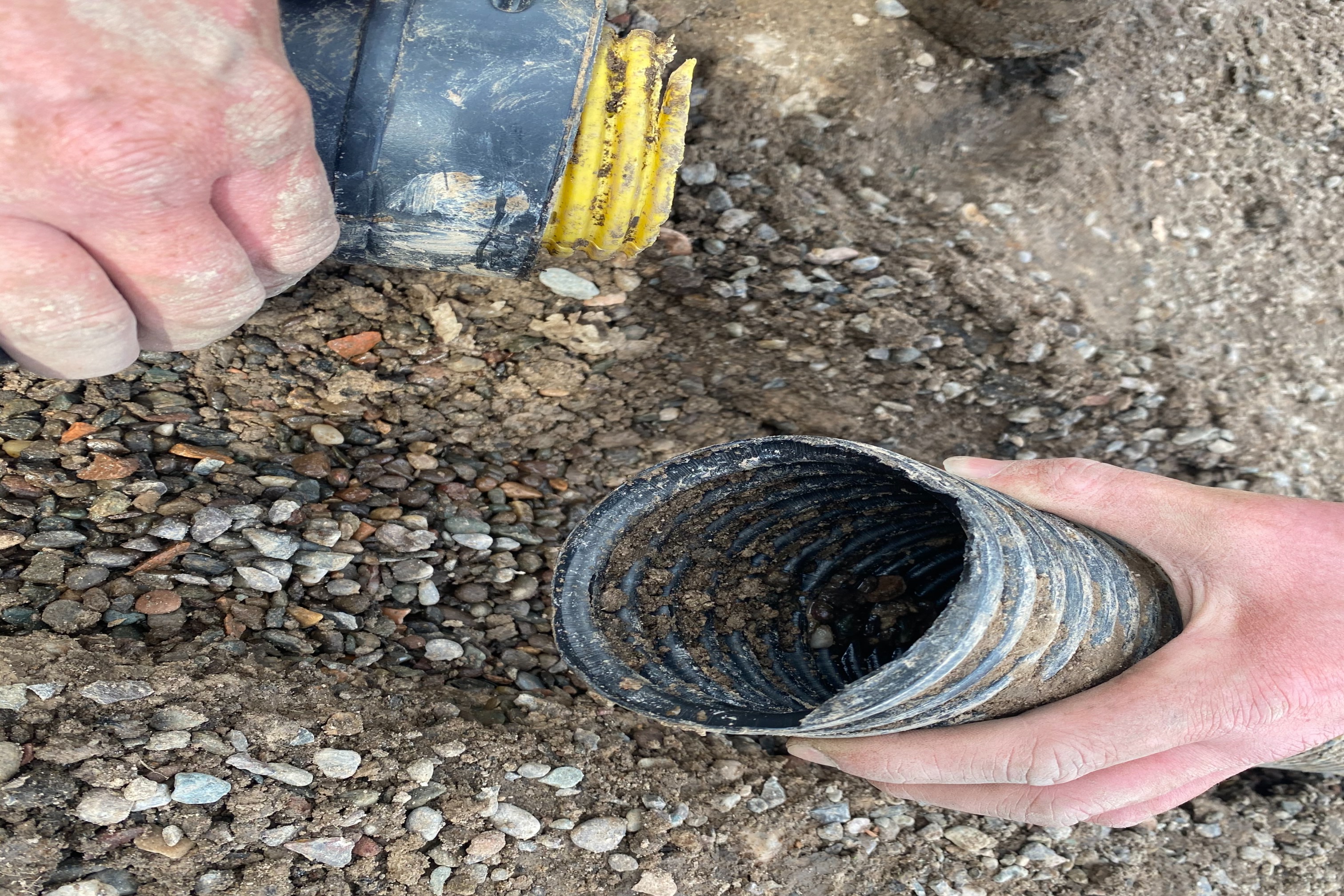

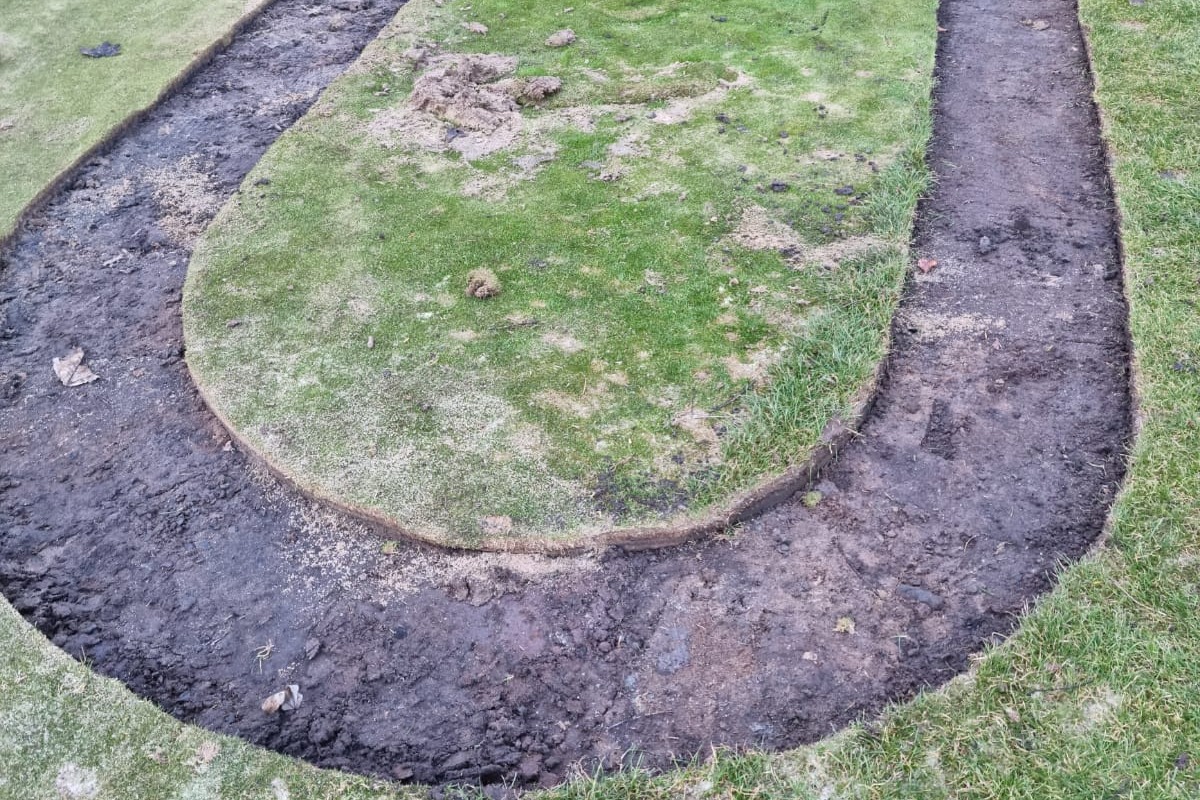
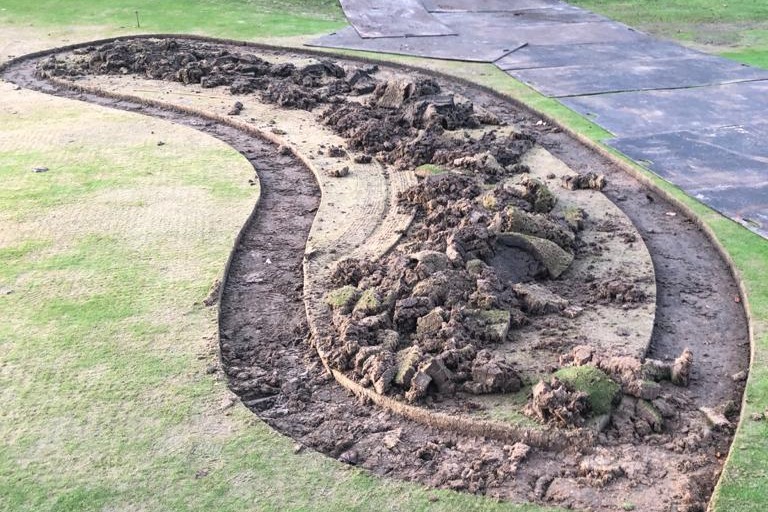
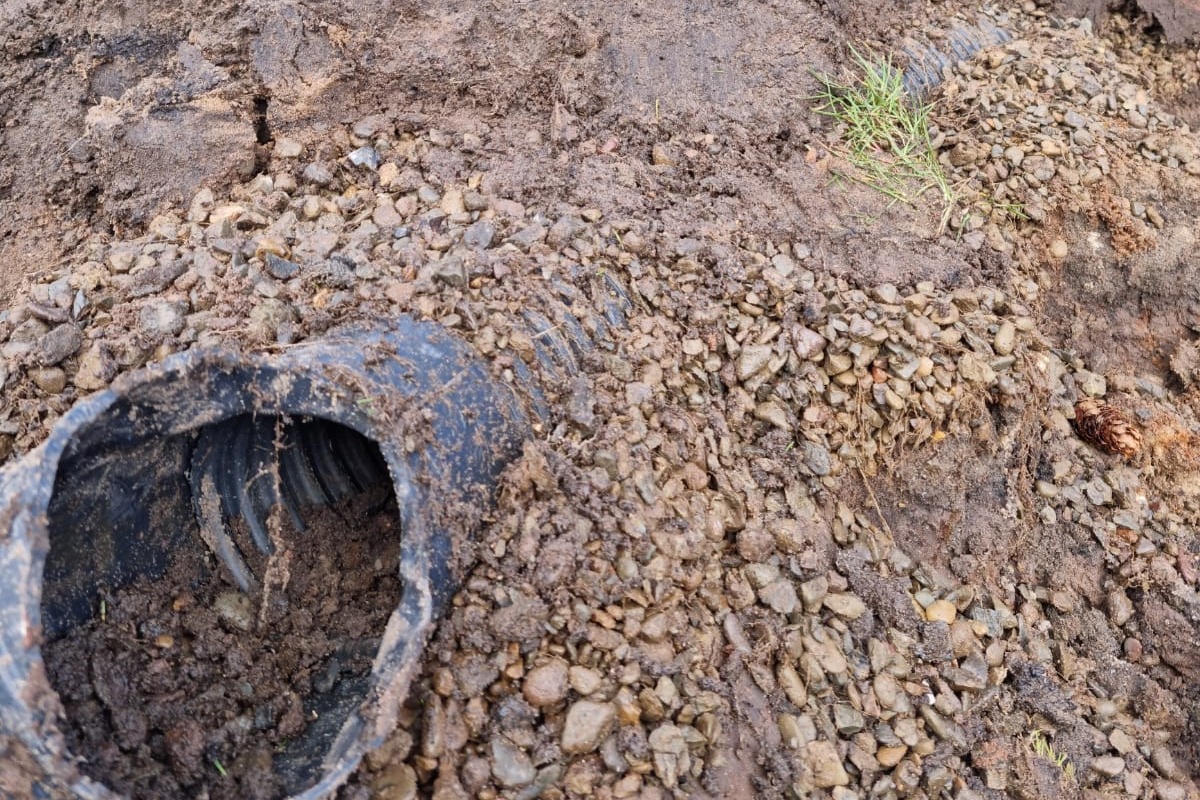
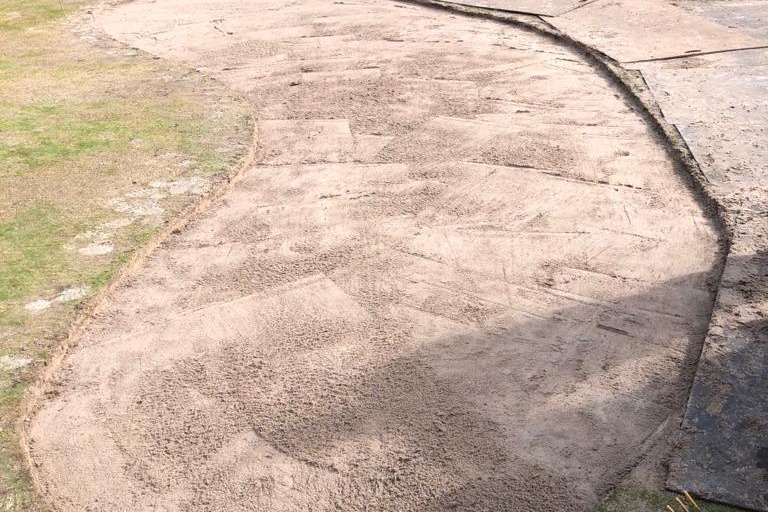

Actual Rainfall
Some have questioned why we have been wetter than other years to their mind, apart from changes to the course we also have had more snow than when we got hit by the beast from the east!
Without the melt just actual rainfall we are now over 400 mm for the last 4 months!
In January we had 134 mm of rainfall and two weeks of snow coverage.
Doug Webster
The Greens Team would like to publicly thank Doug Webster for the work and effort that he has shown as he comes up to the end of his tenure at this year’s AGM.
Not only overseeing some fantastic projects but the help and support that he has given to the individuals, be it with work at MGC or continued education.
The greens position takes an awful amount of time and changes literally with the weather!
We look forward to welcoming Ian, Doug’s successor into the team and hope that the continued great work carries on for the next three years.
Doug has done a splendid job and is a credit to MGC and its membership, sometimes a thankless task as we know we cannot please all the people all the time. One bad round and for sure it is the team’s fault! Doug has always responded to any of the emails be them, questions, or complaints in an extremely professional and prompt manner.
We all hope he can now get on with enjoying the golf course and improving his handicap.
Marching on into March
With the snow having gone and the left-over water to drain it has been a hard start to the month for the team.
March is where we typically get ready for the season and all greens have been cored, sanded, and unfortunately having to put more drainage into holes 2,12,13.
The fairways have been scarified and the rough areas scratched up and wildflower seeds planted.
Tees are being cut in and reshaped next week and cored levelled and cut. The same will happen to the anti-greens/aprons and borders, which will improve the performance of the course from thirty yards in, tighter lies and firmer surfaces.
It goes without saying that weather has not been favourable, and the constant rain is causing a slow recovery for the greens, fourteen of the eighteen we are very happy with the others suffering from a lack of drainage and lips that hold the water from moving off onto the runoff areas.
Hole one suffering the worst with the lack of sunlight and air, has made us look at different ways of drying them out to get the growth for this season and do the drainage work at the end of the season the same as 2,12,13,14 this last winter.
Next week we will have heat lamps one lamp covers ten sqm, we have been fortunate to acquire them and they are used at courses such as Trump Aberdeen and Valderrama as well as a place that have quite a few green jackets.
The difference and the speed of the recovery will be quite amazing. We will continue use them around the course as and when needed to further the playability of the greens. They will also be used to start the team’s nursery for fine turf, this in future will be used to replace the turf like for like, the same as the turf at the bottom of hole nine has been used for the surrounds on the greens.
The 12 hole had to be replaced at the front with the amount of water and the drain from the bunker not helping it would always be a problem going forward. By doing the work which was done within a week it will again put us in good stead going forward.
Some have asked who does what? The making of a good team is always the fact that we have strengths and weaknesses within the group, while someone is sweeping up another could be fitting drainage pipes while someone else is clearing the side road etc. Individuals are not as important has the whole group working together, that is starting to show within our team and will get better and stronger given time.
The goal is to eventually move to two teams, course set up and cutting and dressing teams that work different shifts, this also will be dependent on the weather, but the best cuts are always the dry ones and that is normally later in the day. With having David and Grant to lead the teams and able deputies in the ranks to step up if needed it will only strengthen the product that we deliver.
We have said that the greens will be cut at 4mm Monday, Wednesday, Friday with rolling on the other days, on comp days then of course we cut and roll. (weather dependent)
The dressing will happen in an evening and brushed ideally the night before the cut, coring the same as last year 6 times done from a Sunday evening giving us quick recovery and less impact on the membership.
Below are various photos showing the work at the start of the Month more to follow in a week’s time.
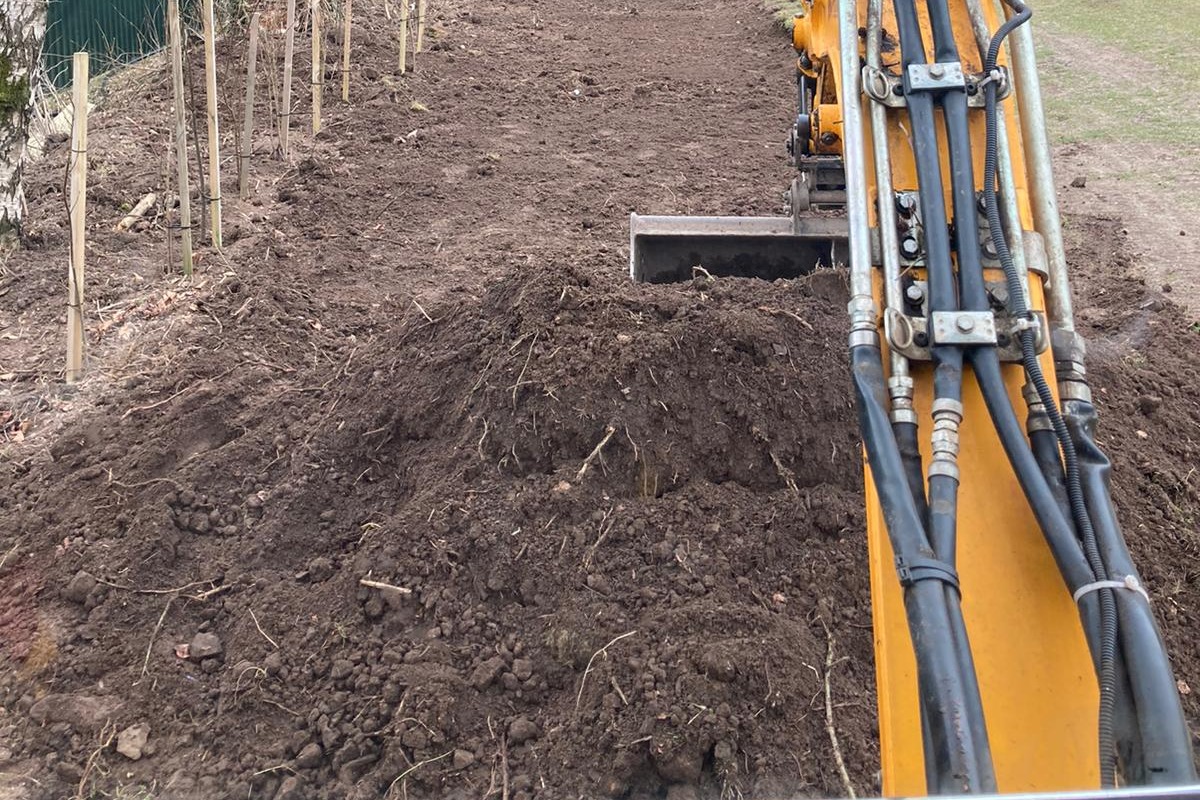
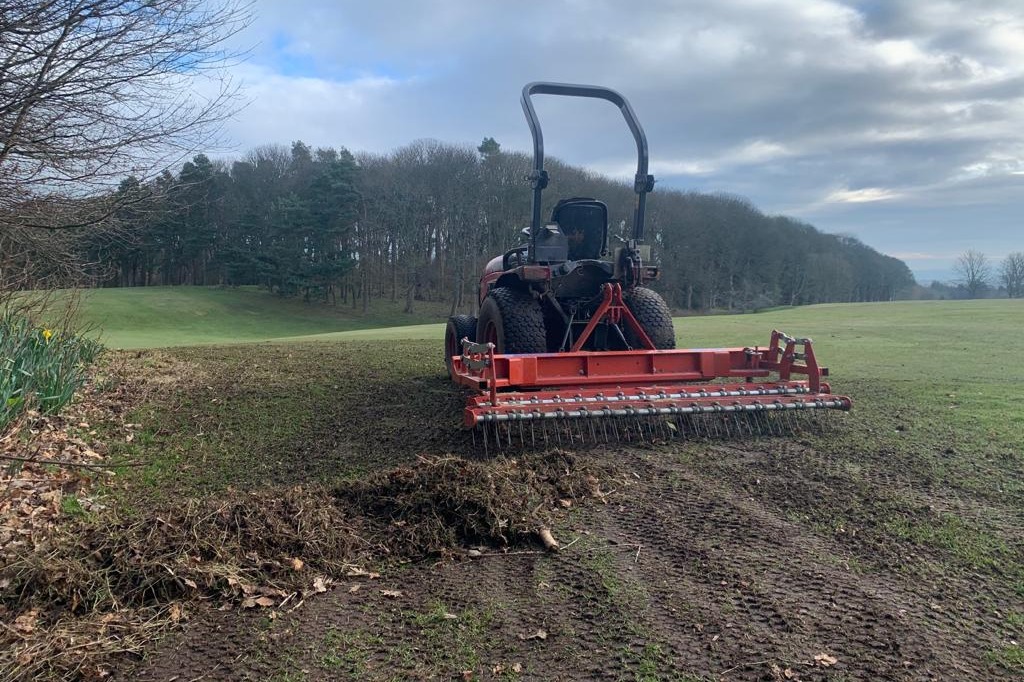
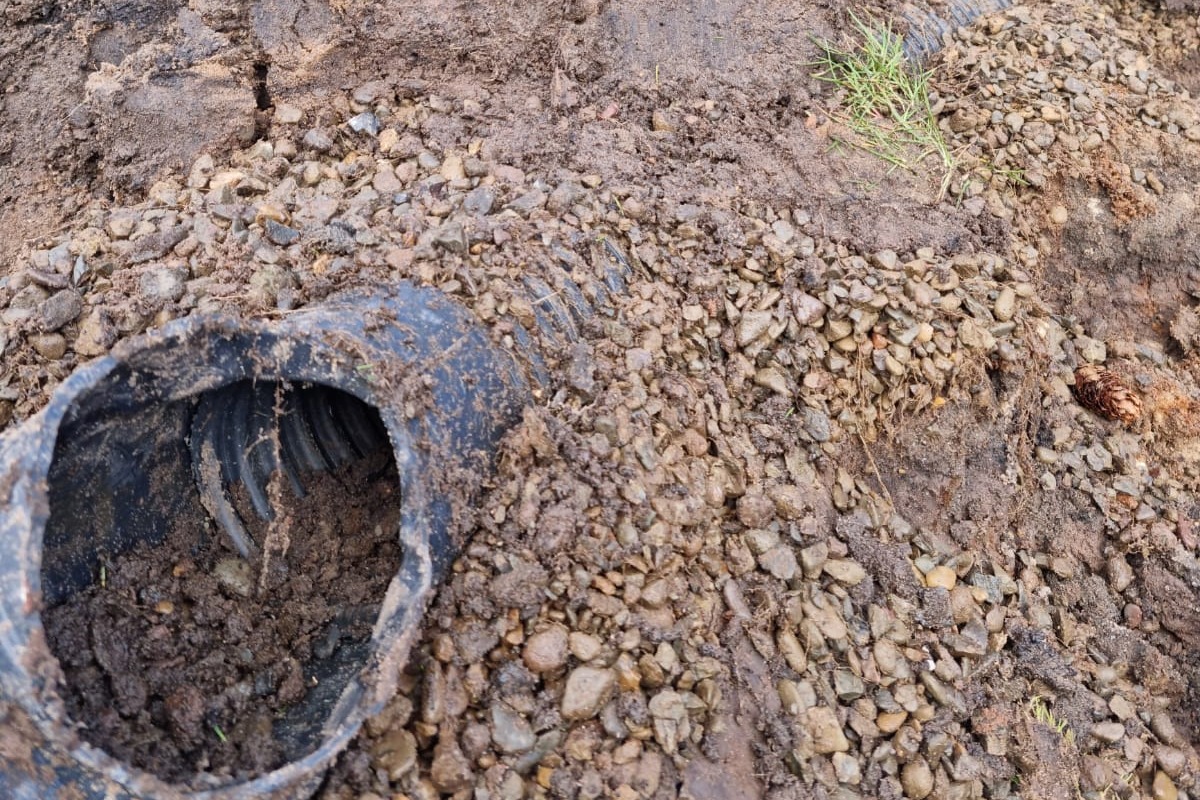

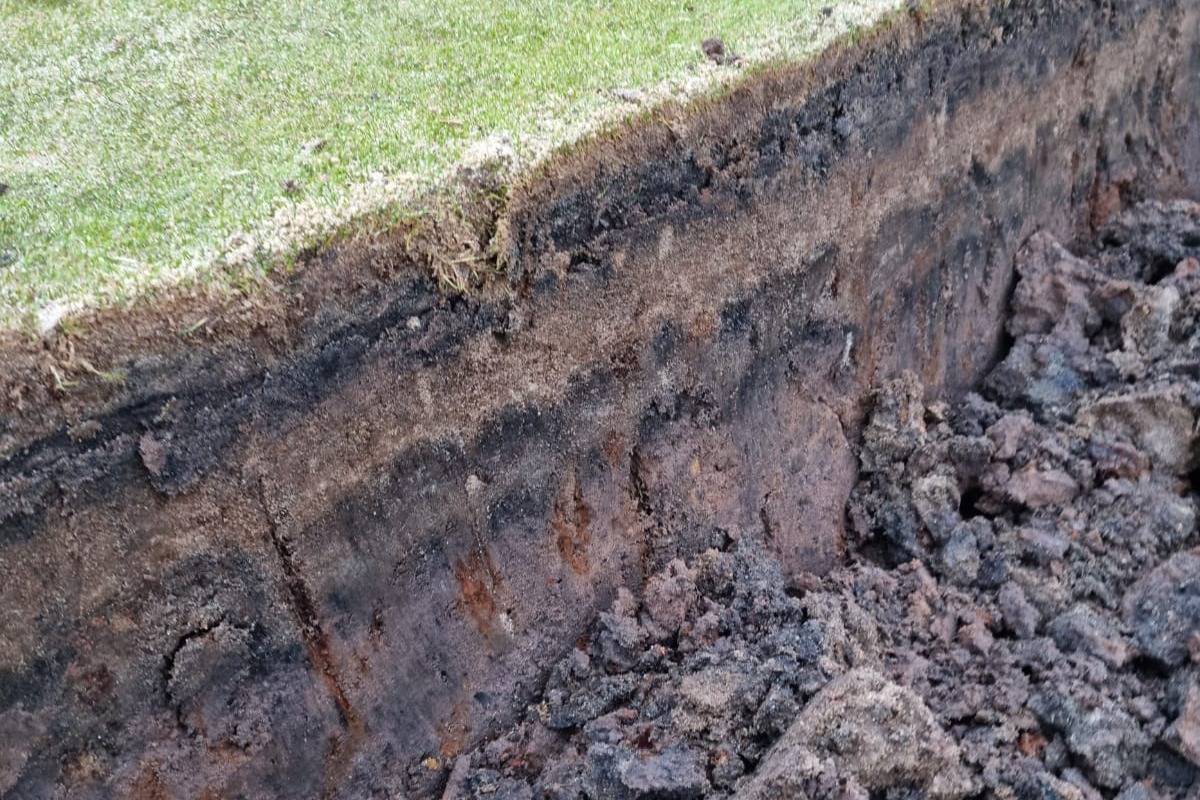
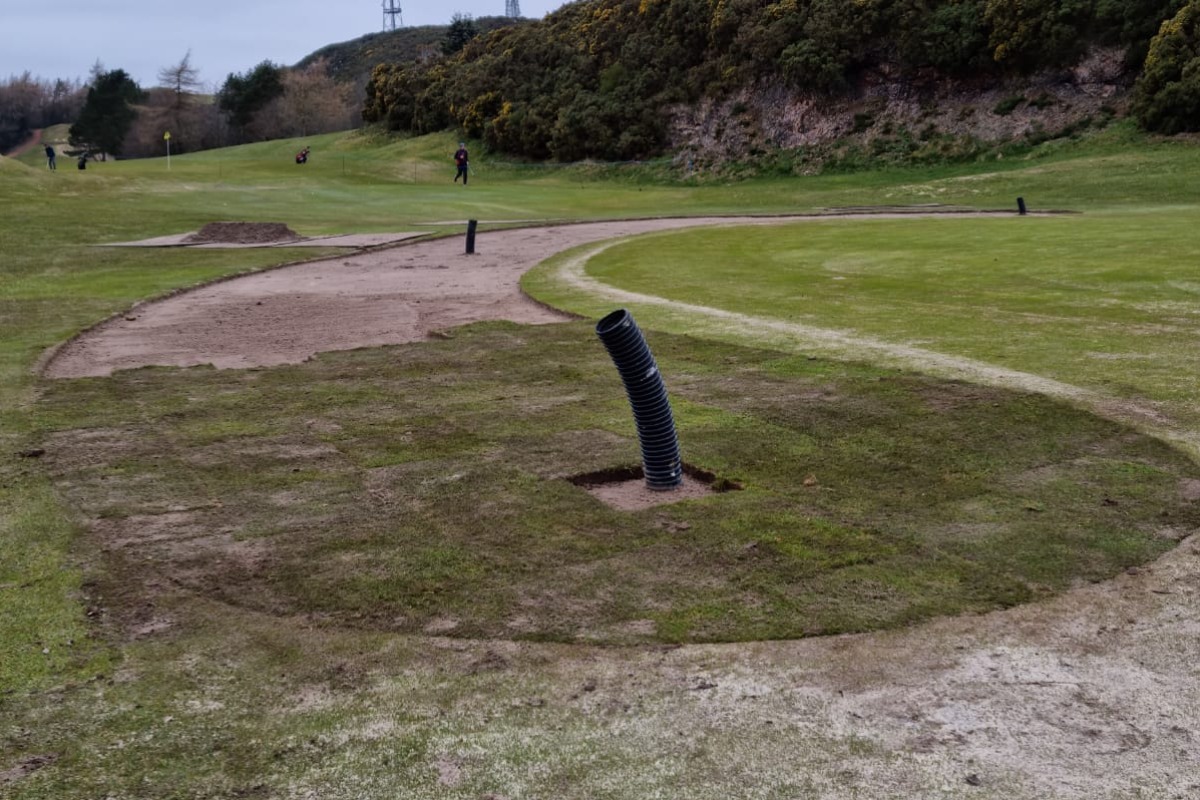
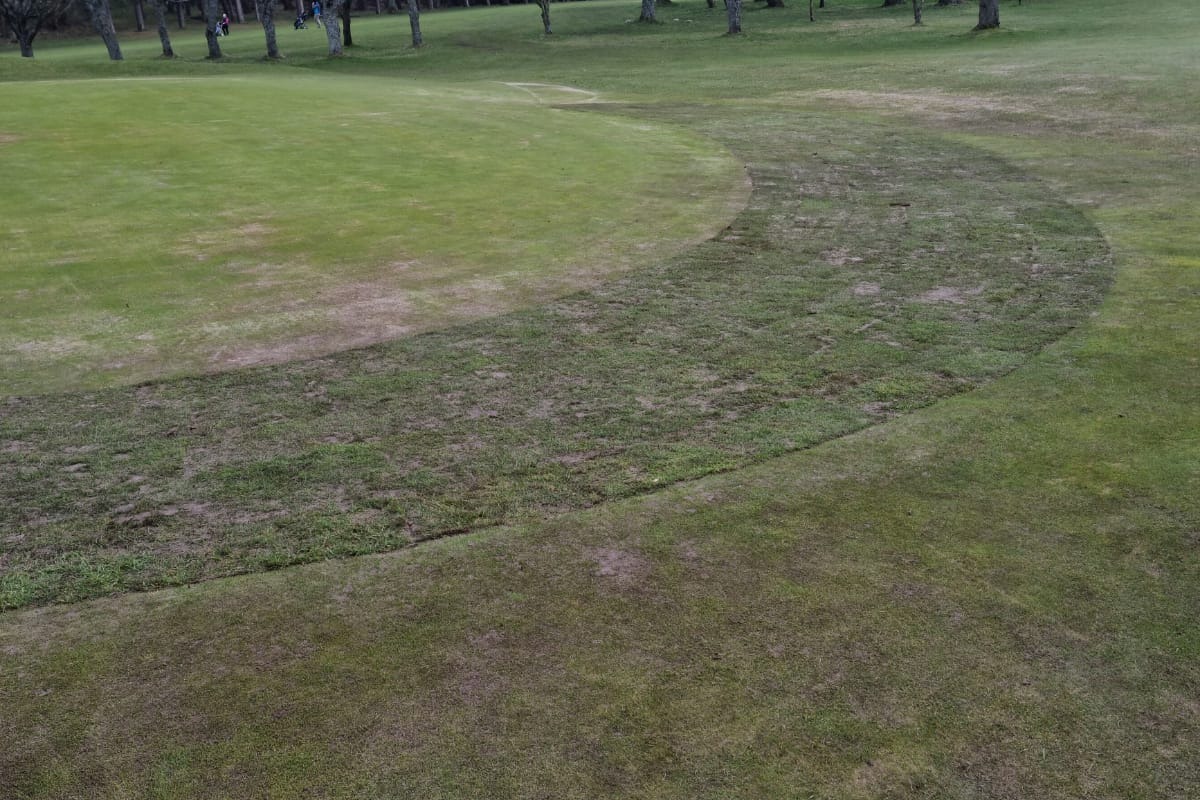
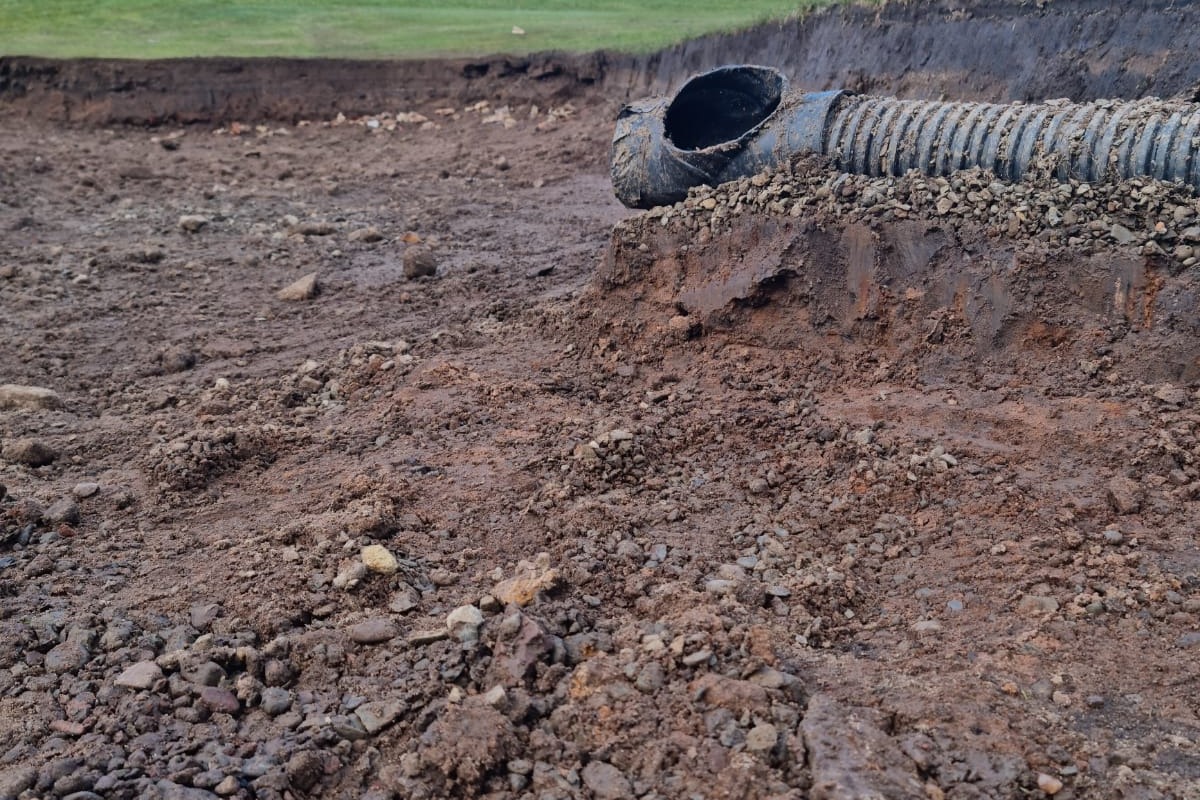
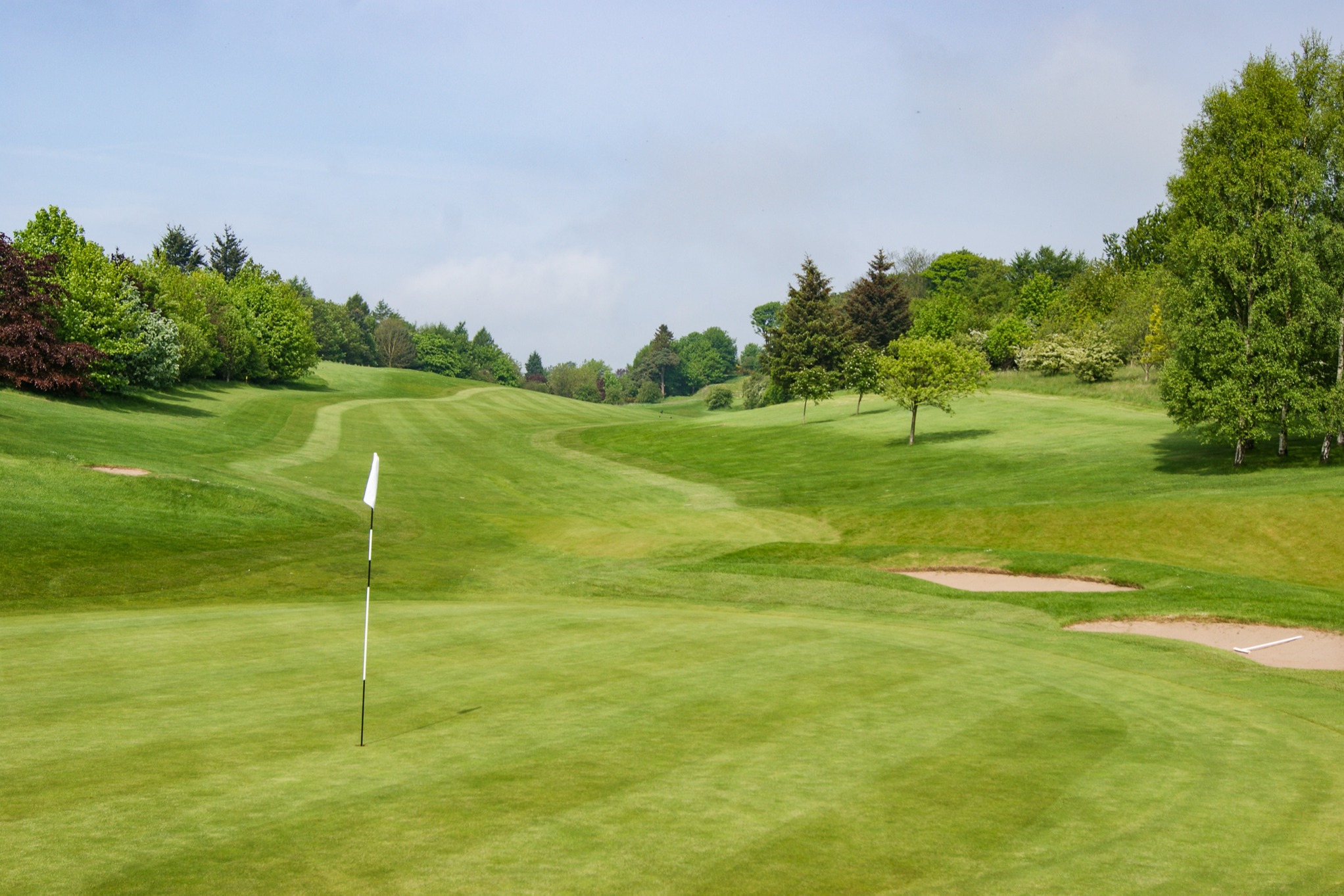

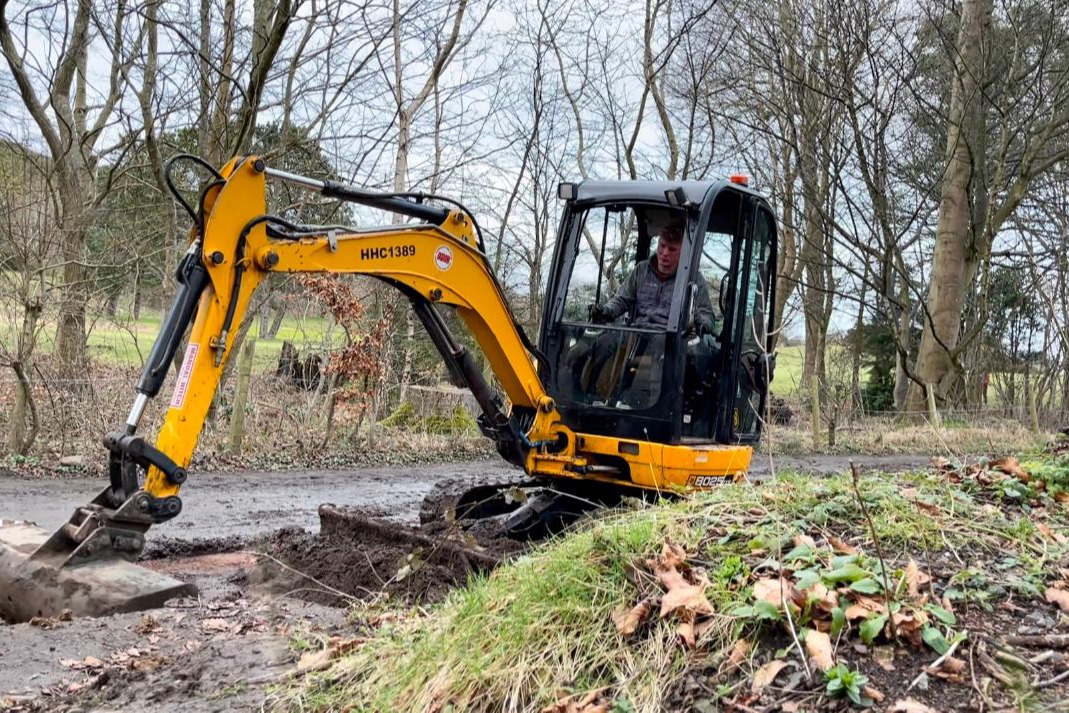
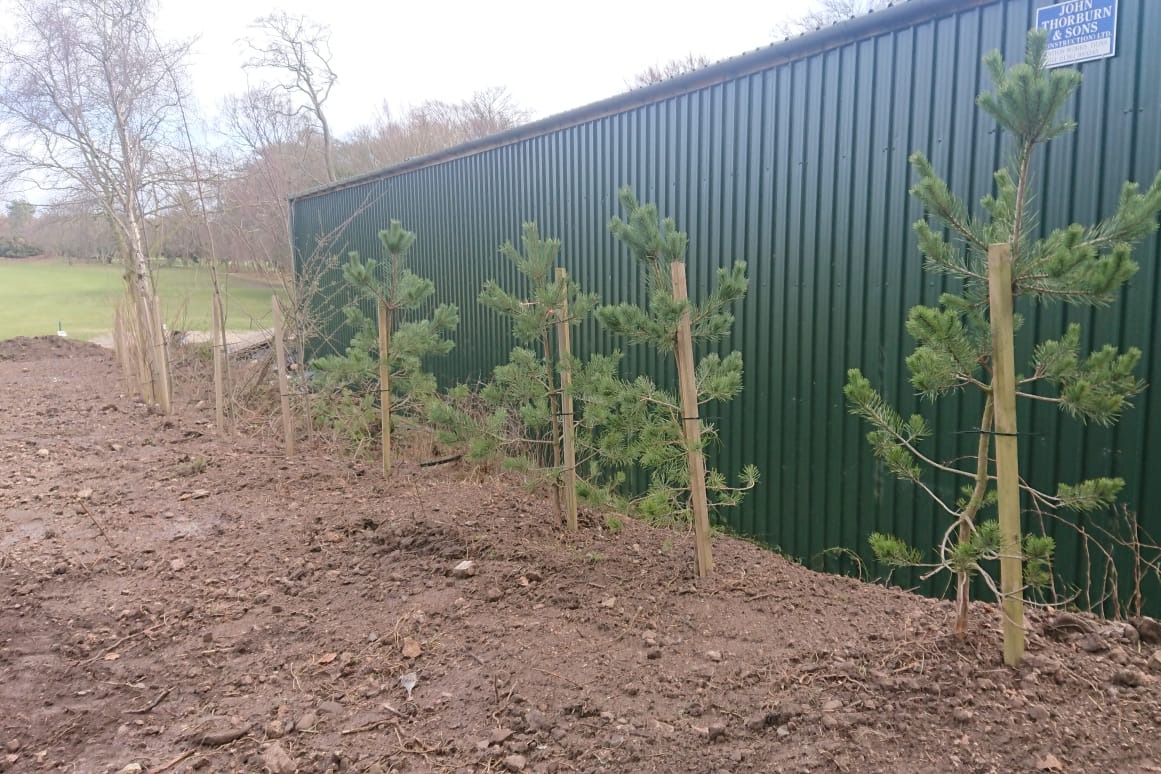
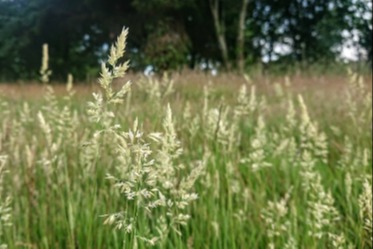
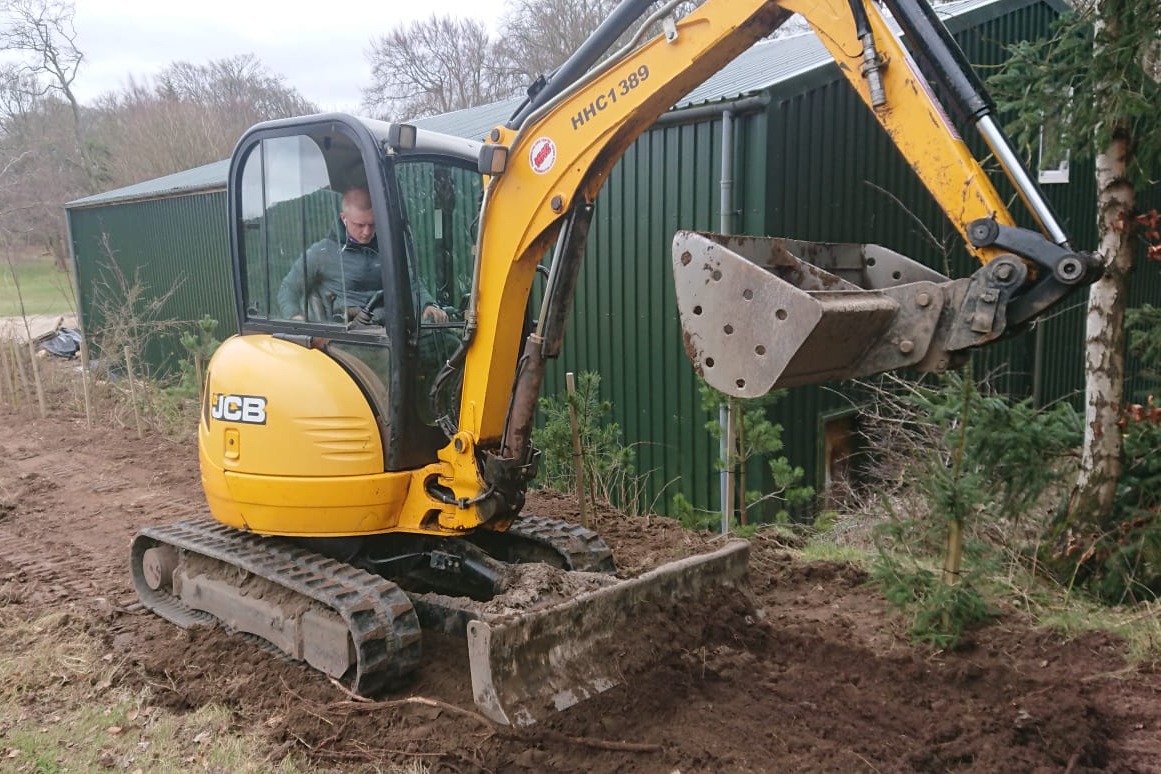
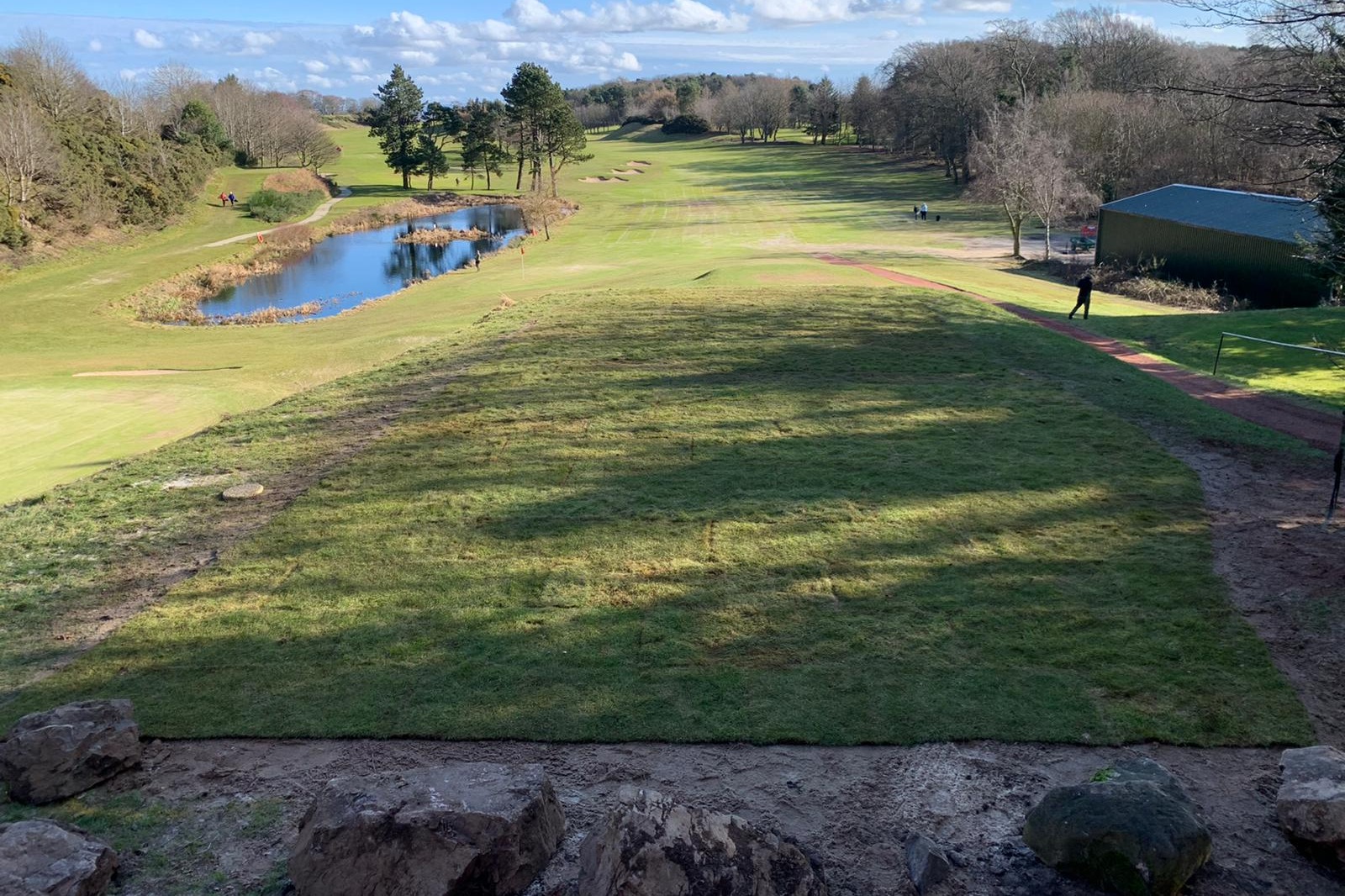
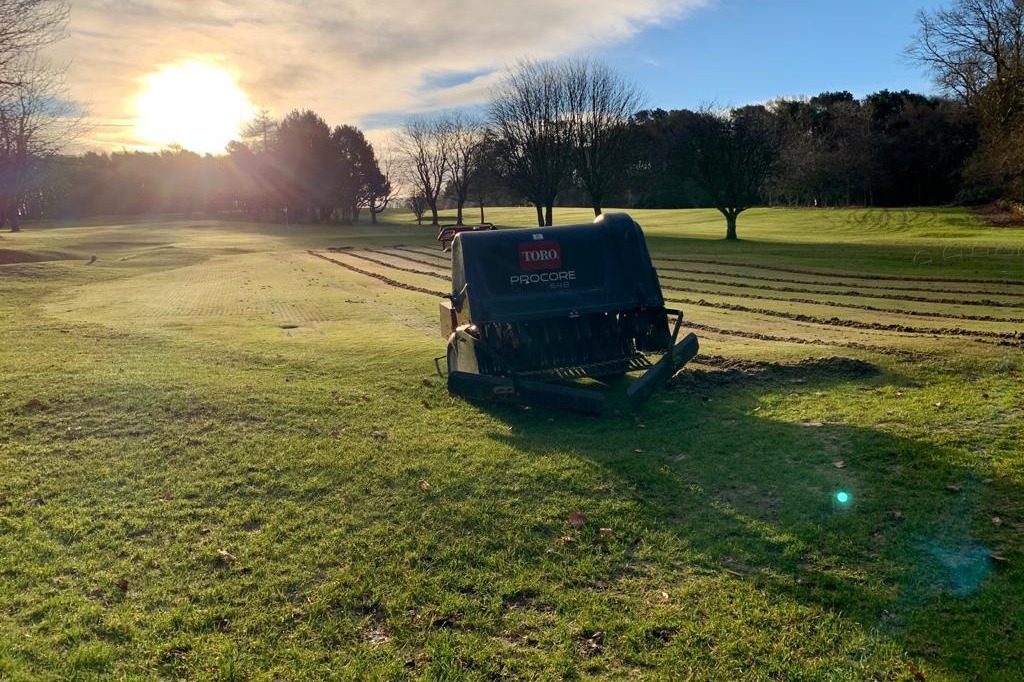

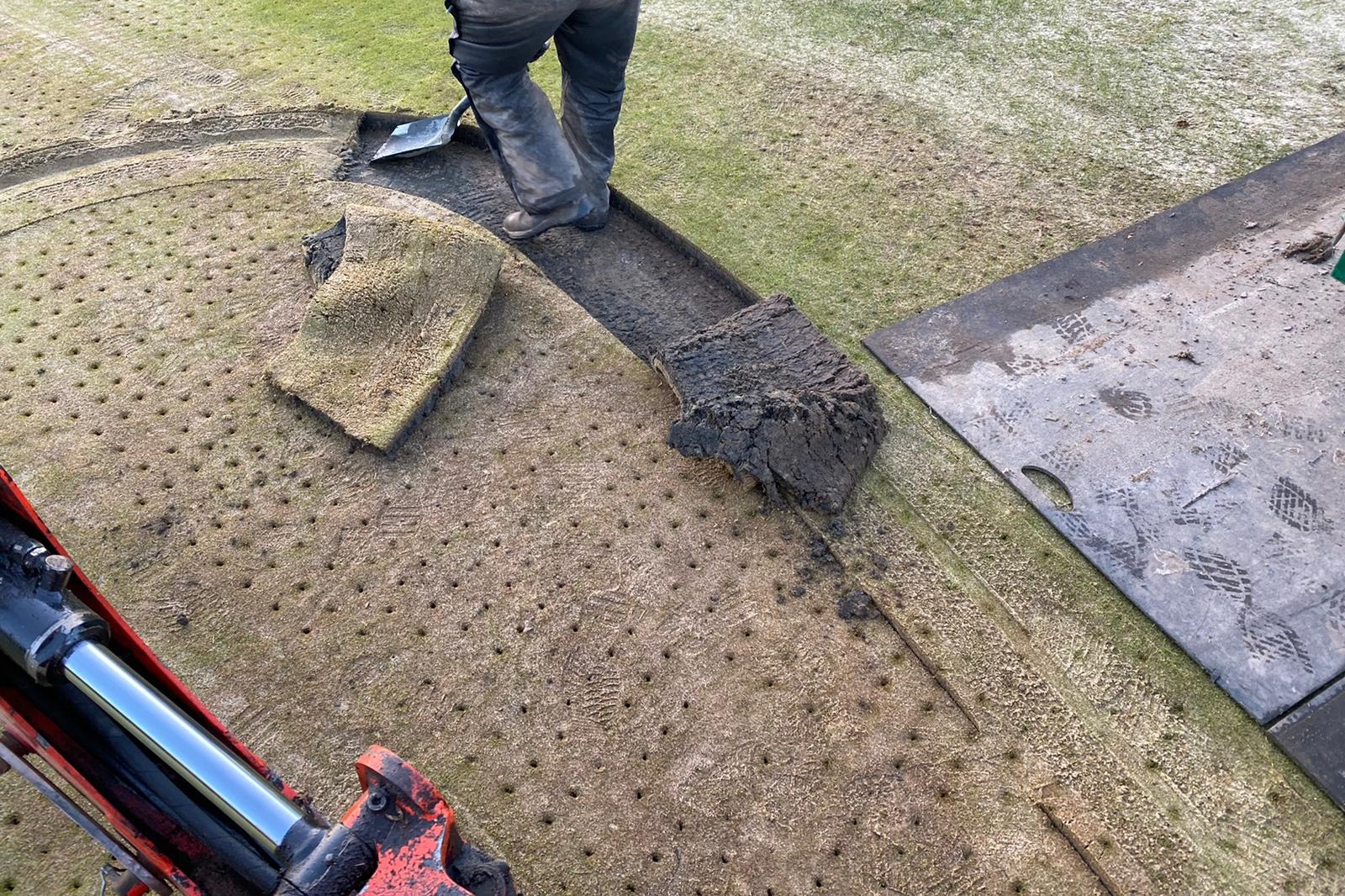

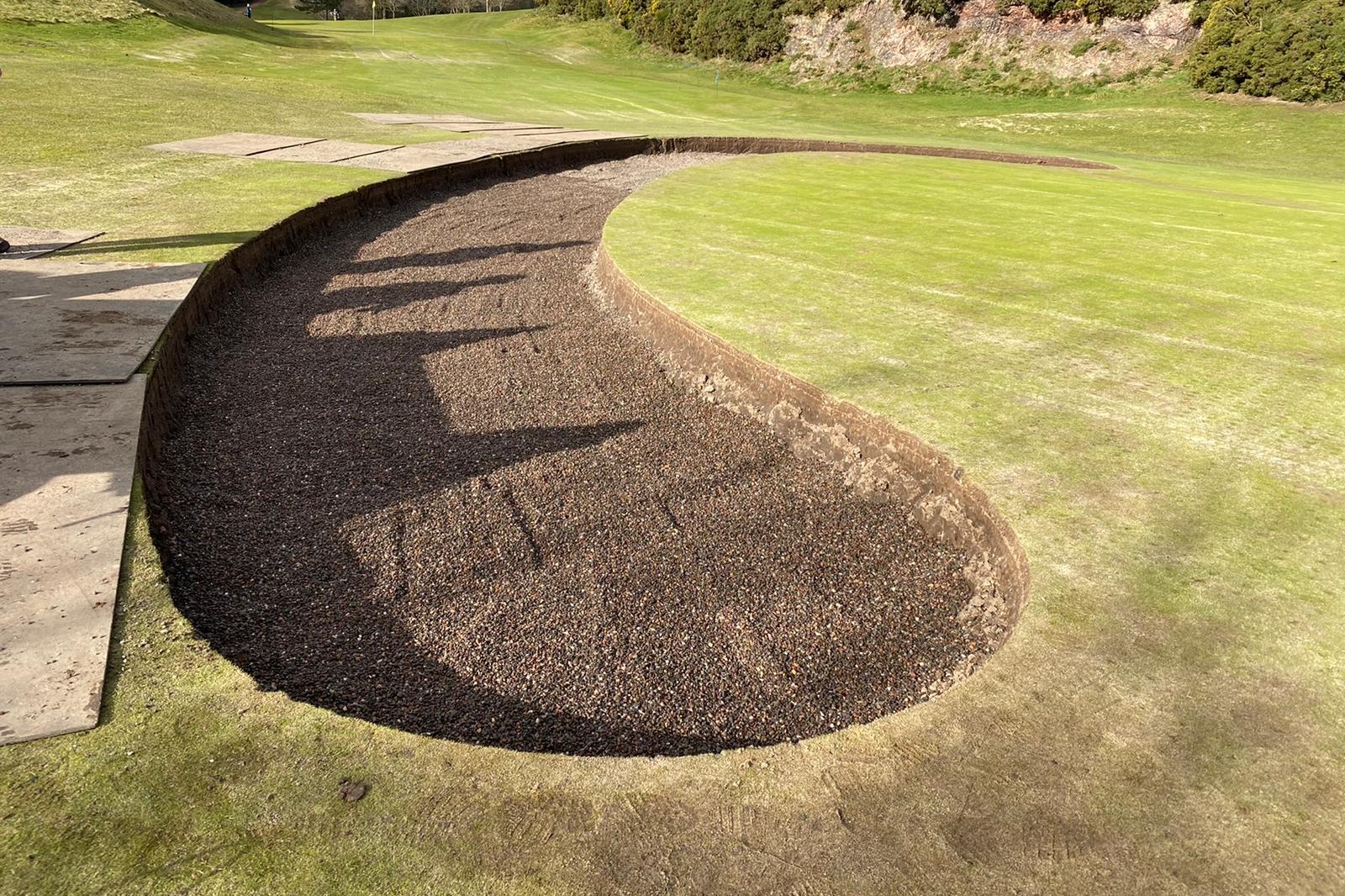
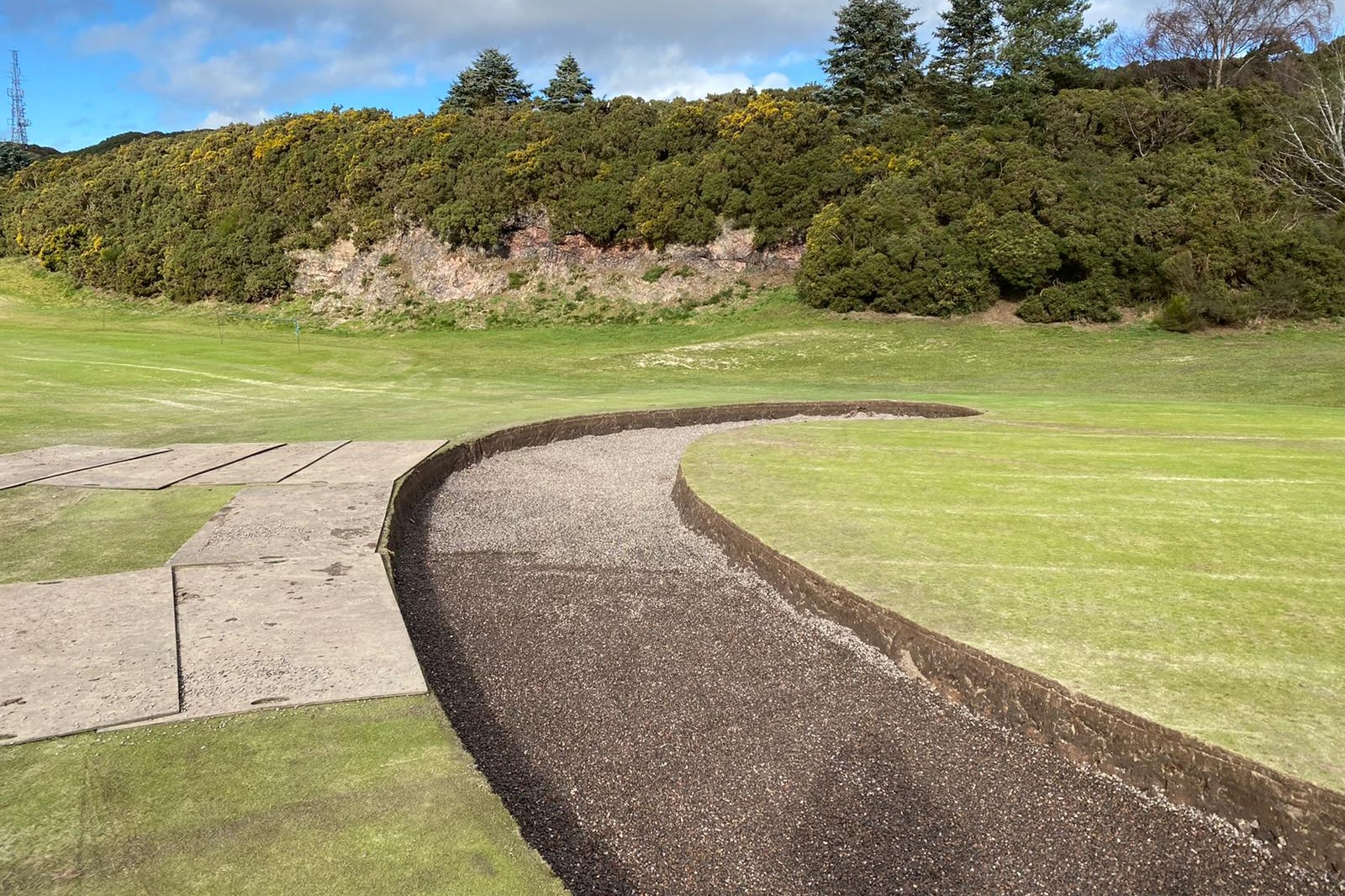
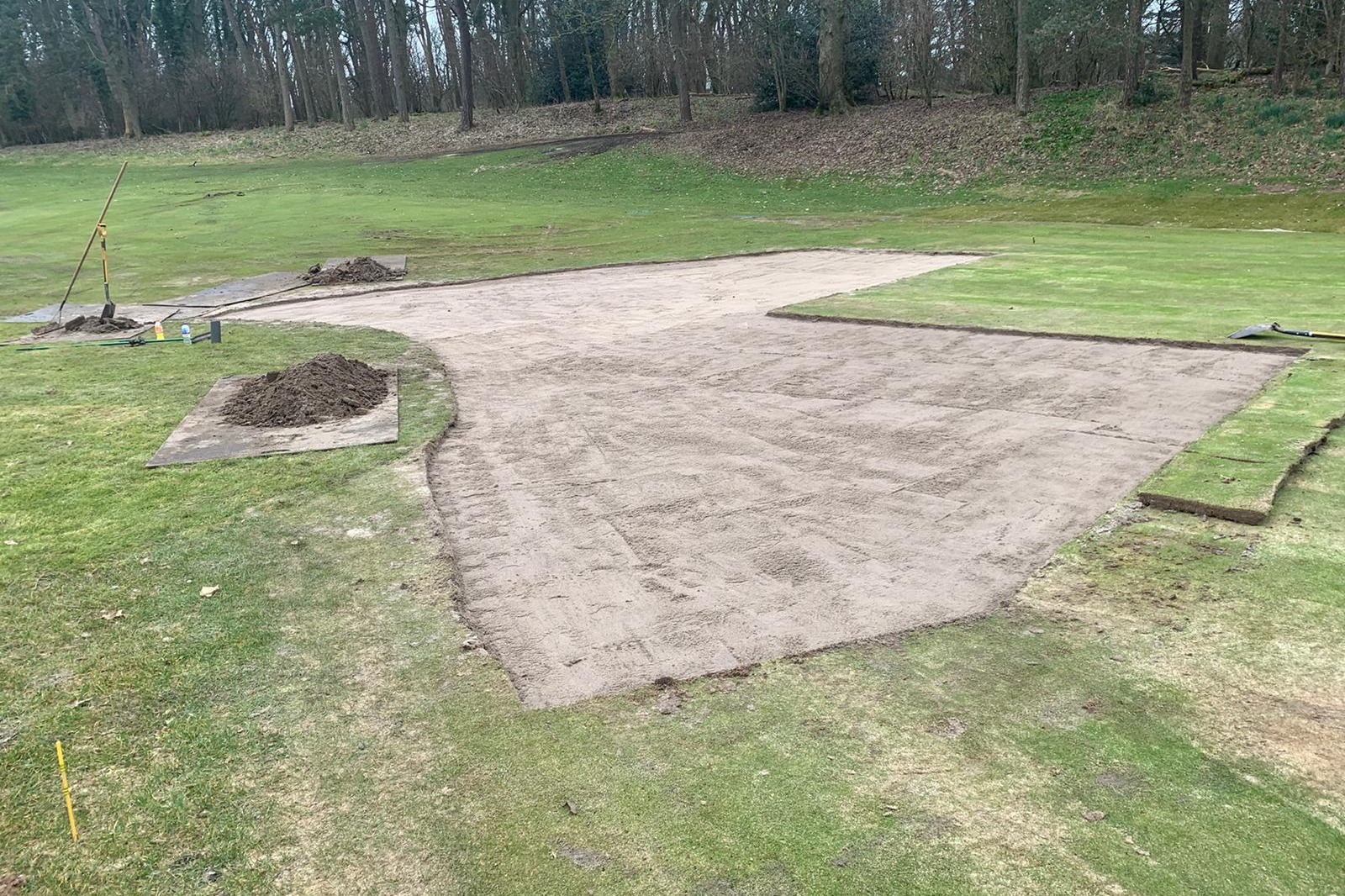
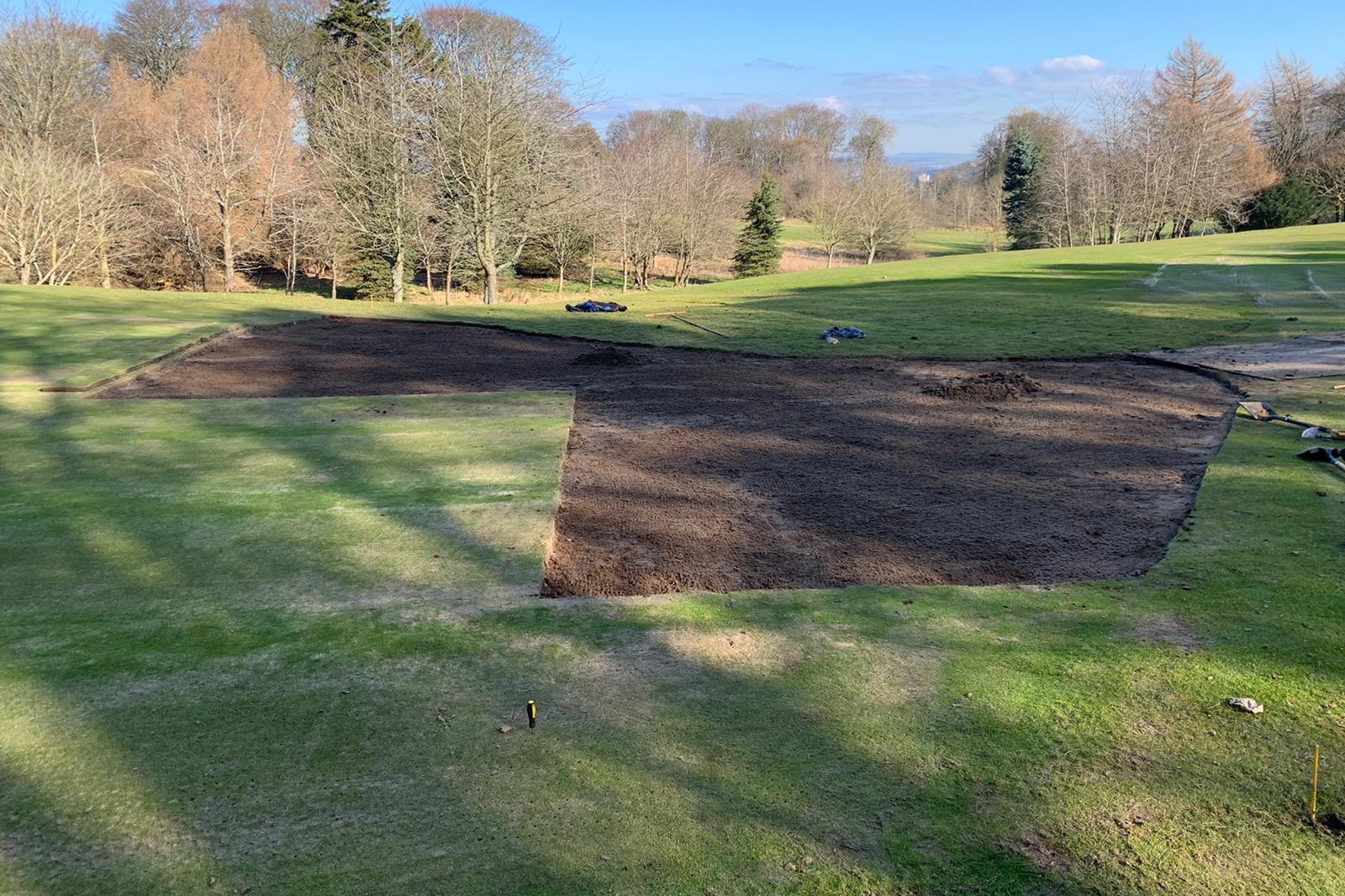
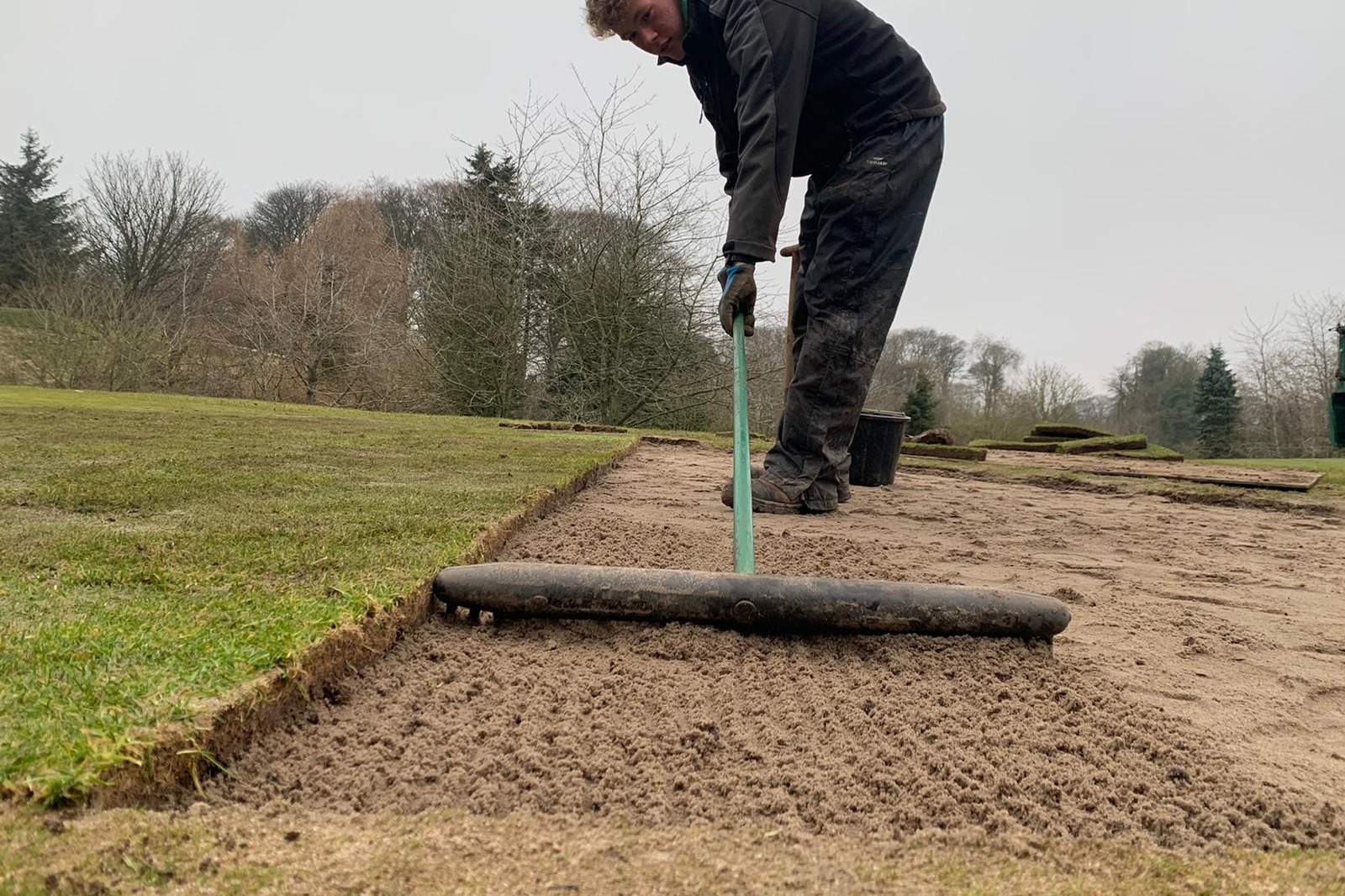
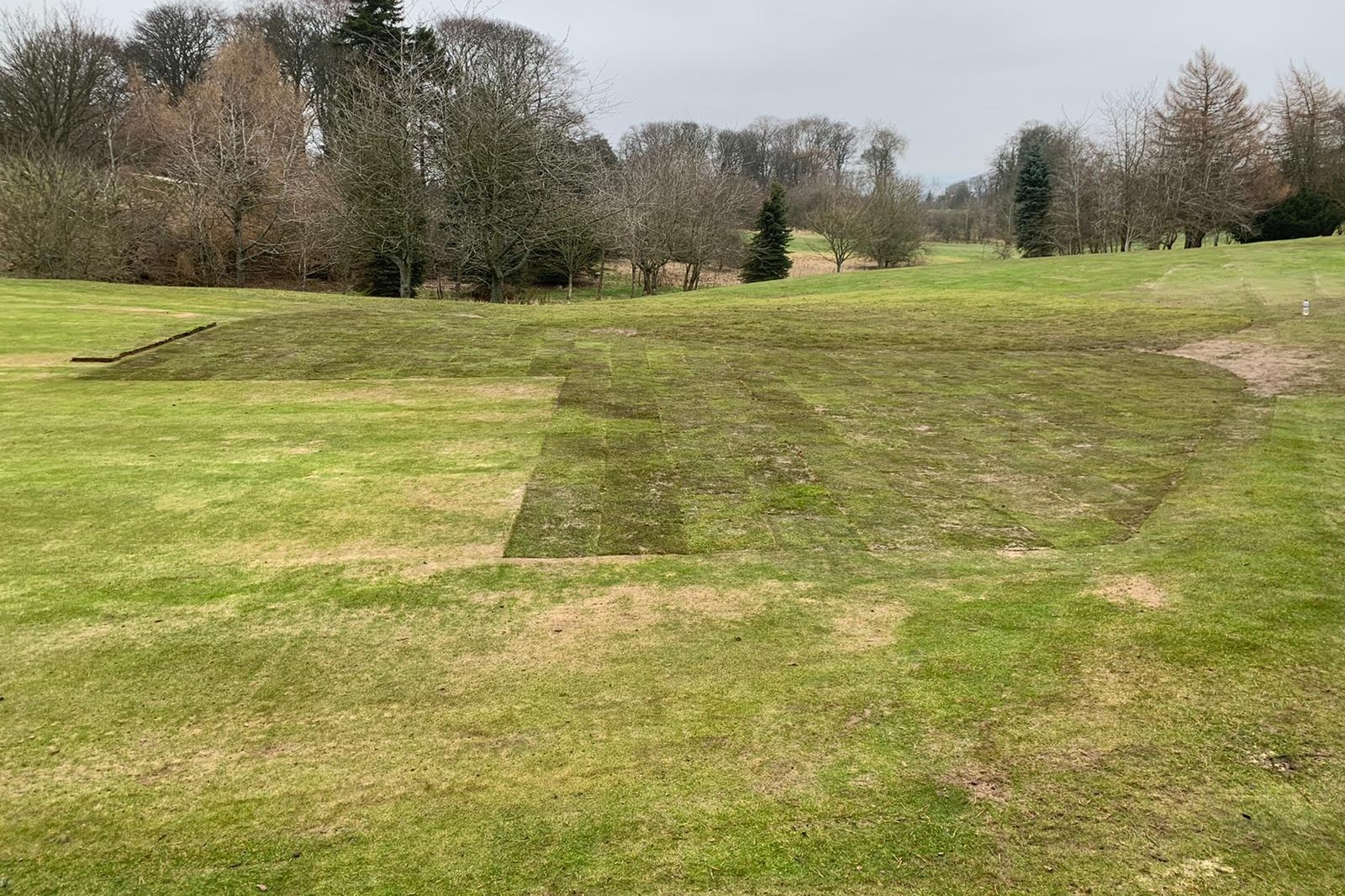
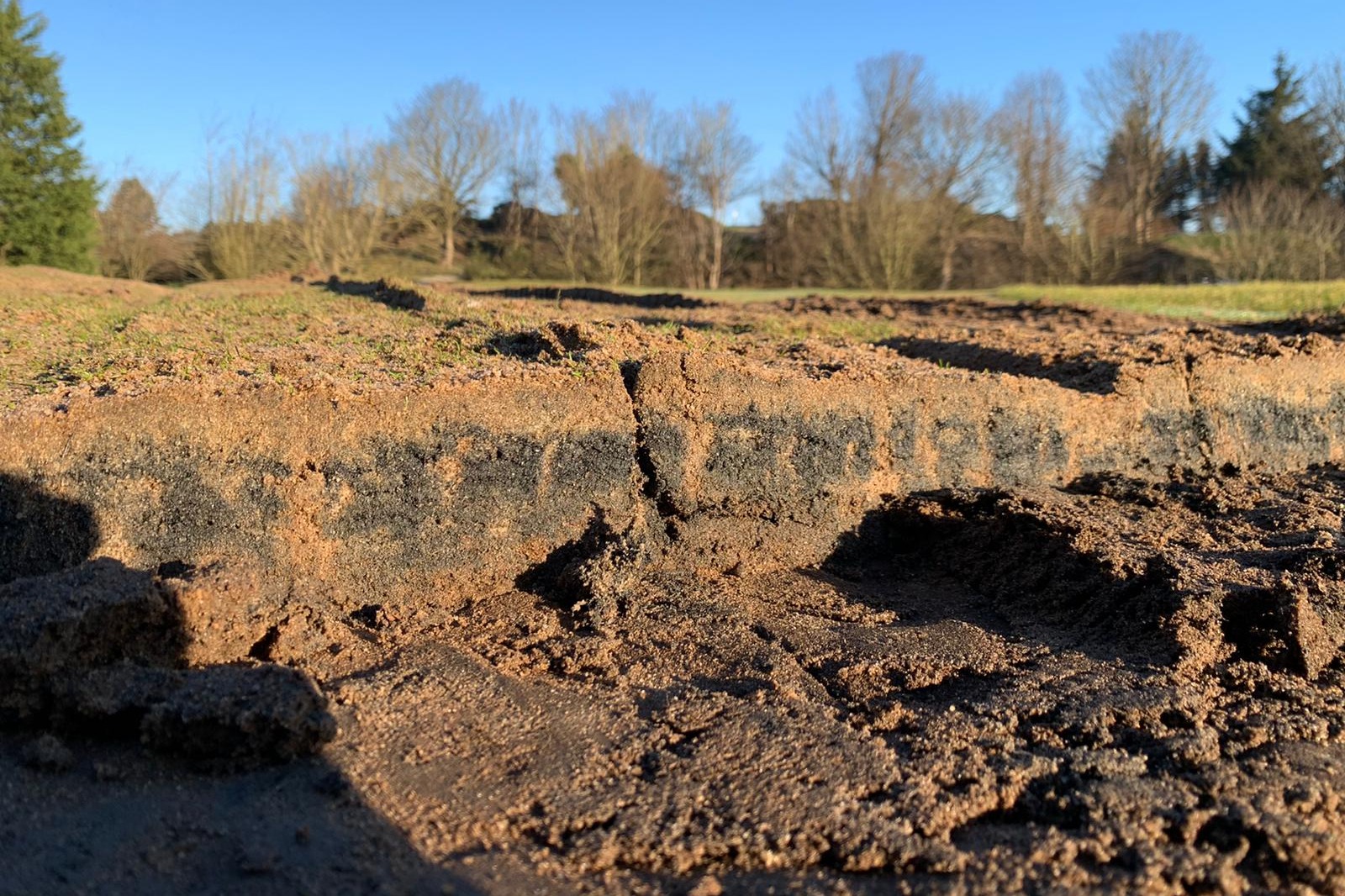
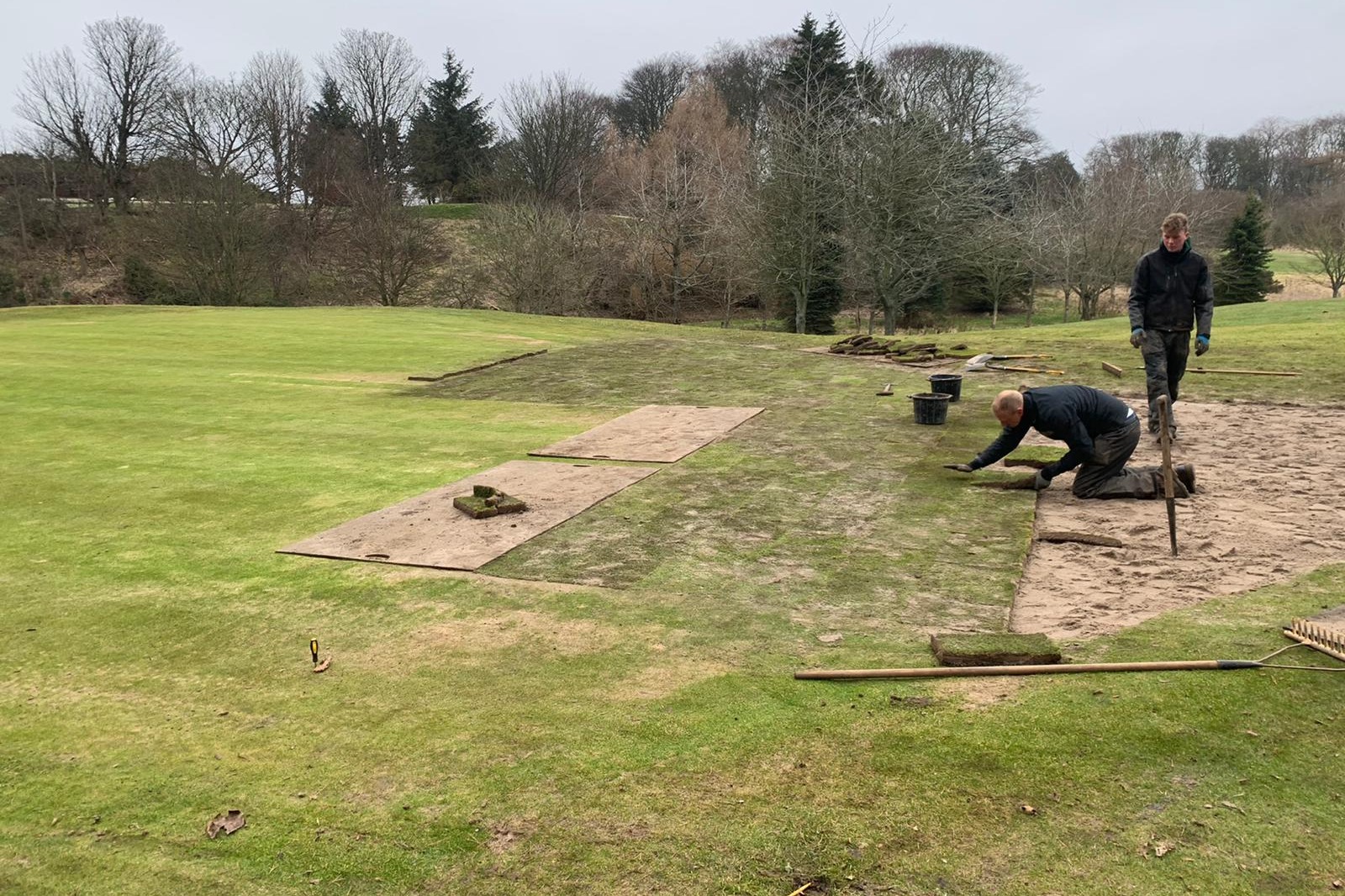
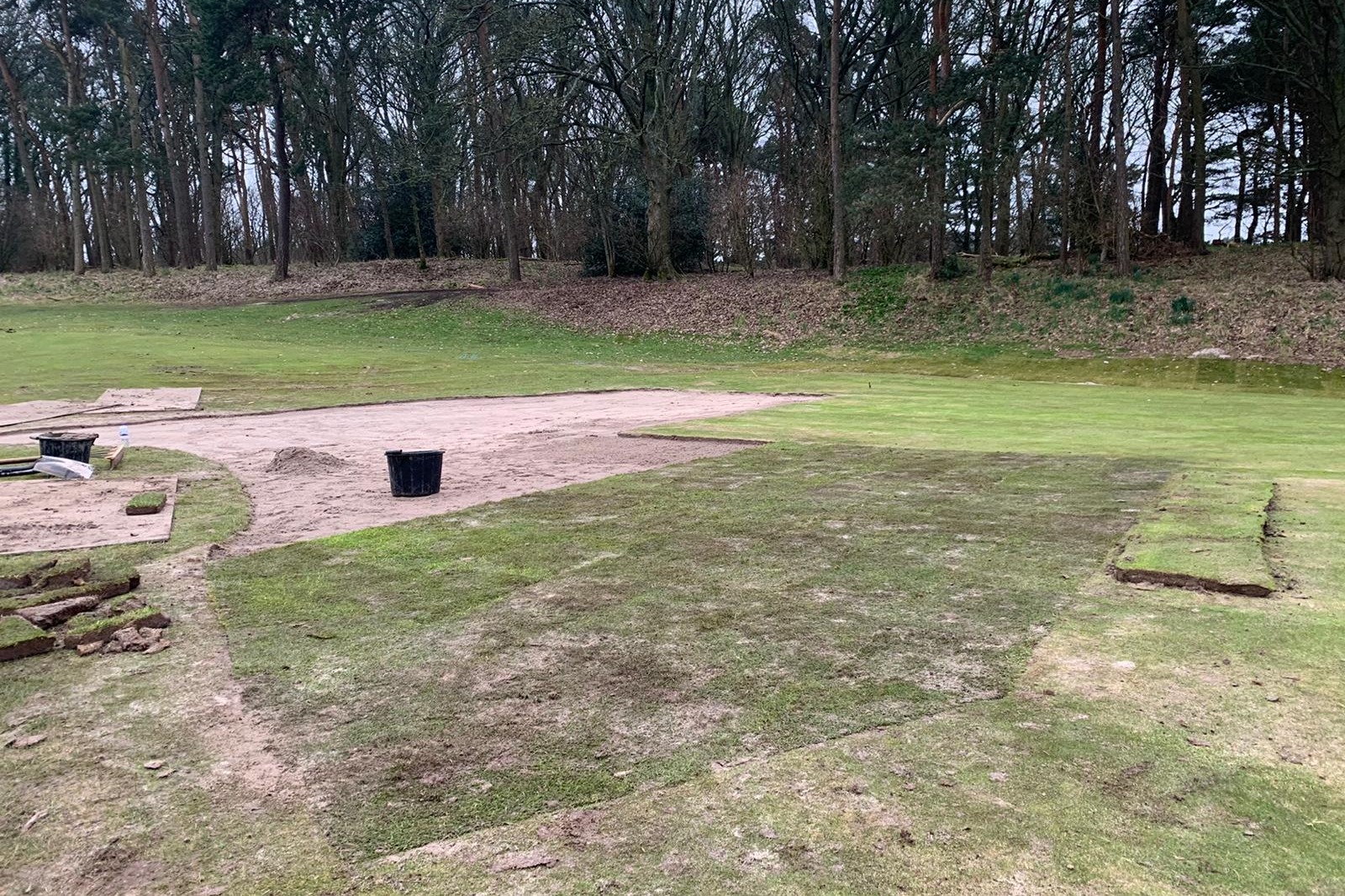
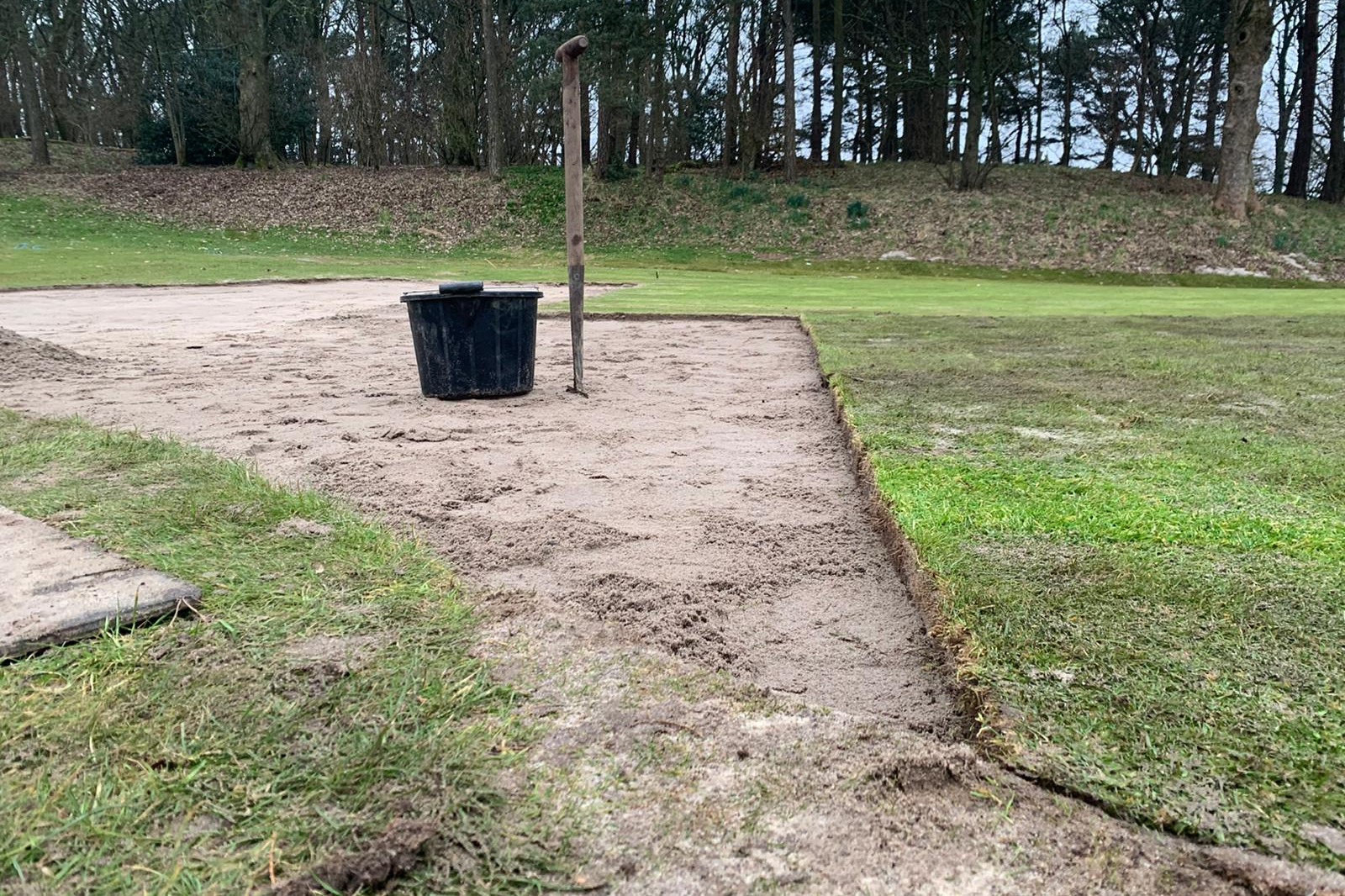
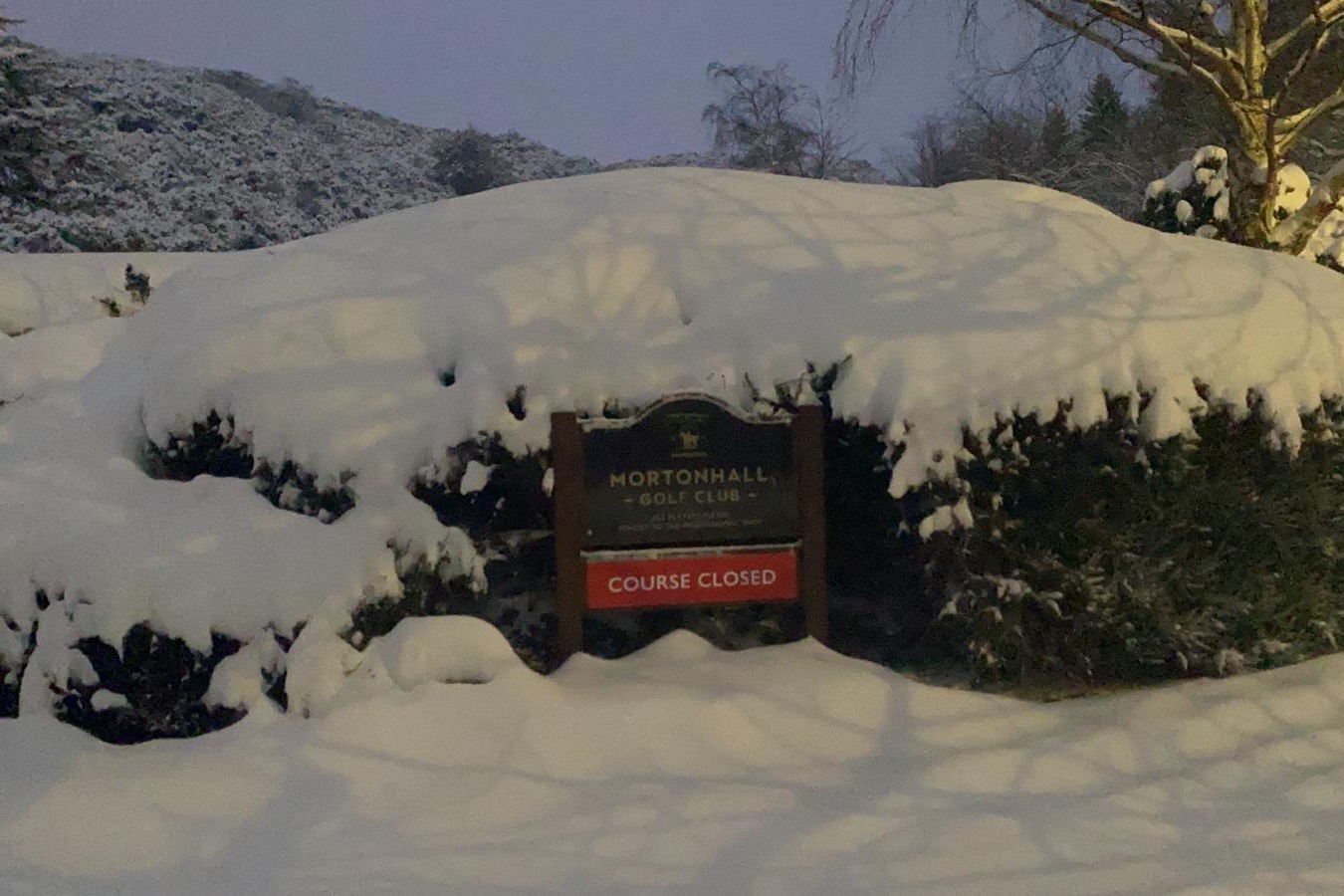


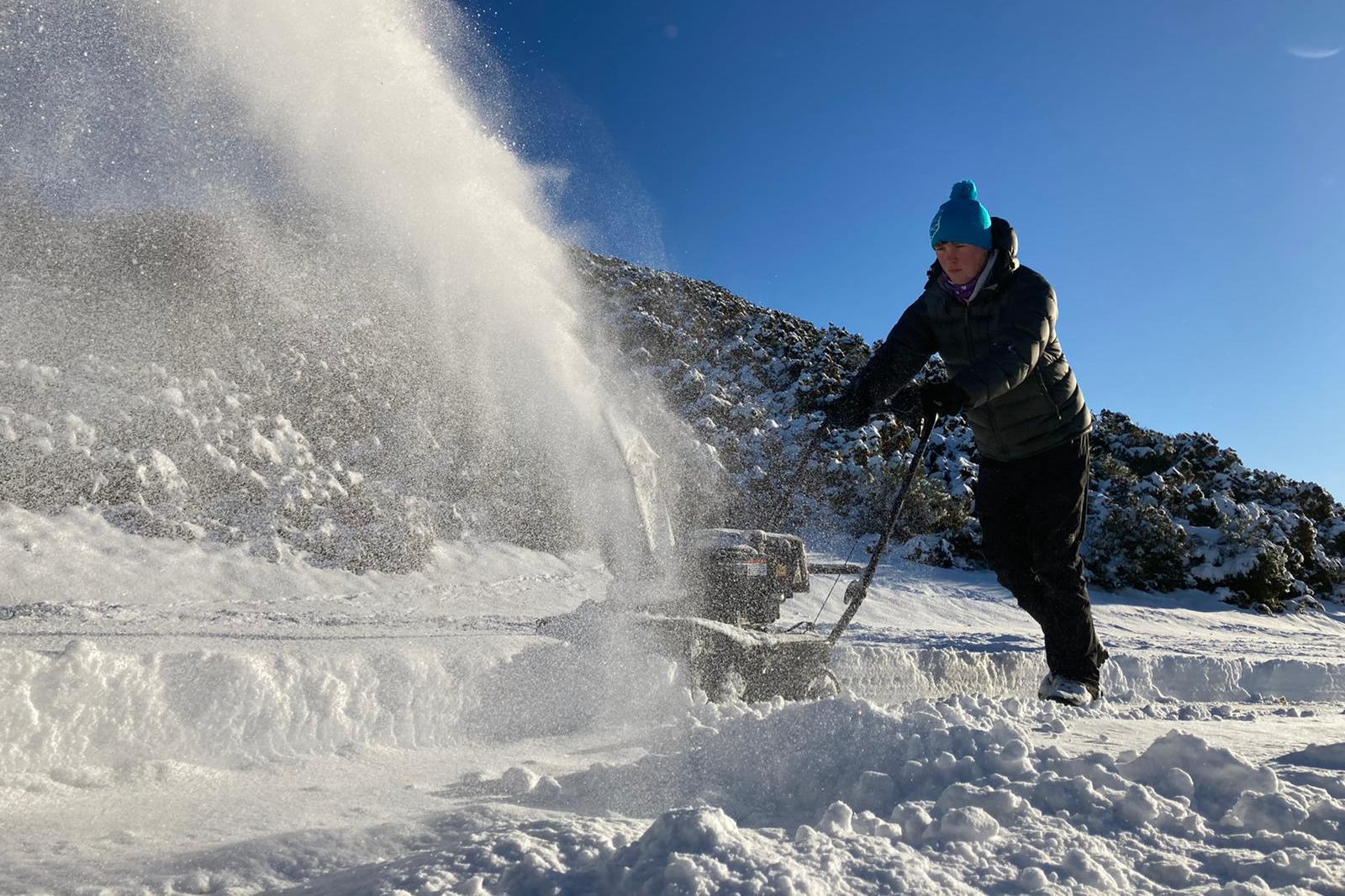
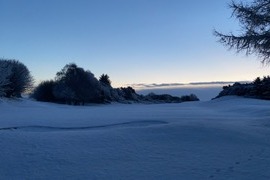
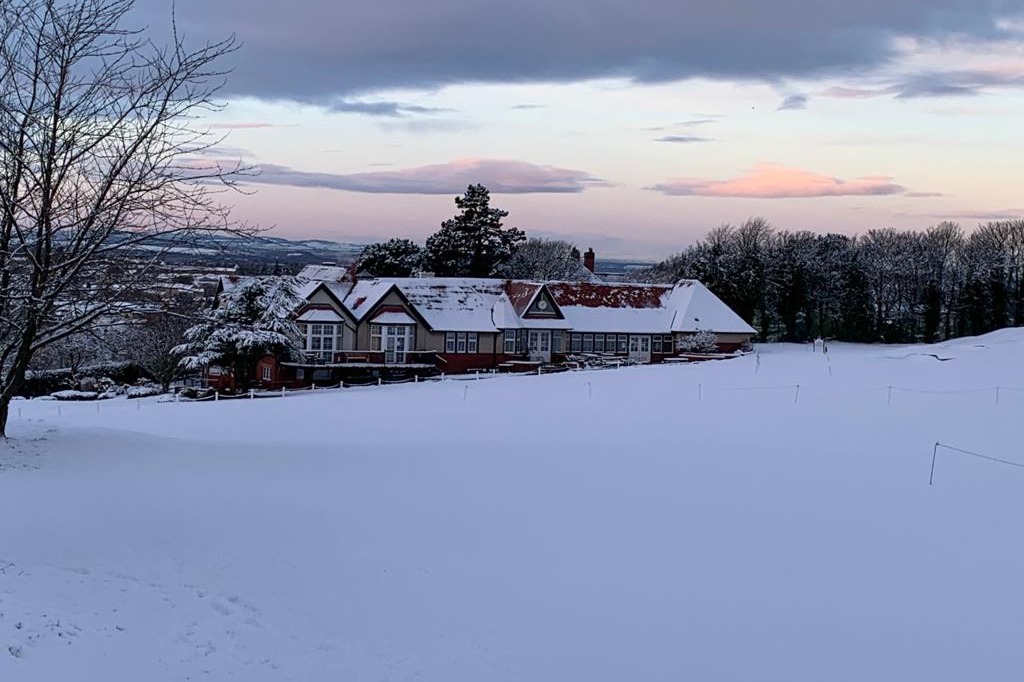
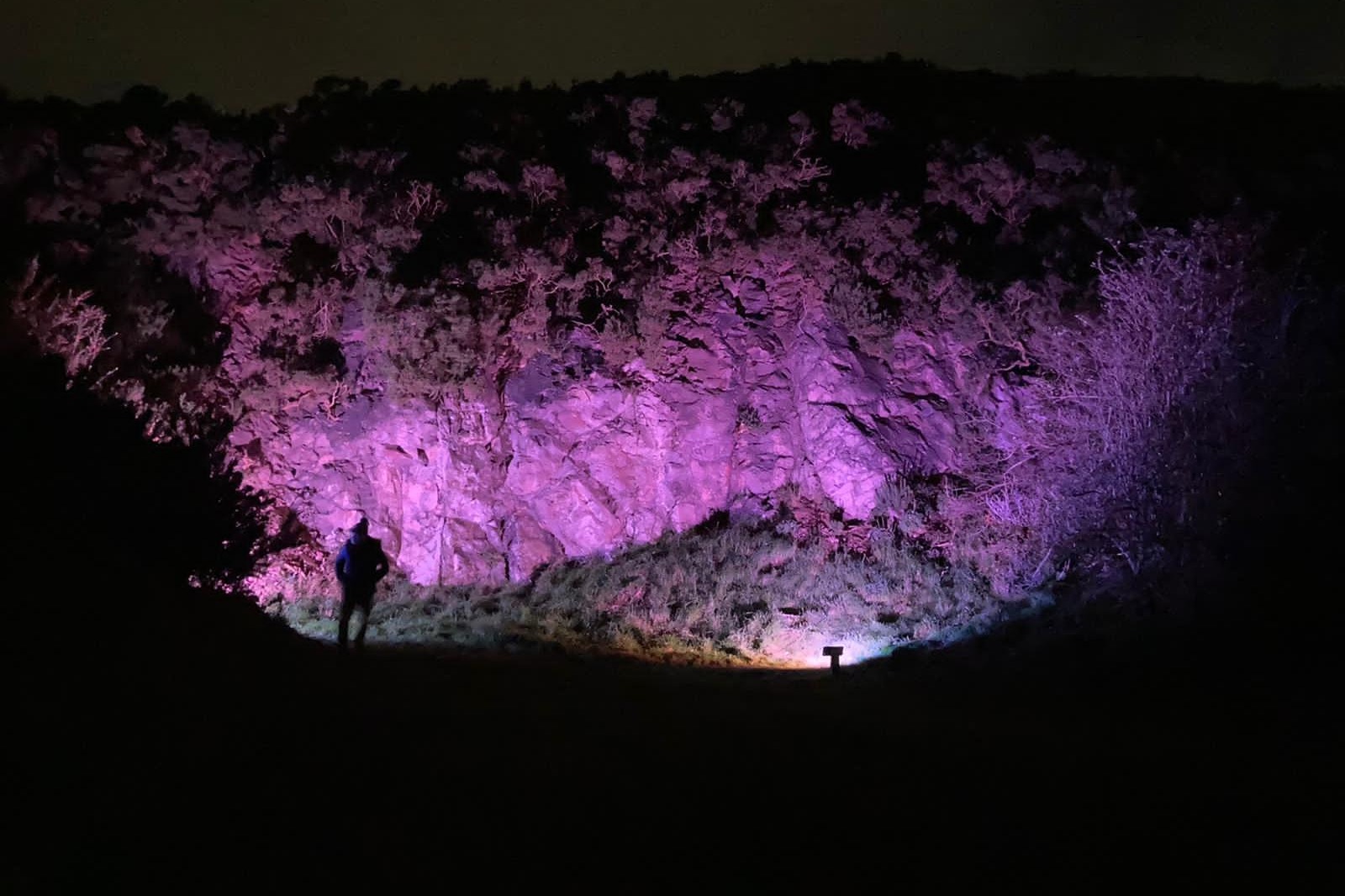
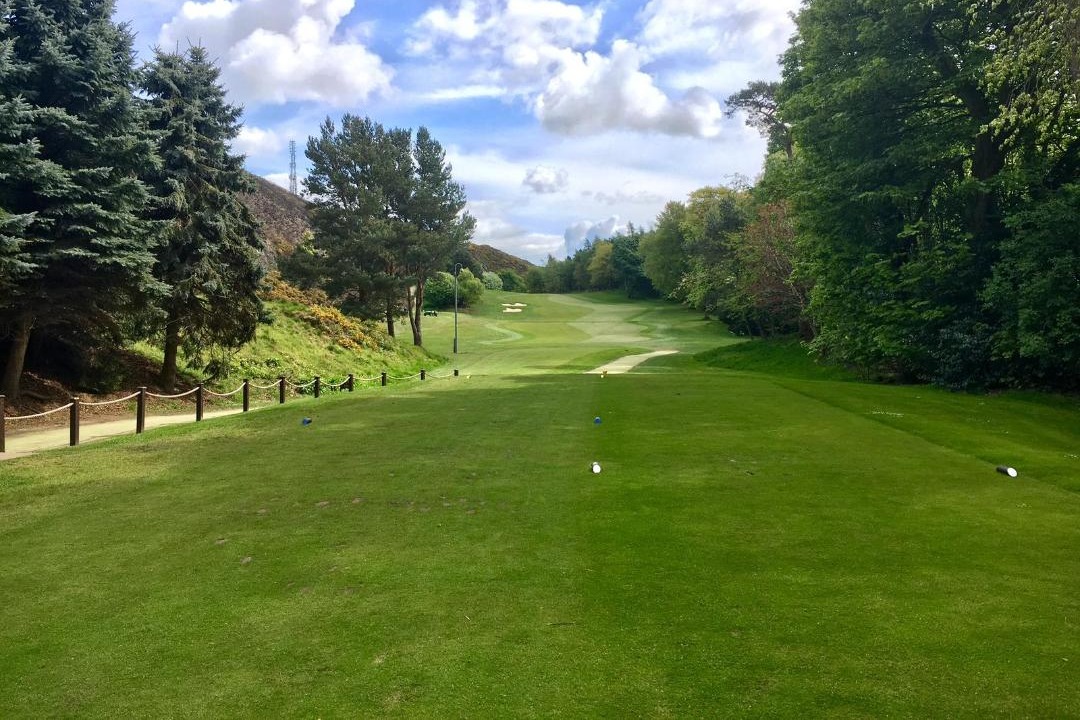
Rough management going forward
Rough Management Plan
As you will be well aware, we left large areas of rough unmown last season to develop a more colourful, challenging and interesting experience for all golfers by creating distinct barriers and delivering visual character throughout the course. It was also an objective to develop a golf course where course management would come to the forefront and be as important as length. Providing much diversity in regards to club selection and shot making, instead of just hitting driver at all holes instead of thinking how the hole should be played in relation to hole layout and your handicap. To counteract the introduced longer rough, we widened the fairways, mowed more often and greatly extended the first cut to provide very generous and better manicured target areas to play from.
The 15th hole in all its glory
These areas of rough across the course ranged from wispy areas found before the 15th fairway to the very dense areas to the right of 14th hole, and it is our vision to reduce this sward variation and improve playability and beauty across all areas of the course. To achieve this we will attempt to eradicate the majority of the coarse grass species and change to grass species which are more manageable and playable, such as fine fescues, bents and wildflowers. This is a long-term programme and will take a number of years to achieve significant results, but each piece of maintenance carried out in future months will improve the situation going forward and get us closer to our end vision
We have a rough management plan in operation, which will be part of the course management programme going forward and the team thought it would be beneficial if we kept you updated on where we are currently in regards to the programme and what we plan to do in the coming months to achieve the best results for the golfing membership and our end objective.
Mowing
We mowed all the rough areas down and removed grass clippings last October to reduce fertility and weaken the grass plant to inhibit growth for the forthcoming season. If we had just merely cut the grass down without collecting the clippings it would have been counterproductive, as grass responds to mowing by producing more leaves and making the sward denser. This process was a great success and gave us the perfect platform heading into the winter dormancy.
Raking and Scarifying
When the temperatures start to rise and the grass starts to grow we will rake all rough areas with our tractor mounted rake to thin out these areas. We will closely monitor the situation and the densest areas will be scarified to further weaken the grass plant and create gaps in which to establish grass species that have a finer leaf and slower growth habit. Again collecting any mown material. The scarifying work will be most probably carried out on the most problematic areas from last year (Holes 4, 8, 10, 11, 14 and 15)
*Overseeding *
The areas that are scarified will have fescue seed sown in order to establish grass species that are more manageable and improve playability. Again the problem areas from last year.
Chemical Treatment
The process of scarification will open up the surface which can lead to undesirable plants, grass and other species, establishing in managed areas. Also in certain areas coarse grasses are so dominant that our management practice may not be effective enough to achieve the desired results. In these circumstances and where appropriate, the undesirables will be treated with selective herbicides to remove unwanted growth and give us a good platform to work from. The areas that had the most undesirable growth last season was certainly the right of the 8th green and the right of 11th hole, these areas will almost certainly have selective herbicide applied to them this season.
In Season Treatment
Unlike last season, we now have the machinery to maintain the rough areas more efficiently, with the acquisition of a tractor mounted rake and a flail mower in the autumn. Throughout the coming seasons we will quickly act on any areas getting out of control by firstly raking, to thin out grasses or secondly, lightly scarifying with flail mower if deemed necessary. We will always be monitoring the situation and will act when we feel that certain areas on the course are unfair for the high handicap golfer and scratch golfer alike.
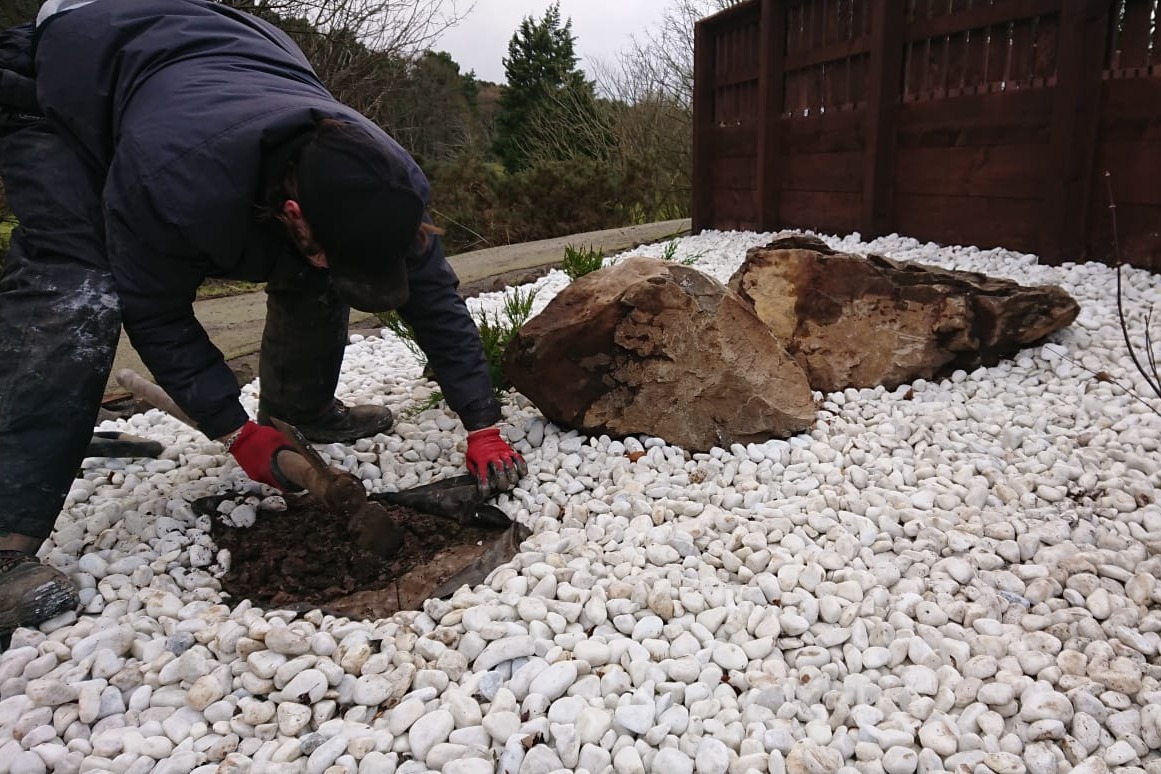
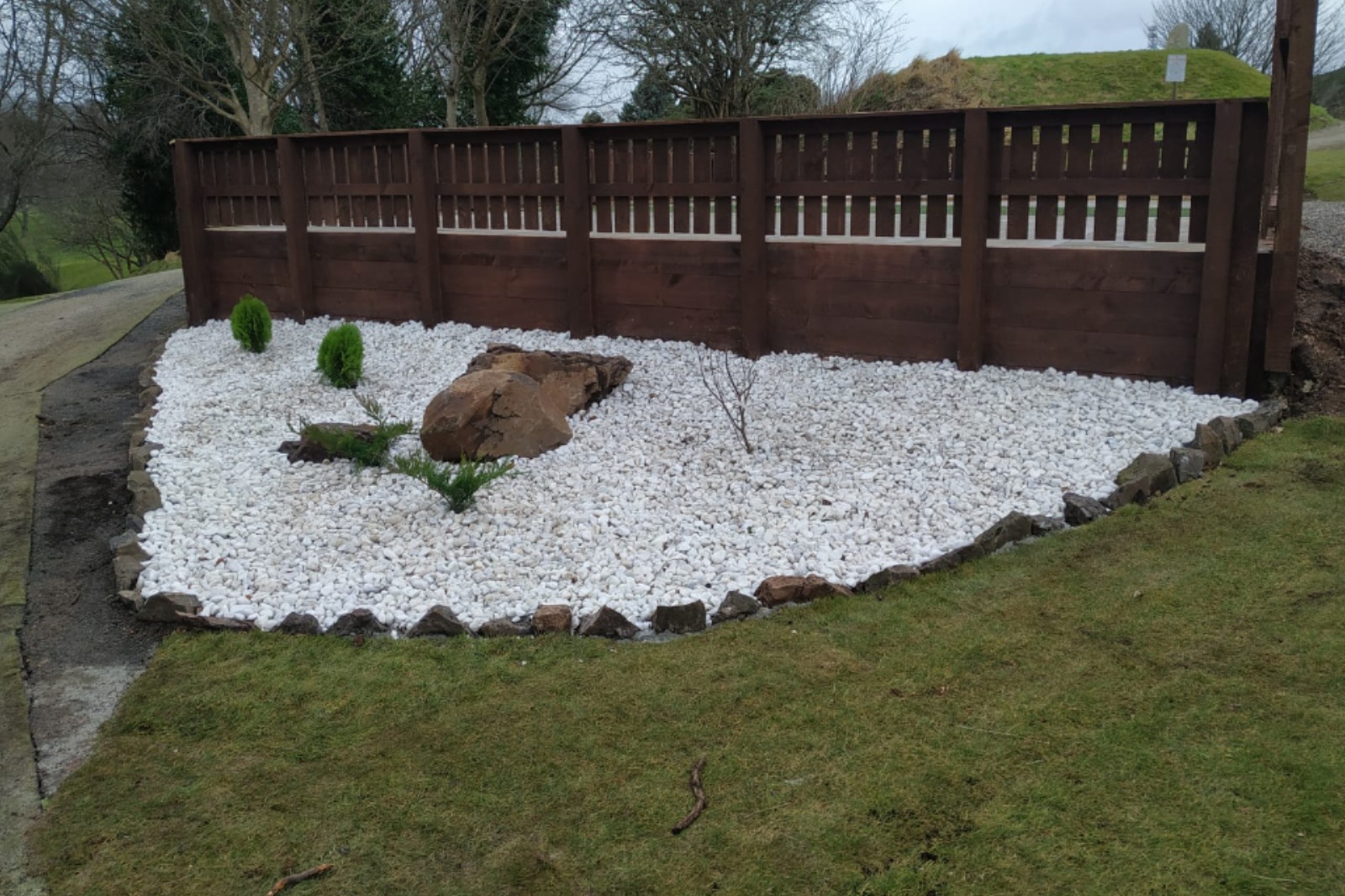
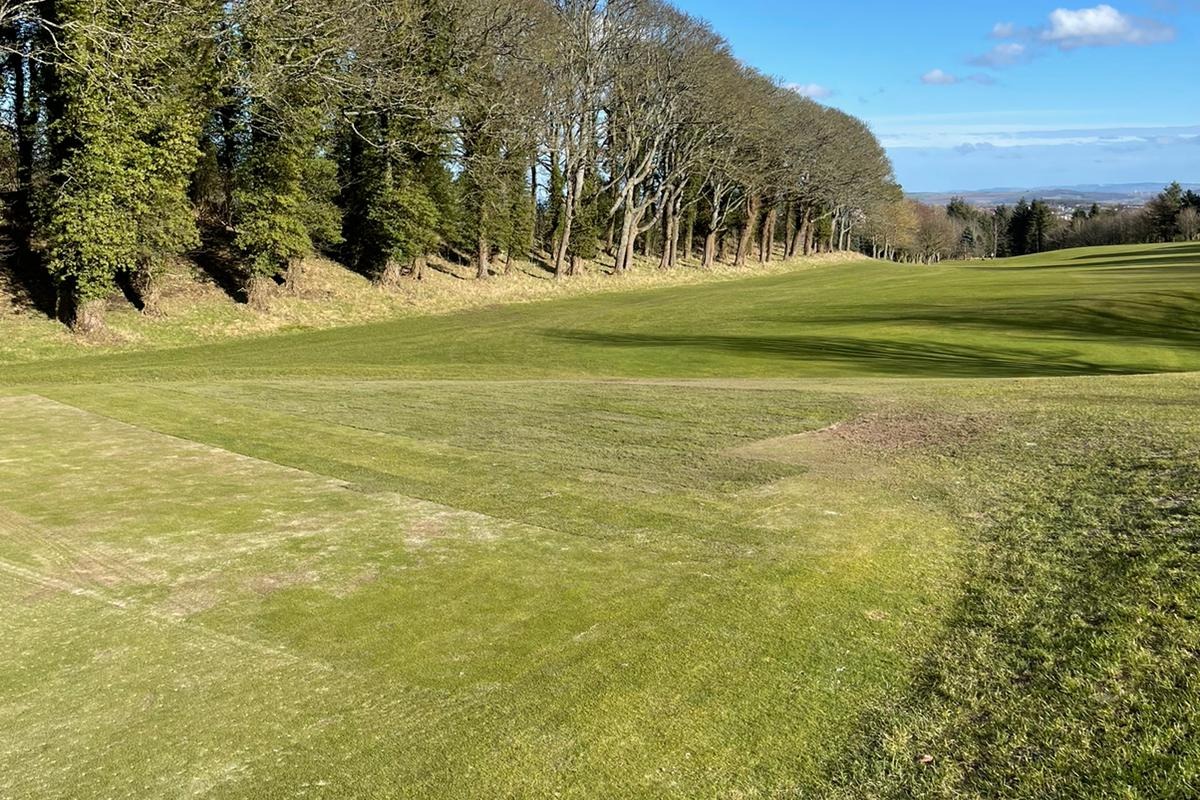
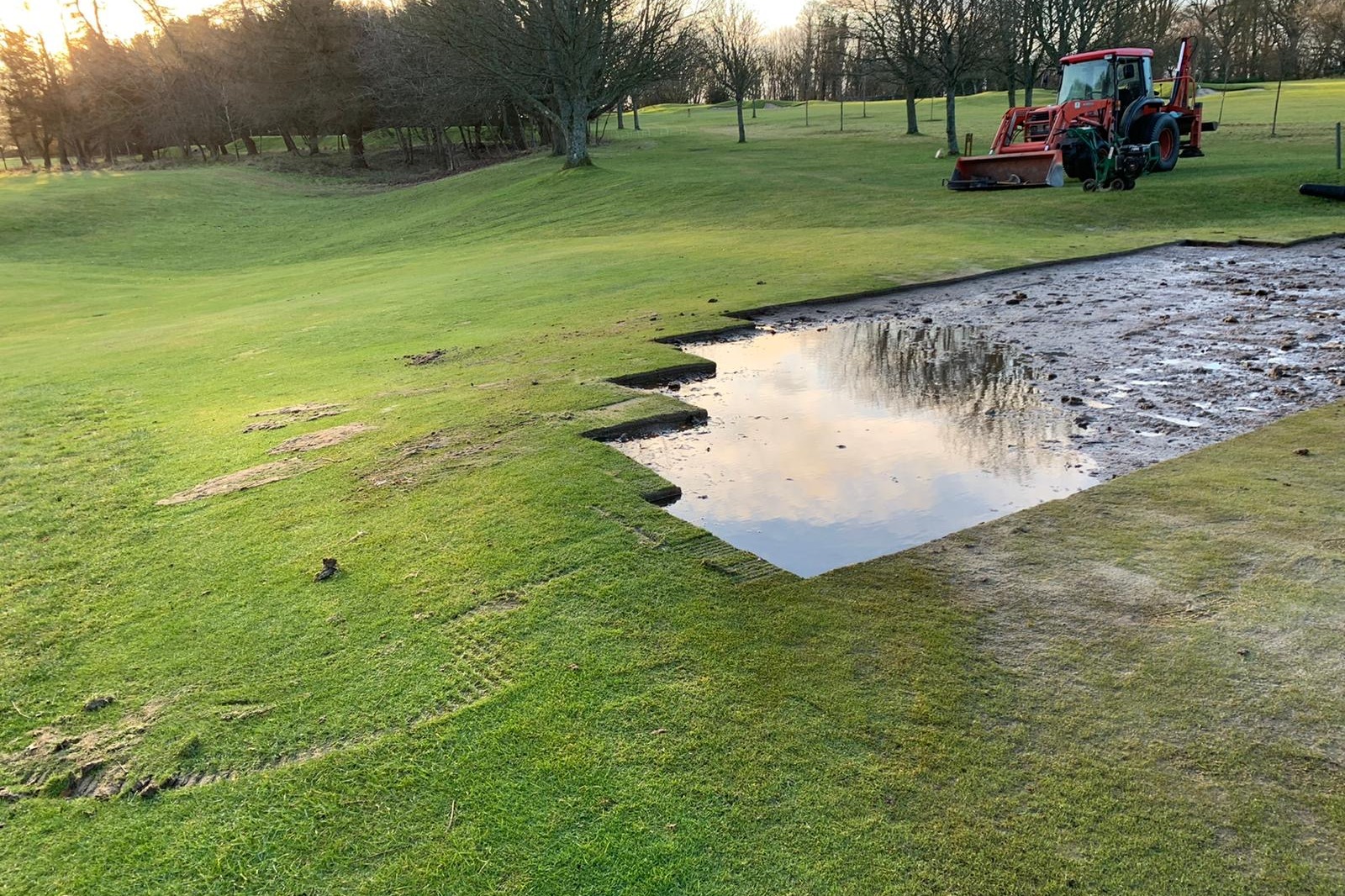
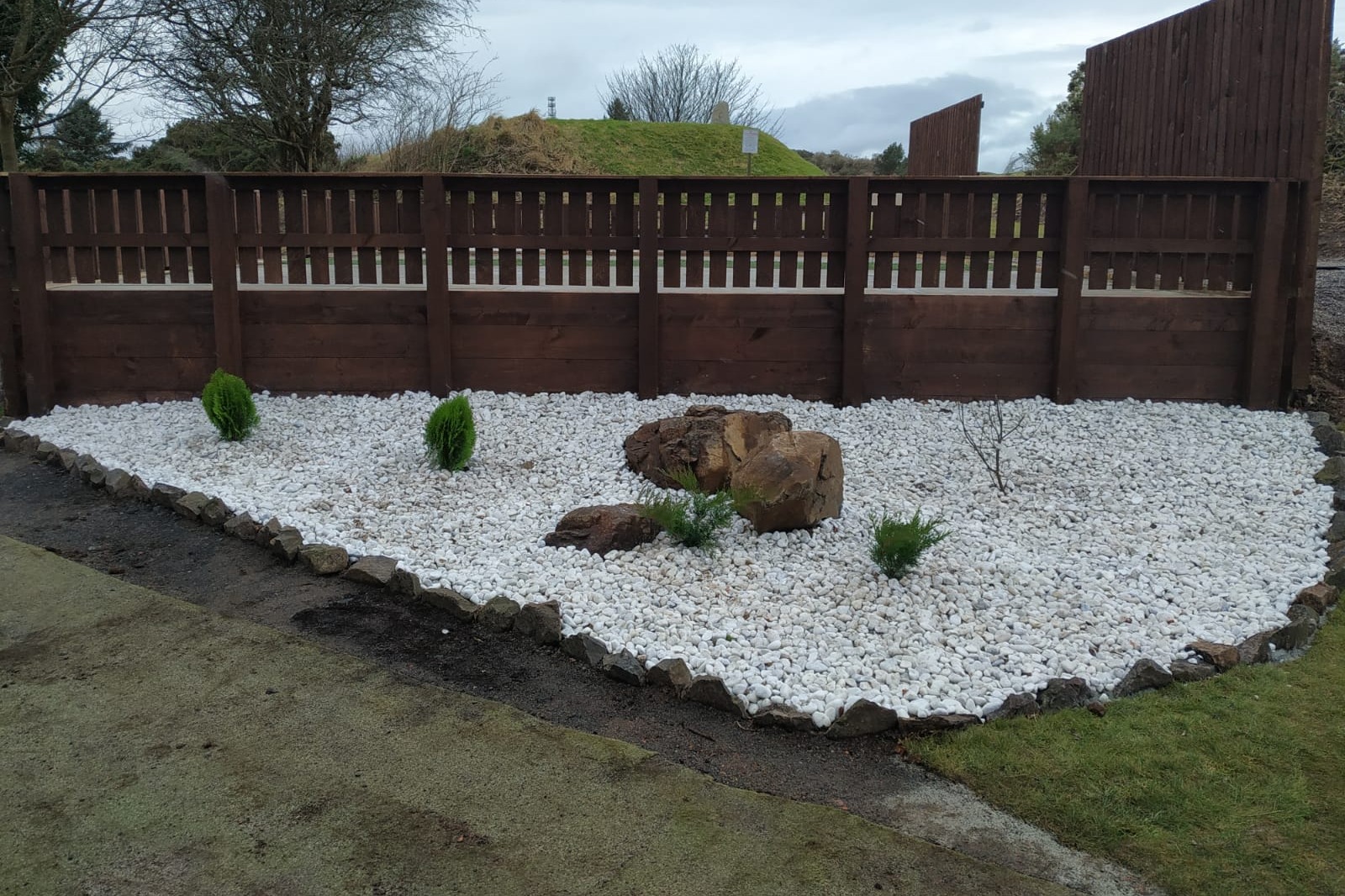
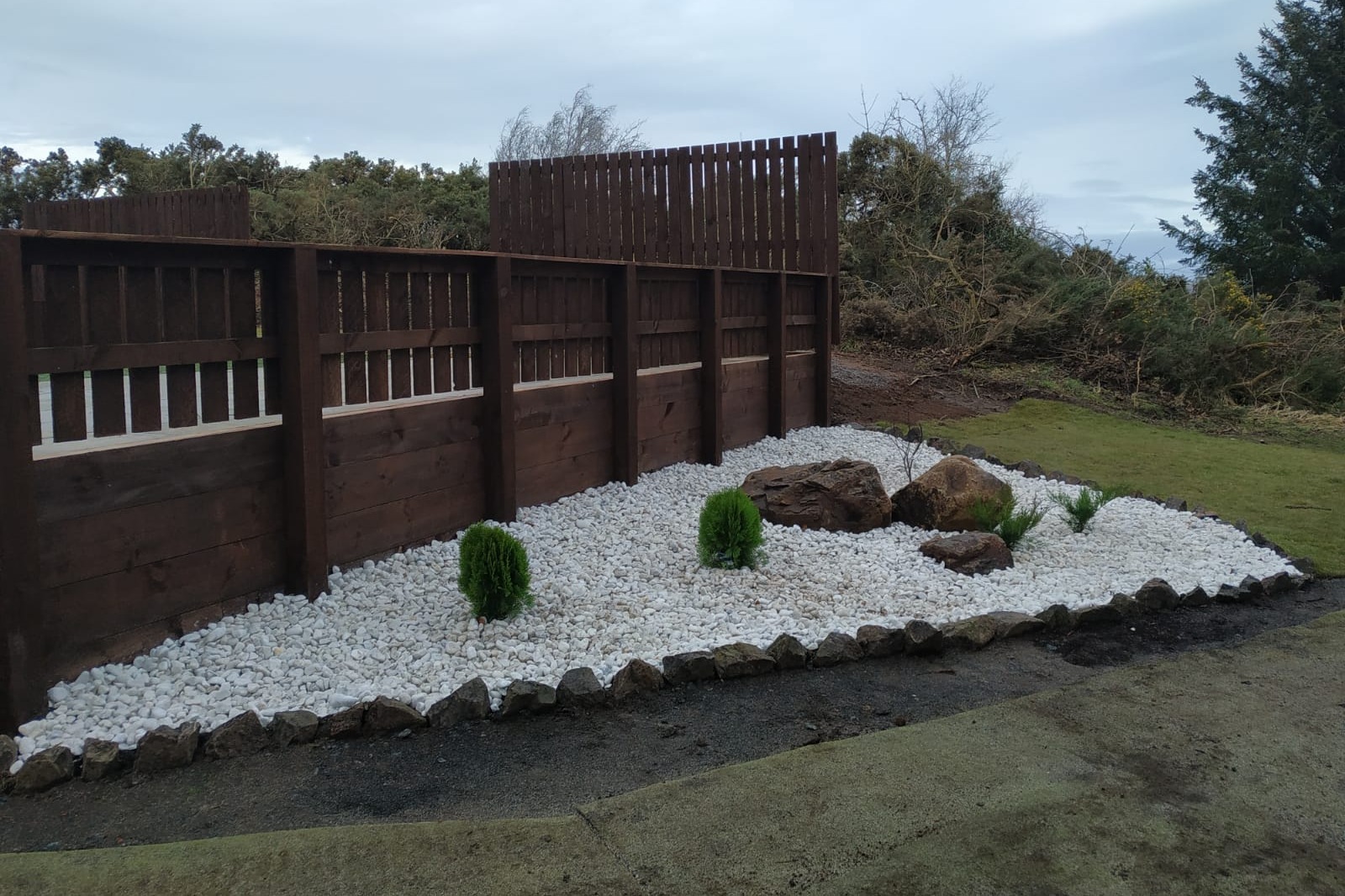
February
It seems that our hopes are dashed on a daily basis, the weather improves, the water drains, we plan as a team to get the course member ready only for the next wave of bad weather to come in, frustrating for all!
The time has not been wasted, splitting the team into sections for COVID reasons and having designated tasks is helping to keep all safe and the amount of work that the team is getting through is a credit to the club.
The apprentices have done a wonderful job on the walls around hole 4 and will continue to rebuild all over the course during the season.
The viewing platform has been finished and the touches for the rockery and flower beds have been laid.
The cleaning and limbing of the trees has started and will clean up some of the problematic ones around the course.
Having 85 mature trees delivered and will be planted in key areas to help with definition and drainage, right hand side of hole 4 for example, right hand side of 14th to replant the saps in the area designated as the nursery, the new trees will have an impact on the present membership as well as providing a well-maintained course for future ones.
We have looked at bringing in many fruit trees and white willows to accentuate the definition and bring a wonderful array of colour to the course.
Planting at the back of the 5th fairway for example will give you more of an idea of depth definition as well as making all think about club selection and certainly those going direct at the green will have a little further to carry the ball, so hopefully catch some out and make the hole play as it was designed.
The team has identified that over the next 16 months an ongoing replacement of our tree line of a further 200+, this of course will be done in stages to again bring a lot more definition to the course but maintaining and enhancing the natural beauty.
The front of the 13th green will have the lip removed which will help tremendously with the drainage of the front edge that is a gathering spot for water.
The new course furniture has been erected around the course and entrance, which again will improve the overall feel. The new information sign and slope charts will be up and positioned by the end of the month.
The tees will be worked on now to get ready for the season and we are looking at putting in the new cuts within the next 7 weeks weather permitting.
A very difficult period and also a very busy one
February continued, 2nd and 13th Green
The front of the 13th has been an ongoing problem with lying water , with the apron acting like a barrier we decided to remove the turf and re shape the area to allow any rain fall to move away from the green and apron . image.below
Once we had removed the turf and started to shape we found that there was only a depth of 40cm before we hit bedrock which doesn’t allow the green to drain properly.
This is one of the newer greens built 1979 and with poor quality soil (clay ) and little depth before hitting bedrock it is inevitable that this green will suffer with drainage issues .image.below
We have replaced the front of the green with a USGA spec to help pull moisture from the green and apron , With the topography of the land this will allow the green to have an outlet .
The same work will continue this coming week on the 2nd for the same reasons.
February continued.
February Snowed In.
With the more than normal snow deposited on the course, it has really put the work from last year under scrutiny. The course once again became a winter wonderland, the team did its best to keep the greens protected from sledges and walkers alike. With the continuation of the tree planting and also the 13th green to deal with it has so far been an extraordinary month.
The 13th needed to be addressed because of the large lip that was holding water at the front and was starting to destroy the green. The team shaved off the front edge and with gravel and root zone rebuilt it in under a week, the final pictures below show the finished product that will knit together nicely.
New benches have been positioned at hole 3 and tees, fairways and greens are being marked out for the season. Three new drainage pots have been installed on the first fairway to help the recovery and to clear as much water as possible.
The viewing platform is been finished off with the pebbles and plants to give it a clean and tidy look.
The forecast is better over the next couple of weeks so all of us are hoping that we can get the work completed and trolleys back on for prep month in march and look forward to a good season ahead.
The Snow clearing followed by a very quick thaw leaves its own problems, the amount of water that our greens have taken is staggering. The team anticipated the storms and quickly covered all greens with a layer of sand to protect as best they could.
The clean-up continues this week with aeration and followed by coring and dressing. The 6 coring’s that took place last year certainly has helped and the same planned for this year the greens will slowly get better and better without the need for constant Nitro to keep them going. The easiest way to describe the process that the team are putting the greens through is to use the analogy of a drug addict, they have to be brought of it slowly as not to cause harm. We would have loved to have done a core at the end of the year but from September it has been storm after storm.
To get the members back on the track and playing 18 holes is a tonic for all albeit a shorter course.
The problems at hole one is clear for all, the lack of sunlight and air that can help the green and the top of the fairway recover is non-existent. In 2002 the STRI recommended that the trees be thinned out and that is high on our radar this year as well as lifting the green itself.
Some members have asked the team how can other clubs open and they haven’t had the same problems? The answer simply is what we are built on! When its solid rock it has to take natures course in drying out. The course next to us would always be 5/7 days Infront purely because of their subsoil compared to ours.
The colour and the firmness of the greens is good for the amount of water that has gone through it and the team is very positive if we can avoid the forecasted downpour, to be able to produce a good surface all over for the start of the season in April.
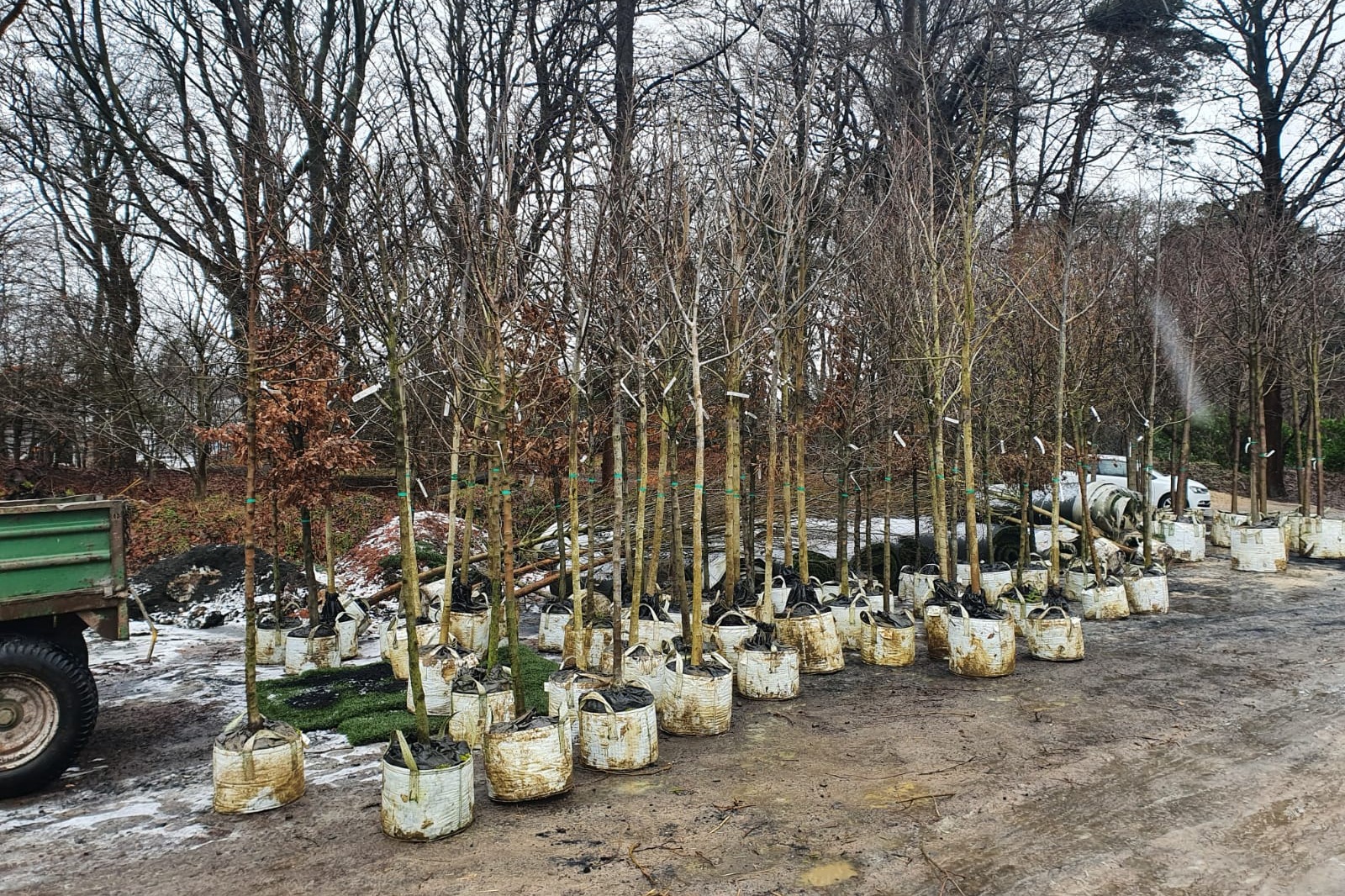


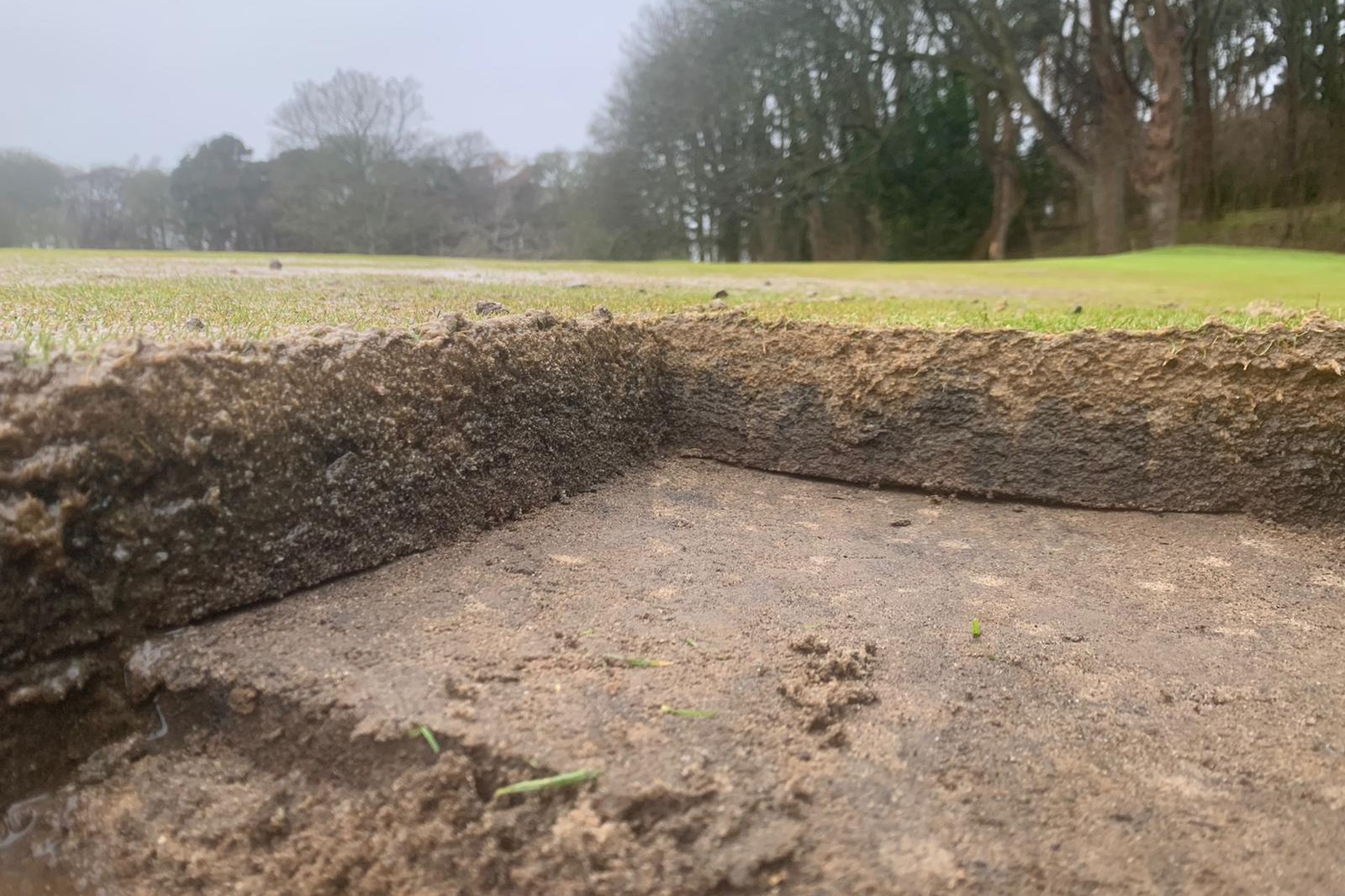
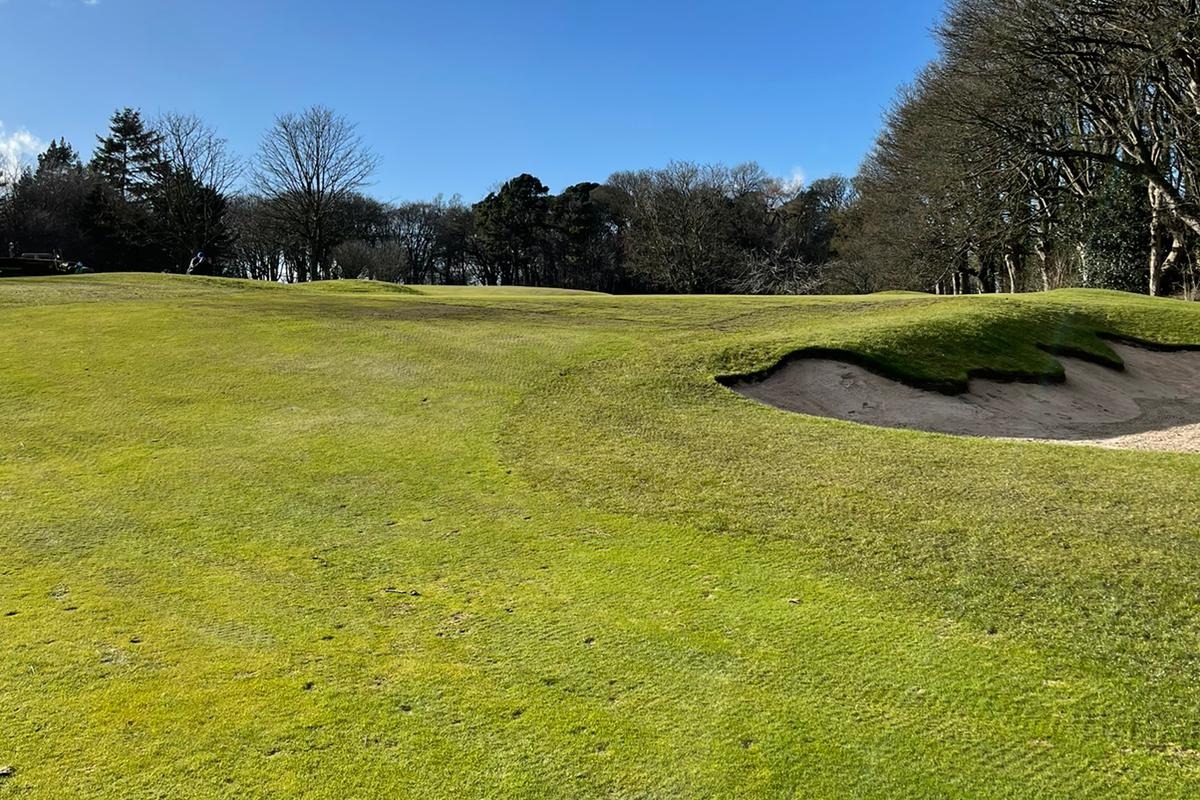
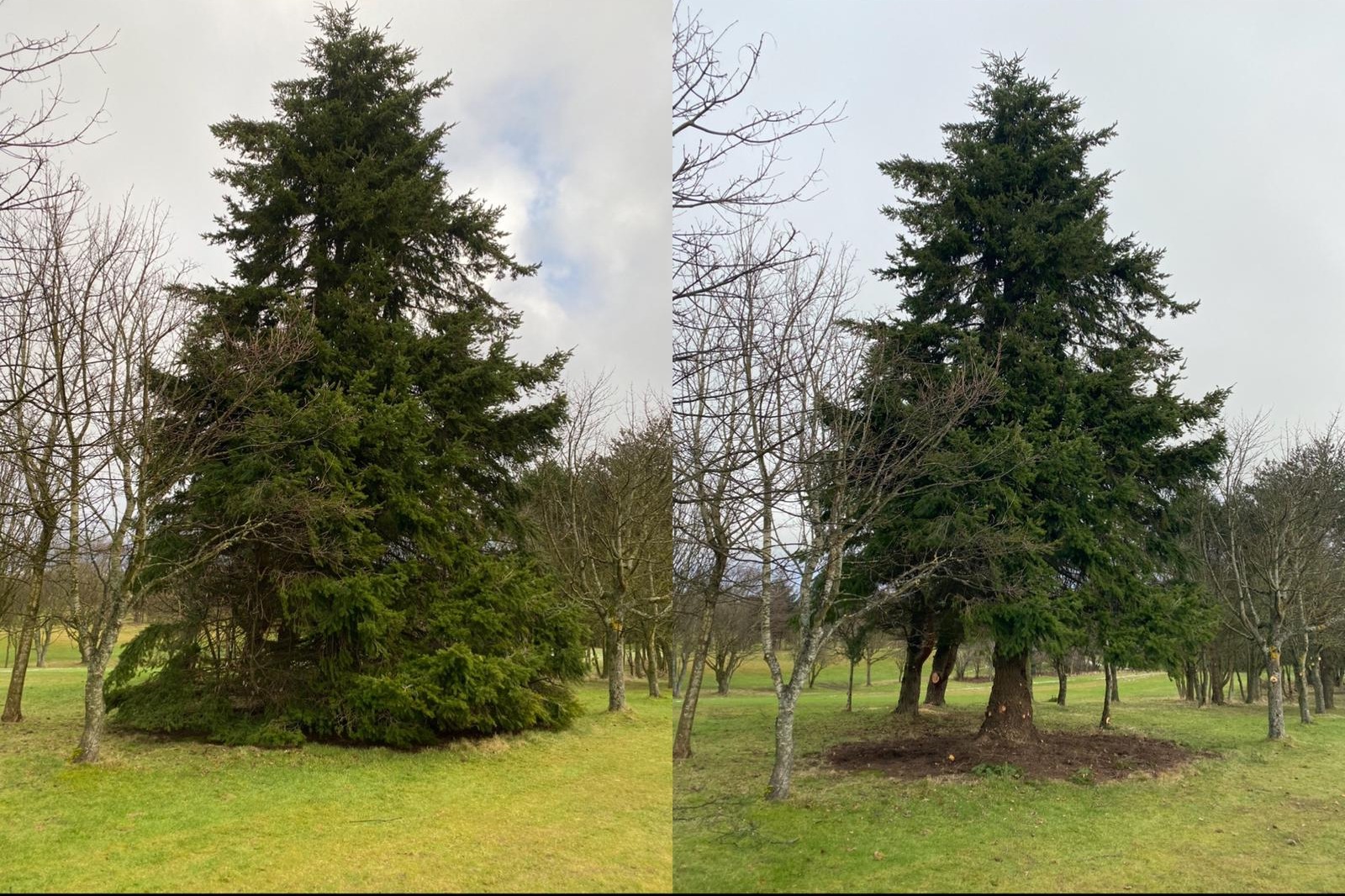
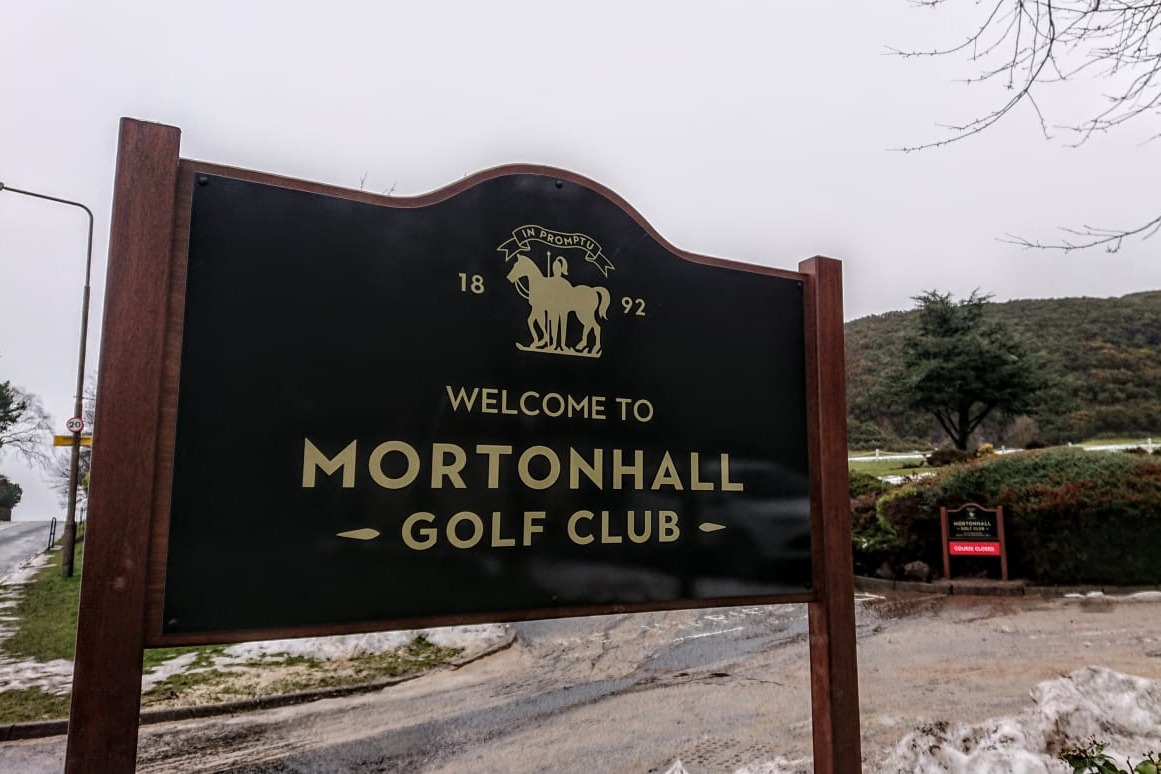
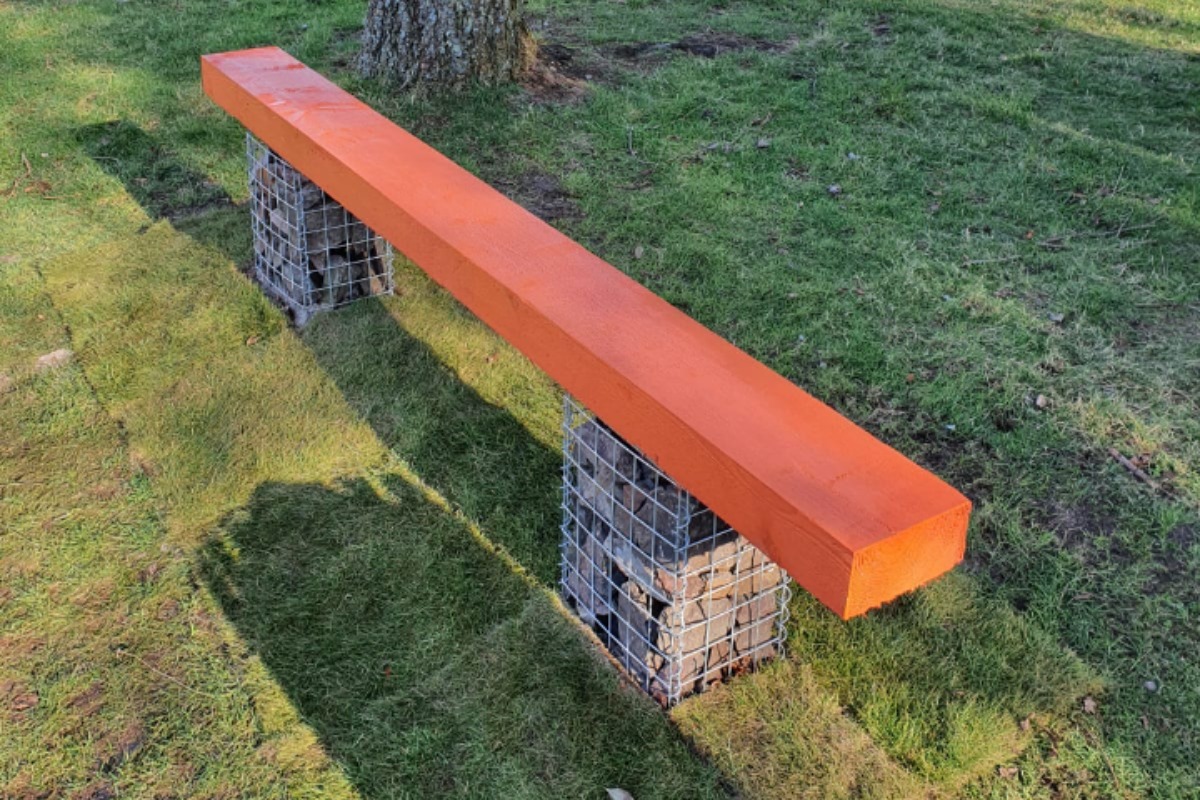

BIGGA February news
Shaun one of our greens team recently wrote an article for Bigga
The change of focus at our club is highlighted by Shaun, we are sure many clubs will sit up and take notice.
Interesting read.
January Lockdown and Snow!
As the weather this January has not been kind to us and kept our course closed with snow, we decided to do some seminars with the greens team, firstly Craig Davidson gave a workshop on how to maintain and look after our machines to the standard we expect at Mortonhall. Then it was time for Grant Moran to give a class on how to prepare and put a budget together, this was to not only to learn how to set up a budget with excel but to get the whole team to think about what is takes and is required to run Mortonhall from a greens perspective and change their mindset and thinking for the season to come.
A frustrating time for the team and our members, we are constantly monitoring the grass below and all looks good, the colour and the protection that the snow and ice has given it, will pay off handsomely in early Spring.
The response of the local community has been staggering. Many have used our course for their exercise during lockdown, the Horse box has kept all happy.
It has given the team the chance to talk to locals, who in the past may not have appreciated the thought and work that goes into producing a high class course, and where they should walk to avoid certain areas.
A time for keeping the fire burning and getting the drainage on 15th finished while the ground is hard enough to move the tractor over the fairways.
The snow has stopped golf but it has helped us do some drainage work on the left side of the 15th green, with the cold temperatures and the 5 inches of snow we can safely drive the tractors on the course without damaging it . This area is built on top of a slab of bedrock so the decision was made to build up with a USGA spec of gravel and rootzone and creating a swale shape to pull the water through our new profile.
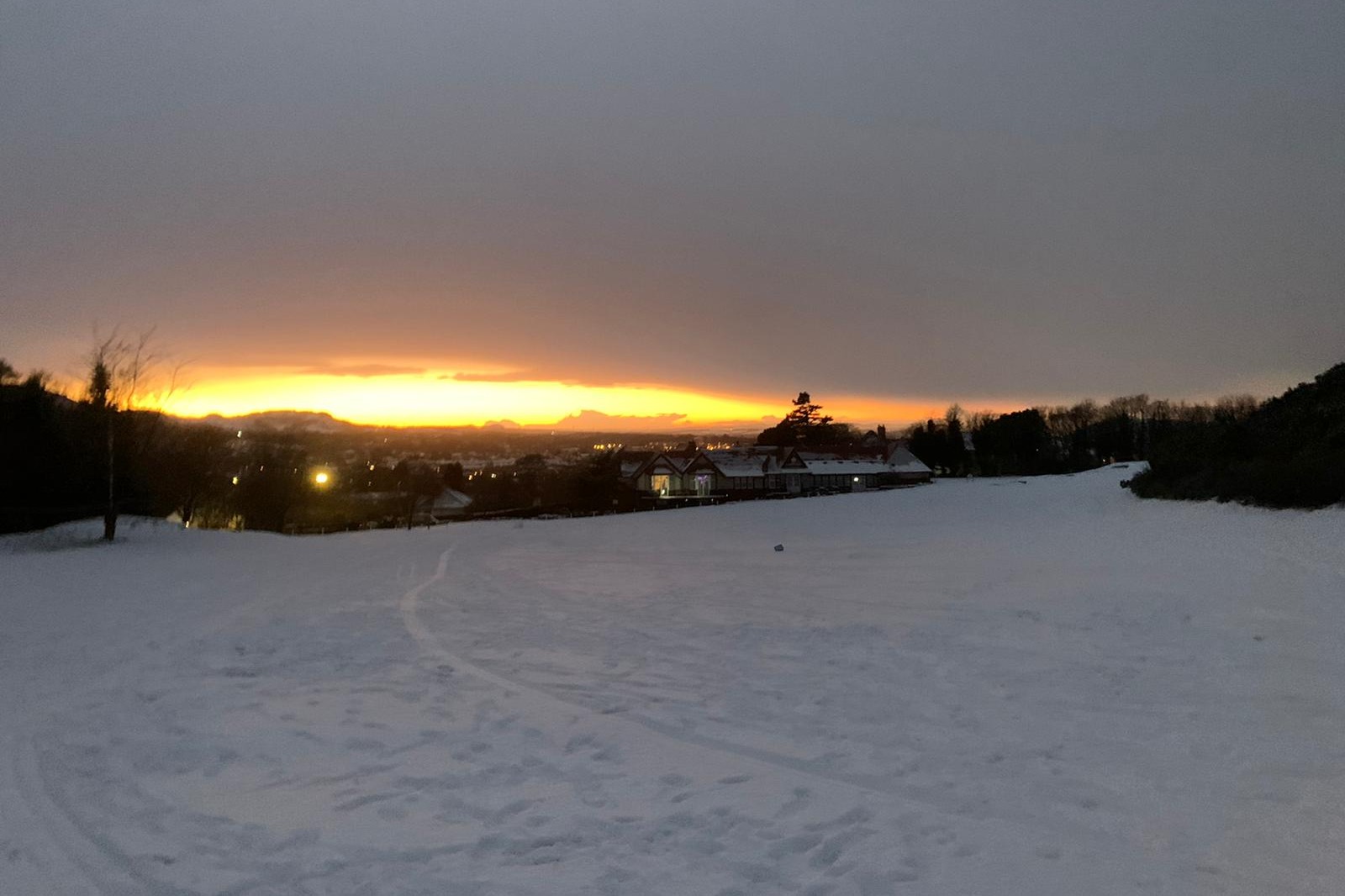

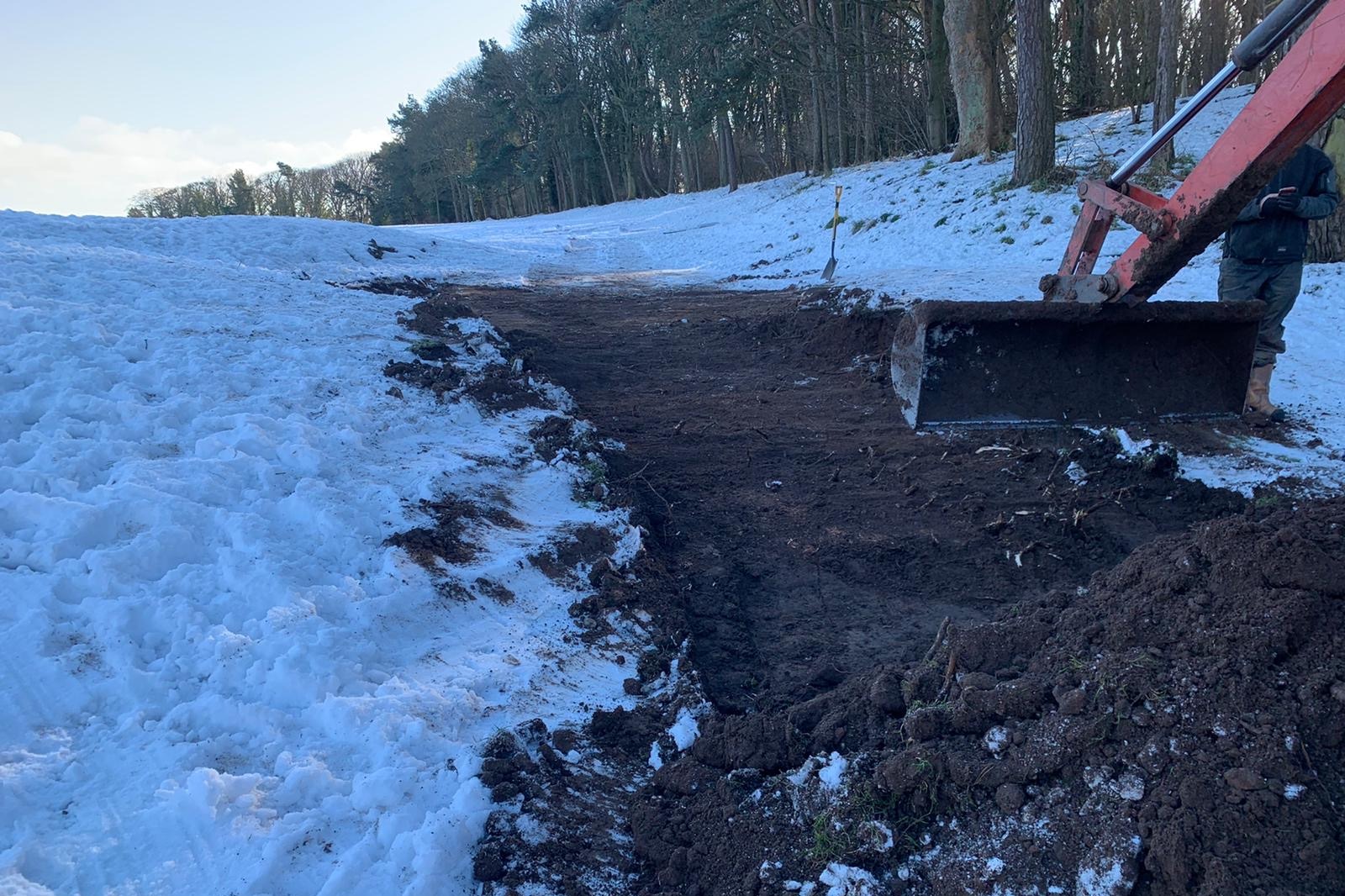
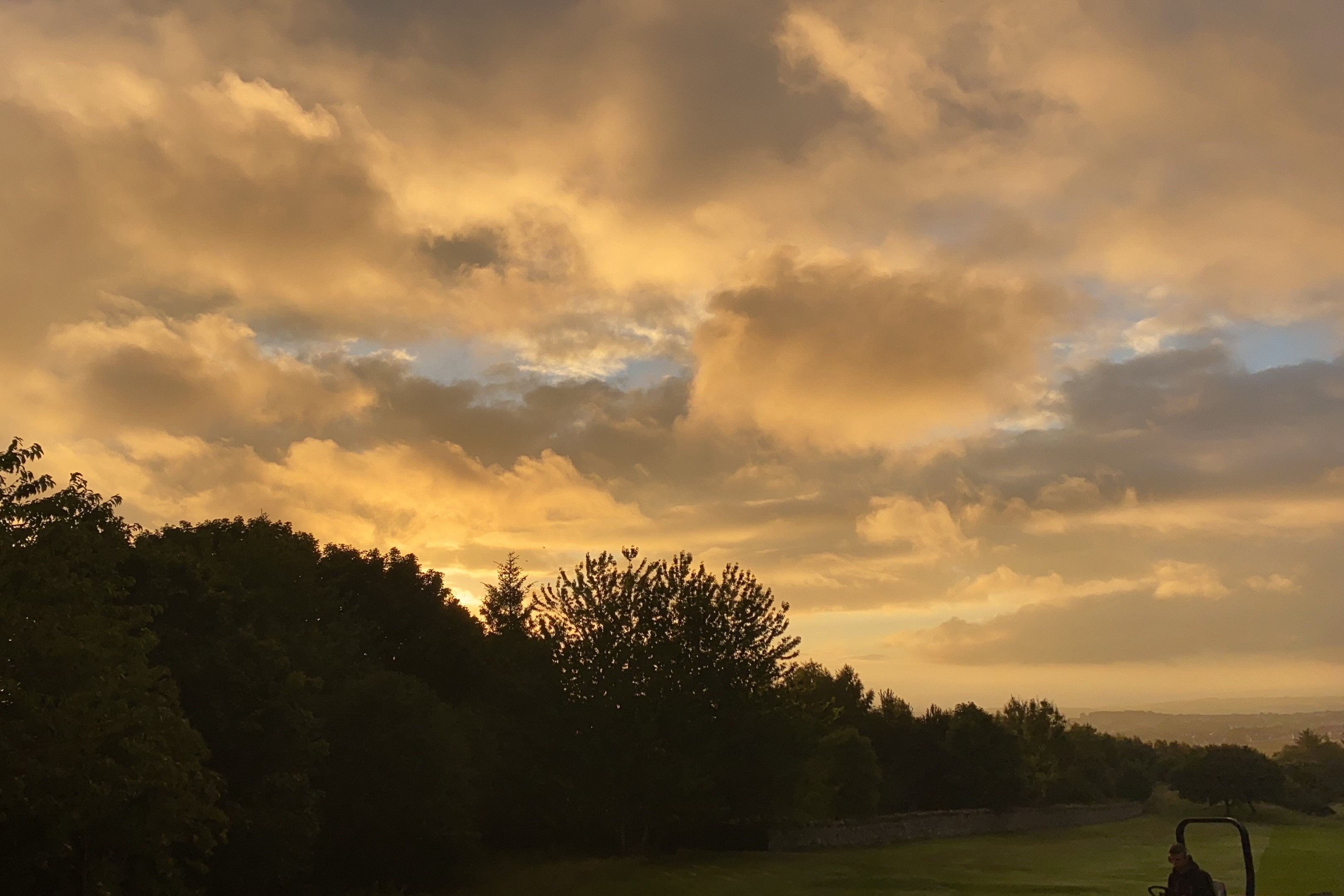
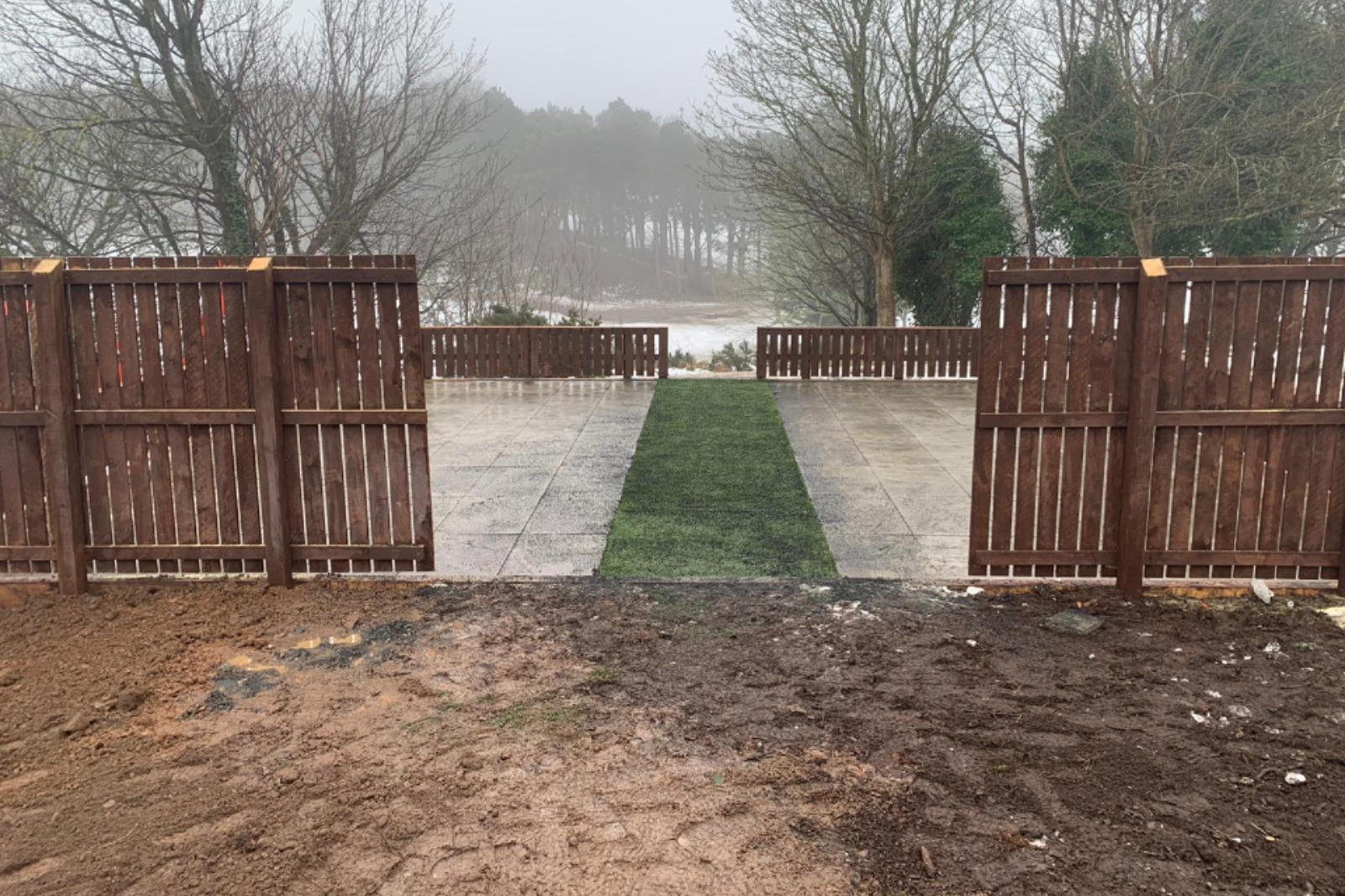

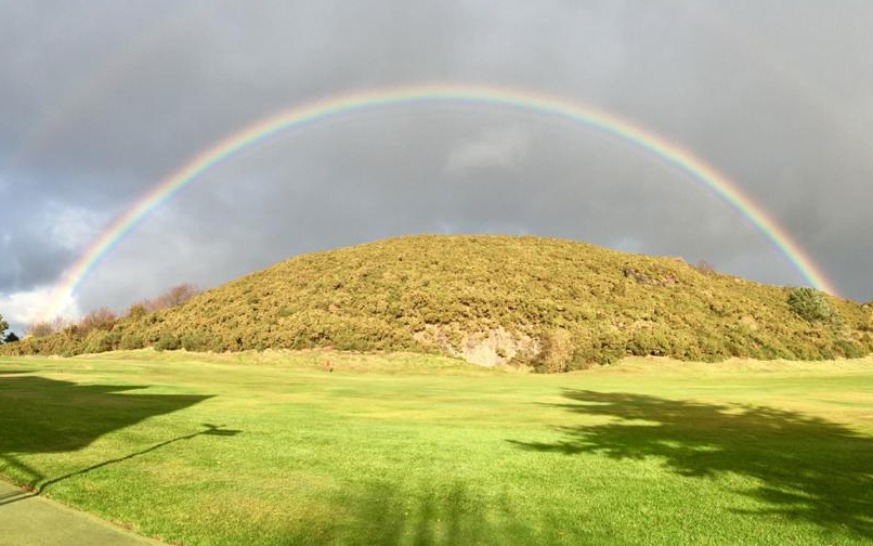
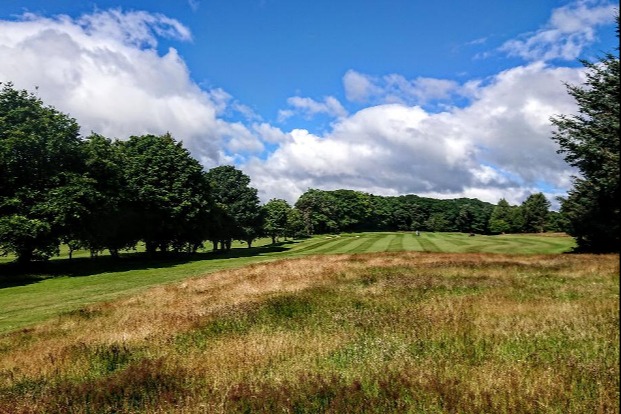
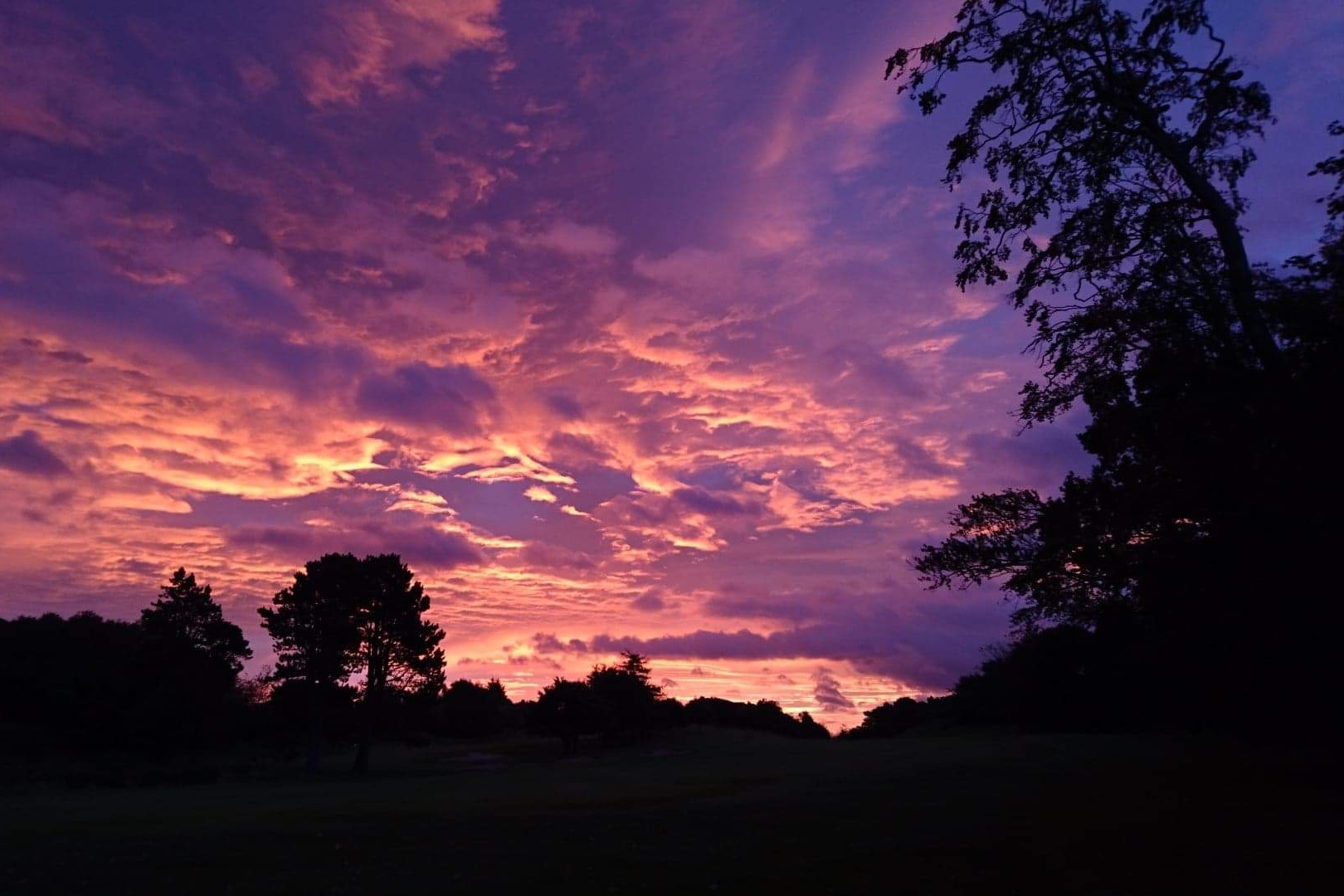
The Estate
We are currently in the middle of a prolonged cold spell, with regular snowfall and minus temperatures to deal with, leaving the course unsuitable for play due to vast snow and ice coverage throughout. Despite these unhelpful weather conditions, the team have made great progress on a number of tasks, which have been essential for preparing the golf course and its infrastructure for the coming playing season.
Car Park Extension
Past months clearly showed that the car parking facilities at the club were not sufficient with the current demand. Lack of spaces meant many cars were being parked on the main road (safety concern crossing road) and on exit road grass verge (delivered poor impression from tyre damage). With these negatives happening almost daily, it was decided that something had to be done, so we came up with a plan to improve the situation by excavating the edge of exit road to create additional car parking by the installation of type one material.
Although there were a couple of old oak tree stumps that tried to get in the way, the team did a very professional and efficient job, led by the construction team of Davidson McArthur (Craig and Colin) who did all the digger operating and landscaping work. In the end we managed to deliver 32 additional spaces which will be a great help going forward and limit the chances of the exit road looking like Glastonbury in the future. In the coming weeks when the snow disappears we will mark out spaces more permanently to make use of the area as much as possible. We must have made a good job, as since it has been built we have had two of our neighbouring golf clubs pay us a visit to ask how we went about the project.
Viewing Platform
After we were finished with the mini digger at the exit road, it headed up to the junction café, so we could start work up there to provide an area where golfers can enjoy their coffee and bacon rolls in a more suitable area. The main reason for the construction of a halfway house build was mainly down to health and safety reasons, as the area was turning into a trip and fall hazard due to the slippery underfoot conditions and the area being situated on quite a severe slope (we didn’t realise how big a gradient there was until we started to try and level it).
The plan was to produce an area which was safe for users, but also be an asset for the club going forward, and we feel that we have achieved this by not only the quality of the build, but its location and the functionality. The foundation work and fence build is now complete and we will soon start the laying of slabs and astroturf, followed by the introduction of planting areas and trolley park to finish off the job.
This project has been overseen from start to finish by a recent addition to our team, Craig Davidson, who has really excelled throughout this build and shown how adaptable a greenkeeper can be with a bit of enthusiasm and dedication. Going forward, he might regret the fine work he has achieved, as he has already got us wondering what we can get him to do next (will give him a couple of weeks rest first though).
Astroturf Paths
A very early objective the team has is to deliver a good first impression to everyone who visits the golf club, with a mixture of tidiness, colour and professional features essential. we have always said you only get one chance to make a good first impression and we see no difference when it comes to a golf club. With this in mind, it was determined that the astroturf paths in close proximity of the clubhouse and first tees needed immediate attention as they were becoming a major concern in terms of visual appeal and health and safety. The new path material needed to be sustainable, visually appealing, hard wearing, cost effective and safe to its users, and after much deliberation it was decided the best option would be to use reclaimed 4G astroturf. The reasoning behind this decision is down to cost (delivery costs only), hard wearing capabilities, ability to withstand freezing temperatures and it looking good after installation. The only negative about it is the sheer weight and difficulty in manoeuvring into position, however the guys did a great job getting it all laid and in position in just under 2 weeks. After a few months of new paths being in use, the team are still very happy with the end product and encouragingly it has held up well during the heavy rain and snowfall that we have experienced over this time. The previous path material would have only flooded, froze and become dangerous underfoot.
Before and after pictures highlights the massive improvement
To finish off the job we also installed an in house built chain link fence. This was introduced for two reasons, firstly to act as an out of bounds fence and separation between the clubhouse area and the golf course, and secondly to limit golfers cutting across the notoriously wet area in front of the clubhouse and further damaging this area. Could we please ask all golfers to please use the paths provided after their round, as trying to cut across or go under this fence will only lead to breakages to the fencing, damage to grass areas and trip hazards. After some research, we worked out that the average golfer walks 6 miles during their round of golf. If you can happily walk 6 miles, walking a few extra yards to stay to the path provided should be well within your compass, instead of vaulting the fence or trying to negotiate a power trolley under the chain link (or otherwise known as the Seniors Olympics as some have started to call it).
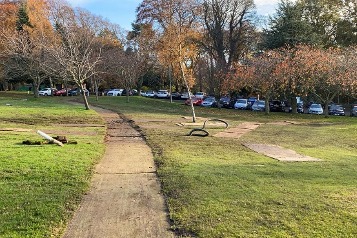

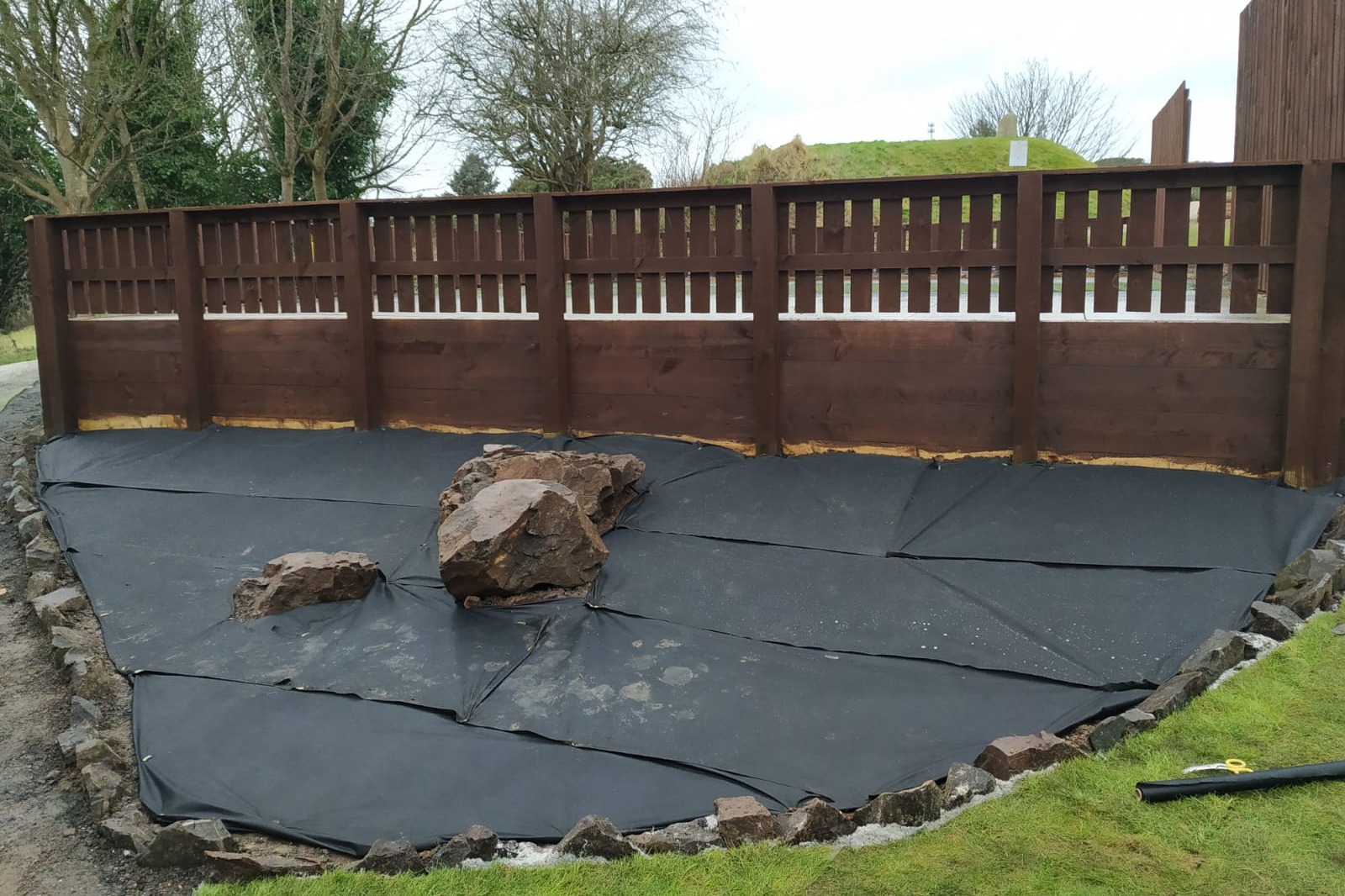
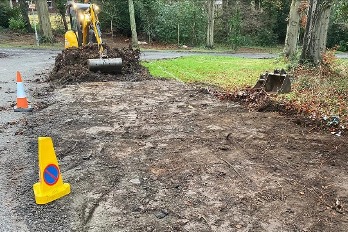
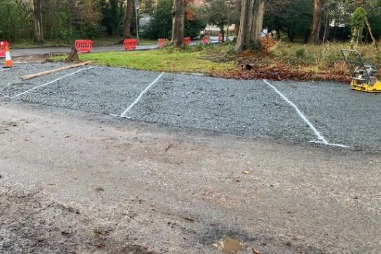
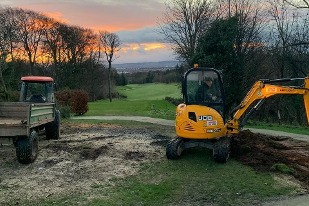
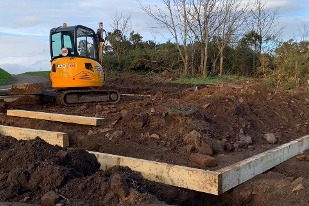
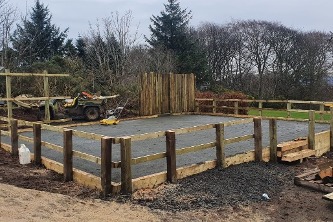


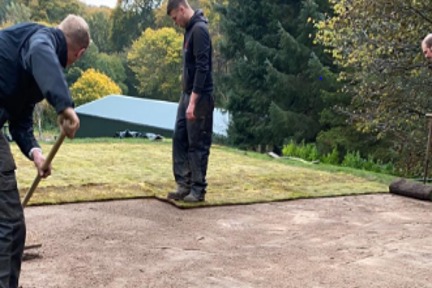
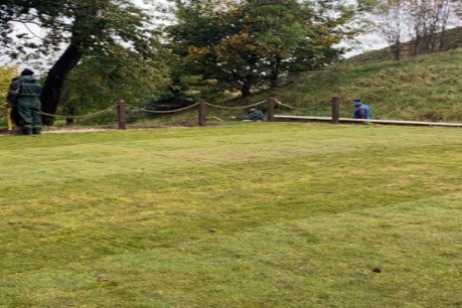
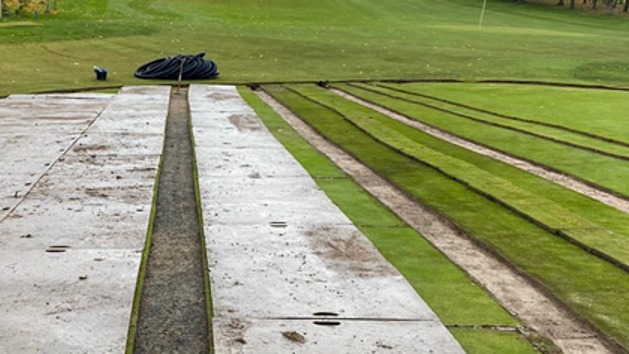

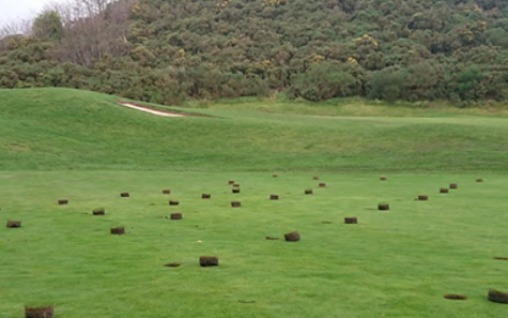
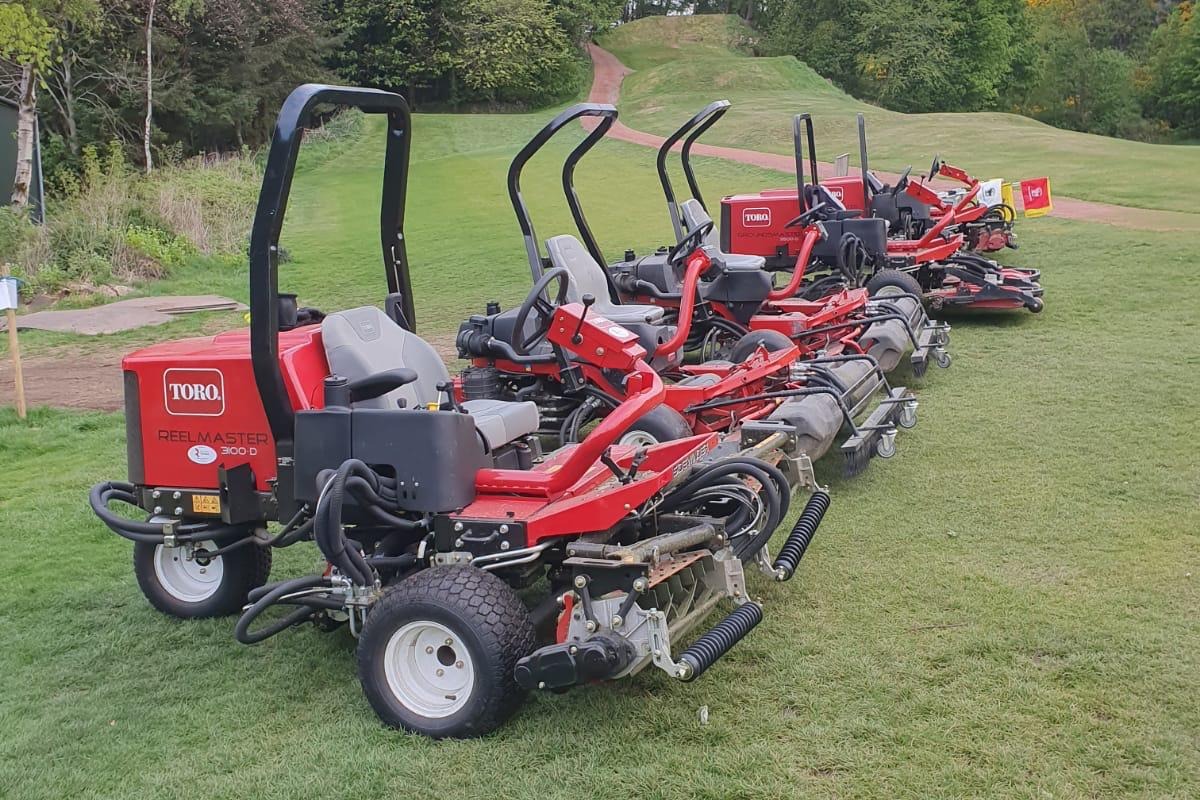
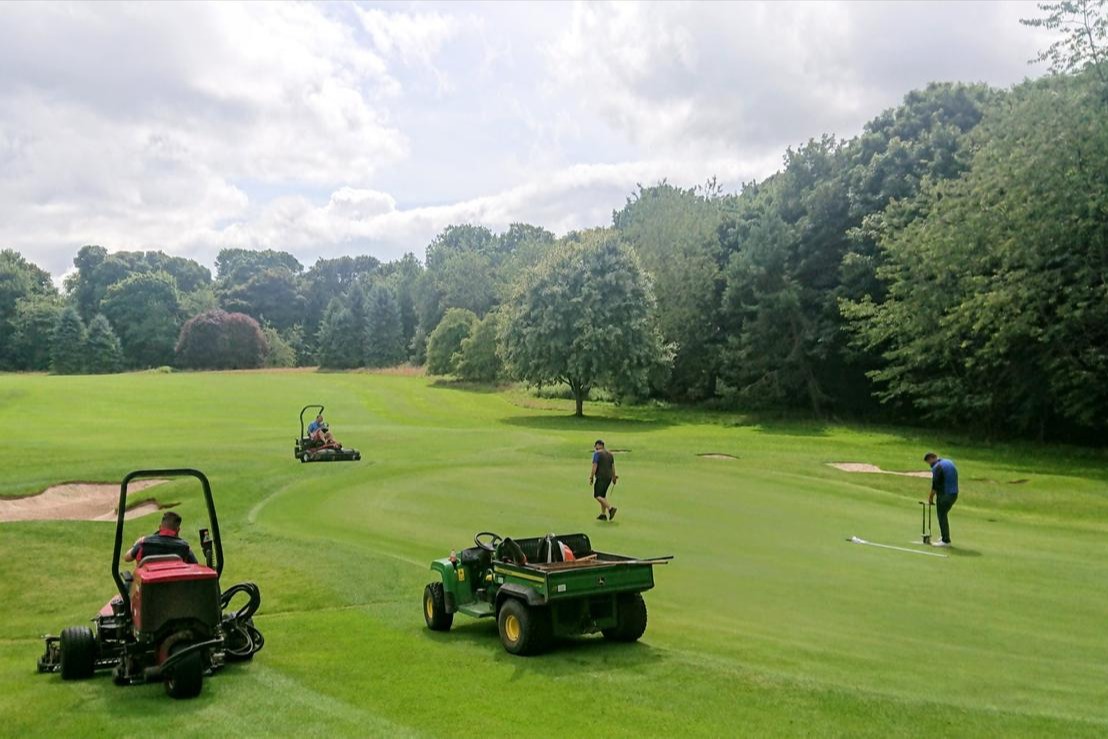
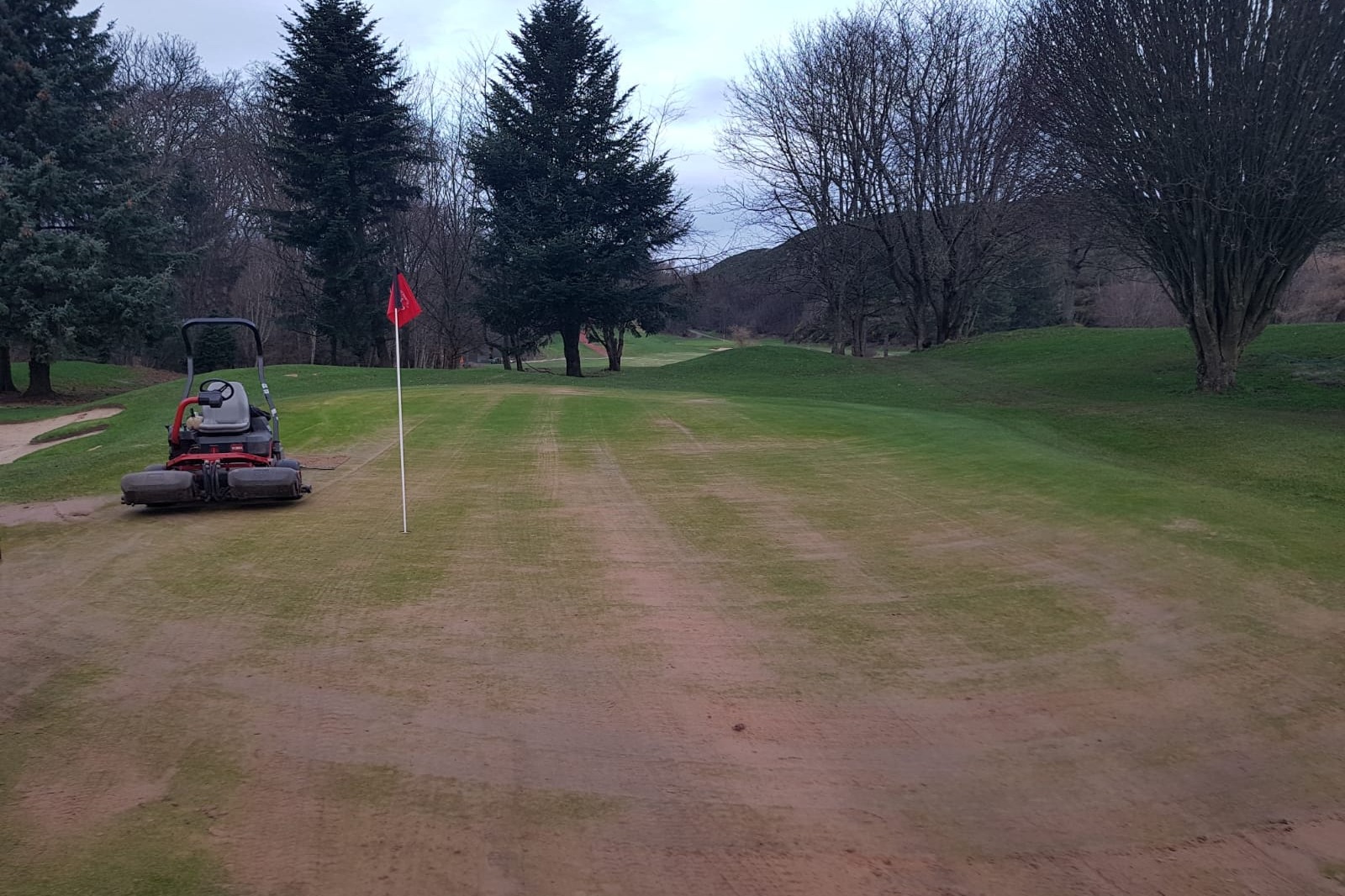
December Report
As 2020 is starting to come to a close and we all hope to get back to some normality next year with the news of the vaccine , things are looking up for 2021 , let me take you through what’s been happening on the course and our winter projects .
Drainage
This winter we have resumed the drainage programme on our greens , prior to the cip bunker project a number of our greens have had line drainage installed in them , the goal is for all greens to have primary drainage systems , our greens are 126 years old but need that help in the movement of water . The push up greens design was very common pre irrigation system to help hold moisture, using native soils and in our case clay but this leads to the problems for water to move through the soil profile, roots of the plant struggle to breathe with the lack of oxygen and access to nutrients.
15th green
15th green is one of the newer greens built in 1979, whilst installing drainage at 600 mm depths it was evident with the problems underneath, bedrock, this can be a common problem at Mortonhall golf club and our location on the braid hills wedge, straight line drainage has been installed at 2 metre spacing this helping pull the water into the drains. Instantly the drainage has firmed up the green significantly.
14th green
14th green has the same attributes as the 15th with it being a newer green, I do feel these greens were at the end of their life due to the way they had been constructed, with this drainage programme these greens will improve. We have installed a larger outlet at the front of the green with the topography of the land this will help with draining the apron and the green.
Putting green
As we all know since July we have certainly had our share of wet conditions, this has highlighted areas that have come under increased stress due to weather and increased footfall of golfers, the picture above shows our putting green, we are using an auger which is normally used to drill down for fence posts, we will be using this to bore down approx. 400 mm and replace with gravel and rootzone. This process is very simply by using our hole changer and replace the plug when complete so very little disruption , we have been in touch with courses who have been using this method to great success , Barassie golf club and Gifford golf club and also recommended by Gary Smith from STRI our agronomist .
Tee renovation
We have renovated a number of our tees including,
• 1st medal tee
• 2nd medal tee
• 2nd general play tee
• 4th medal tee including a raised black tee
• 6th medal tee
This will ongoing through years to come in our winter projects to improve our tees and add further teeing grounds.
Fairways
We have gone through a major overseeding programme this year on greens, aprons, fairways and rough areas, our fairways have been fully overseeded which contains hard fescues to perform under drought stress and more resilient to disease, recently I had a visit from Dr David Greenshields from Barenbrug who is a past member of Mortonhall and was thrilled at our hit rate from our first overseed and the definition, we will be overseeding again in the spring.
David told me that we are the only club in this area to be putting an overseeding programme in place, this will improve the quality of turf at Mortonhall and give us that definition between heights of cut.
Viewing gallery construction
HALFWAY HOUSE VIEWING GALLERY REPORT
With the great success of the horse box/ junction café situated behind the 12th and 16th medal tees, it became a very popular spot for golfers to sit and have a bite to eat and enjoy a nice hot or cold drink with great views down the 12th hole and its surroundings.
However, with this been said as much as it was a great location for taking in the beautiful views and surroundings, the seating and standing area was not great and became a health and safety issue. This was due to the area turning into a trip and fall hazard due to the uneven ground which also became very slippery underfoot when wet and icy.
The picture below shows the previous small seating and standing area, this area was a health and safety concern as I said previously however this area was not great to look at and definitely not professional enough for the high standards we have at Mortonhall golf course.
So, after a brief meeting with the team we decided to get to work on this area to make it a safer and more professional place for everyone to enjoy the halfway viewing gallery experience.
PHASE 1 – We brought in a 3-tonne mini digger to dig out our designated area which was 71m2. The mini digger was a great bit of machinery and was tested to its limits with our bedrock only being a few inches under the topsoil.
PHASE 2 - Phase 2 consisted of digging out the foundations for our sleepers to sit in. We had to do this because of how uneven the ground was previously. This made it essential to build a retaining sleeper wall to make this area as flat and as safe as possible.
PHASE 3 – With the team happy with our sleeper positions the next step was to dig out our post holes and post create our posts in behind our base sleepers. This was the start of our sleeper retaining wall. Once the posts were securely in place, we started building up with the sleepers attaching each sleeper to the posts as you can see in the pictures below
PHASE 4 - By this phase our project was starting to come together. Phase 4 was the addition of type 1 and whinn dust. The addition of the type1 gives us a strong base and helps build up our leveling height. Then we added in the whinn dust to smooth off our top surface and whacked it down tight ready for the arrival of the slabs
PHASE 5 – This was the start of all the fence work around area and the instillation of the step into the viewing gallery.
PHASE 6 – Installation of the slabs and the first coat of paint on the fence work.
PHASE 7 – Installation of astro turf path between slabs and over steps.